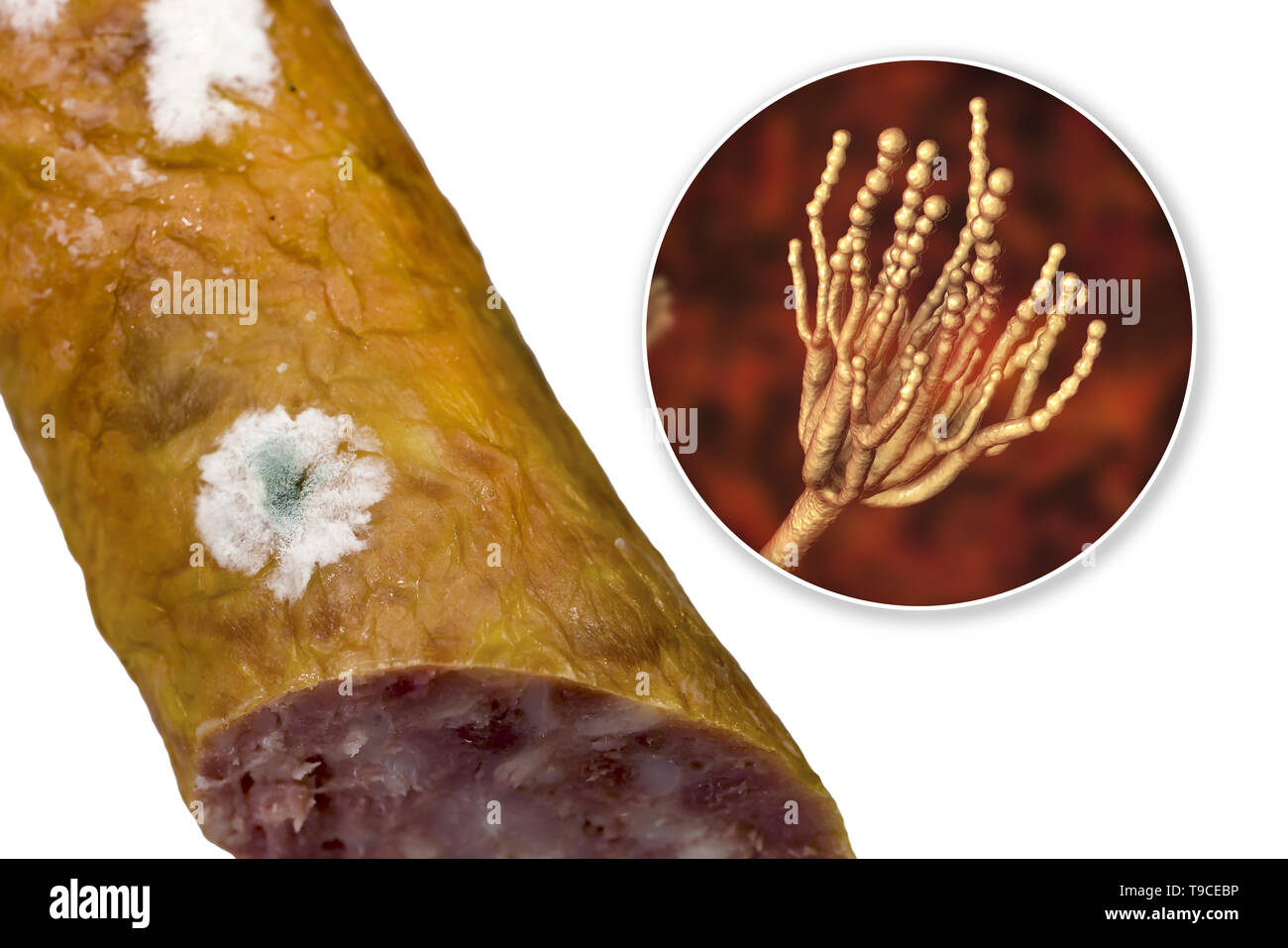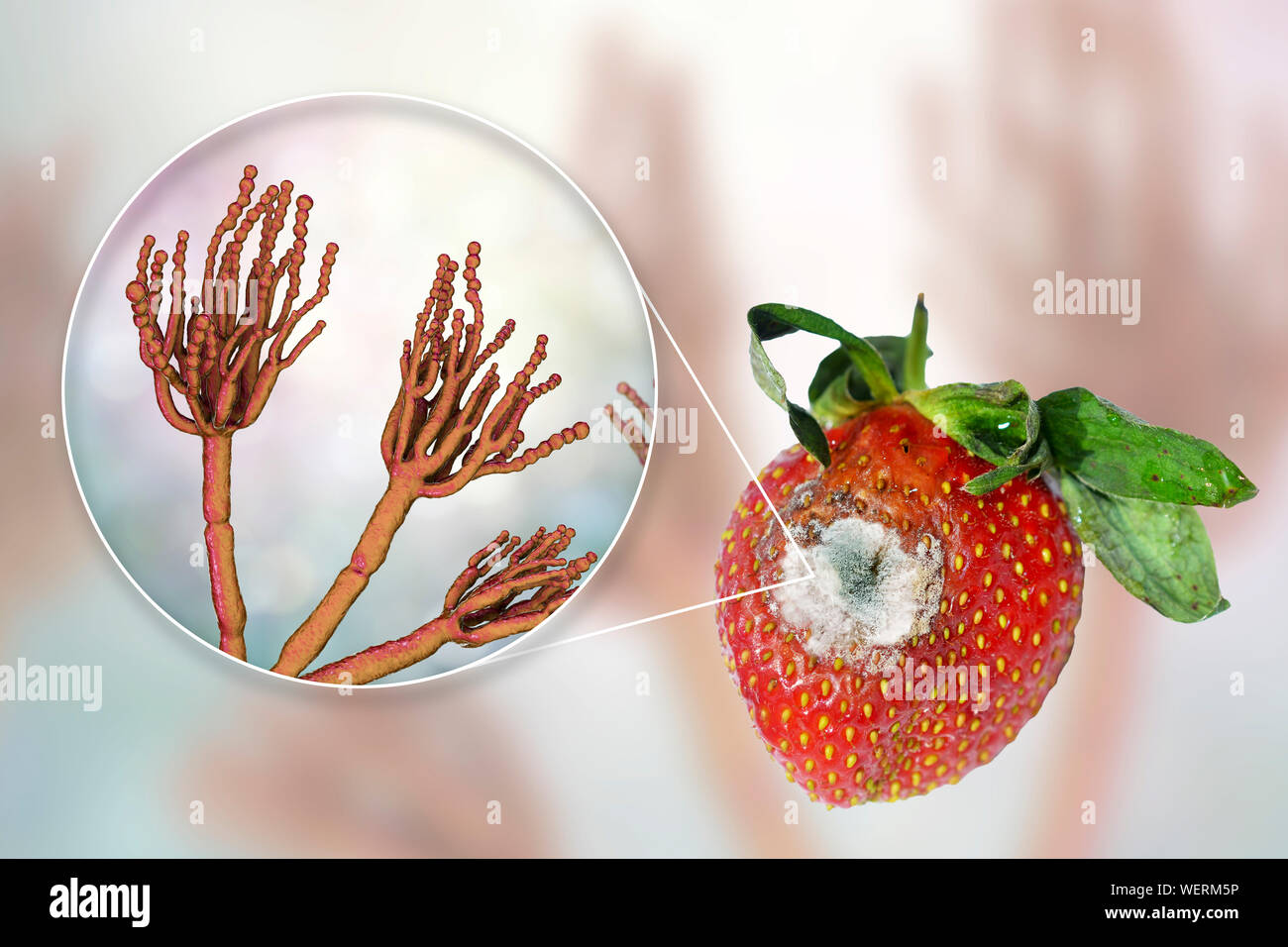Quick filters:
Penicillium sp Stock Photos and Images
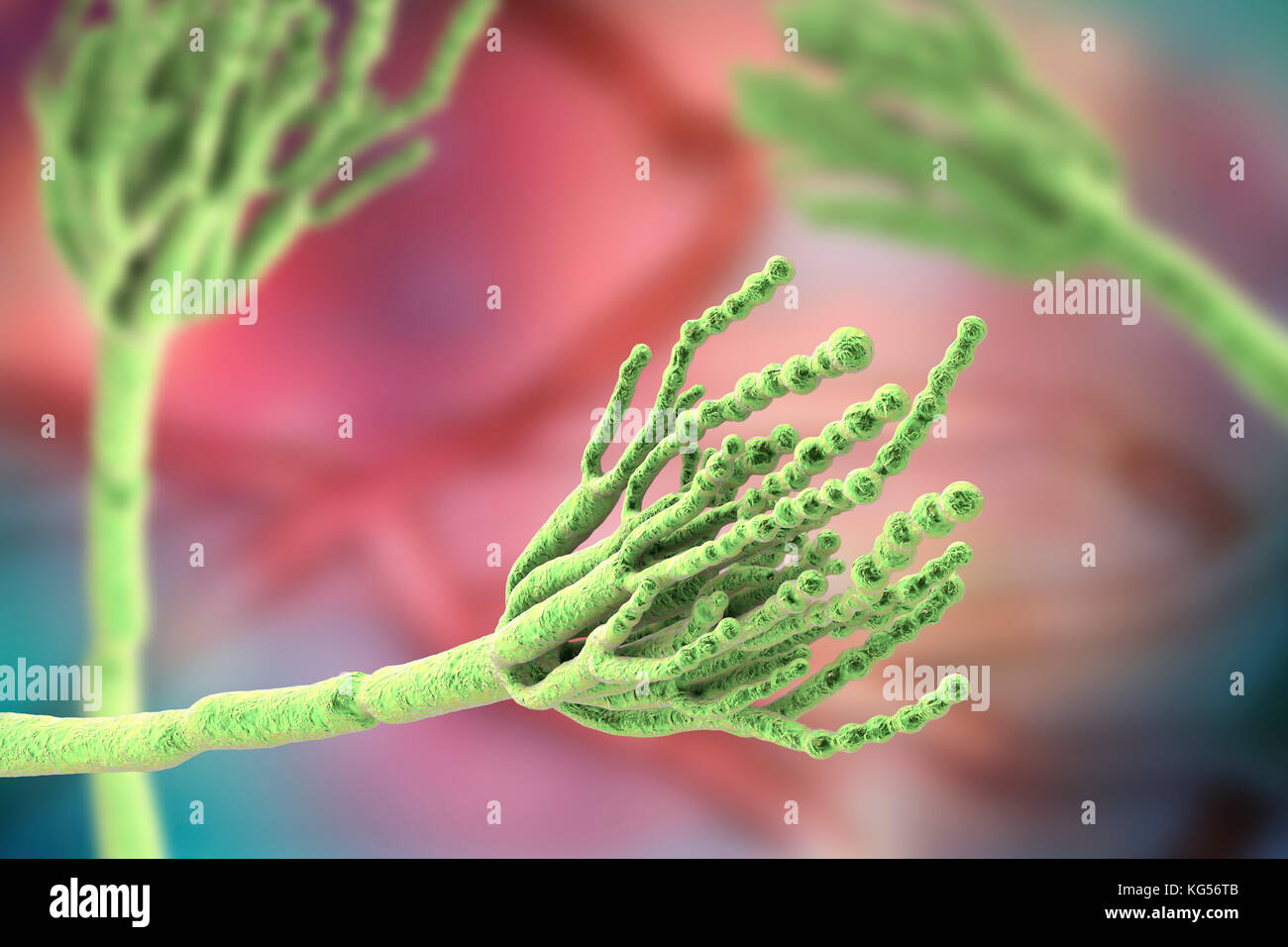 Penicillium fungus. Computer illustration of a Penicillium sp. fungus. Specialised threads, called conidiophores, are seen. Bunches of spores, called conidia, are the fungal reproductive units. The antibiotic penicillin is obtained from certain types of Penicillium fungi. Other types are used in the fermentation of cheeses. Stock Photohttps://www.alamy.com/image-license-details/?v=1https://www.alamy.com/stock-image-penicillium-fungus-computer-illustration-of-a-penicillium-sp-fungus-164842955.html
Penicillium fungus. Computer illustration of a Penicillium sp. fungus. Specialised threads, called conidiophores, are seen. Bunches of spores, called conidia, are the fungal reproductive units. The antibiotic penicillin is obtained from certain types of Penicillium fungi. Other types are used in the fermentation of cheeses. Stock Photohttps://www.alamy.com/image-license-details/?v=1https://www.alamy.com/stock-image-penicillium-fungus-computer-illustration-of-a-penicillium-sp-fungus-164842955.htmlRFKG56TB–Penicillium fungus. Computer illustration of a Penicillium sp. fungus. Specialised threads, called conidiophores, are seen. Bunches of spores, called conidia, are the fungal reproductive units. The antibiotic penicillin is obtained from certain types of Penicillium fungi. Other types are used in the fermentation of cheeses.
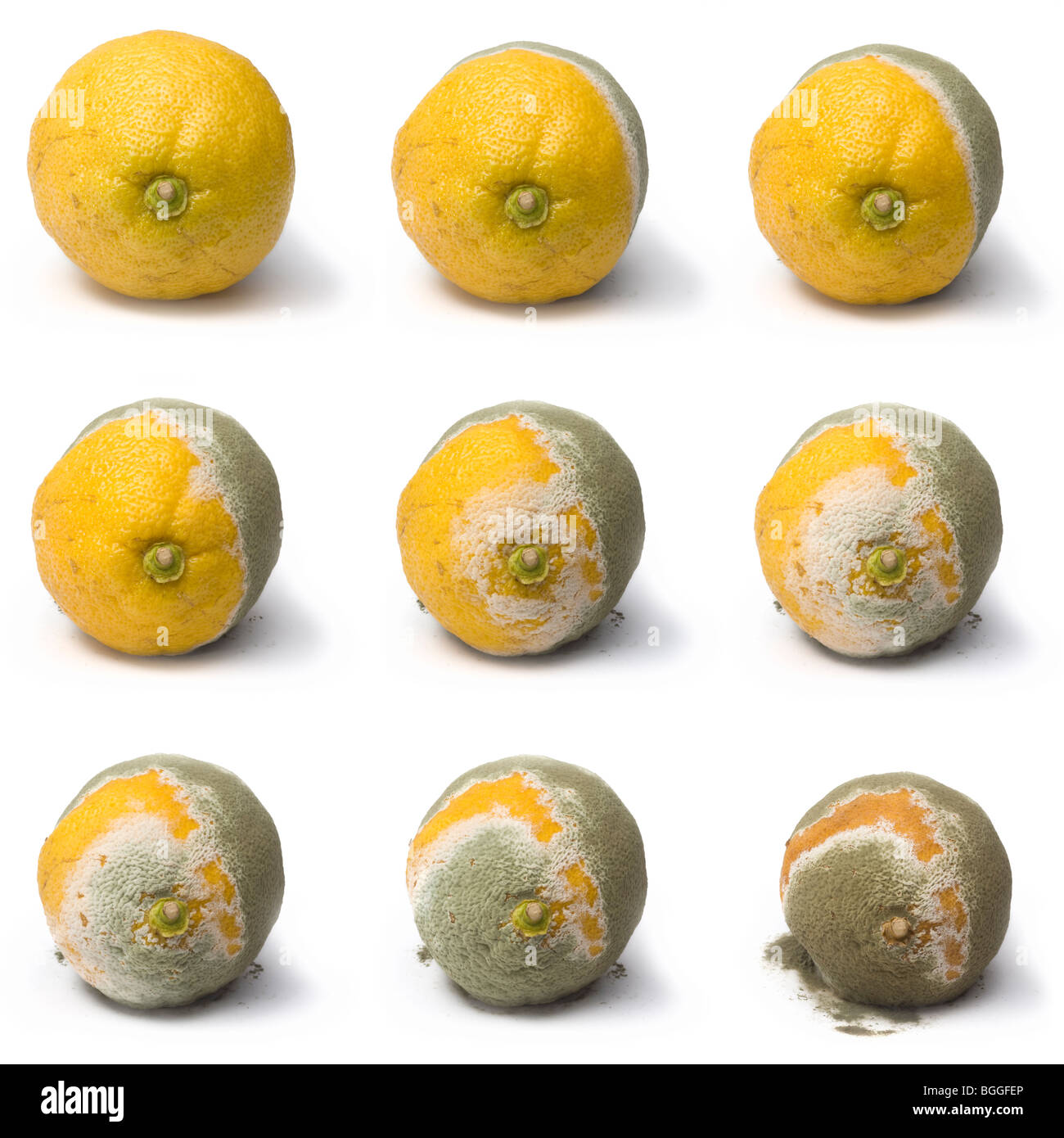 The common occurrence of penicillium mould on a decaying lemon (citrus limon). Moisissure (penicillium sp) attaquant un citron. Stock Photohttps://www.alamy.com/image-license-details/?v=1https://www.alamy.com/stock-photo-the-common-occurrence-of-penicillium-mould-on-a-decaying-lemon-citrus-27408270.html
The common occurrence of penicillium mould on a decaying lemon (citrus limon). Moisissure (penicillium sp) attaquant un citron. Stock Photohttps://www.alamy.com/image-license-details/?v=1https://www.alamy.com/stock-photo-the-common-occurrence-of-penicillium-mould-on-a-decaying-lemon-citrus-27408270.htmlRMBGGFEP–The common occurrence of penicillium mould on a decaying lemon (citrus limon). Moisissure (penicillium sp) attaquant un citron.
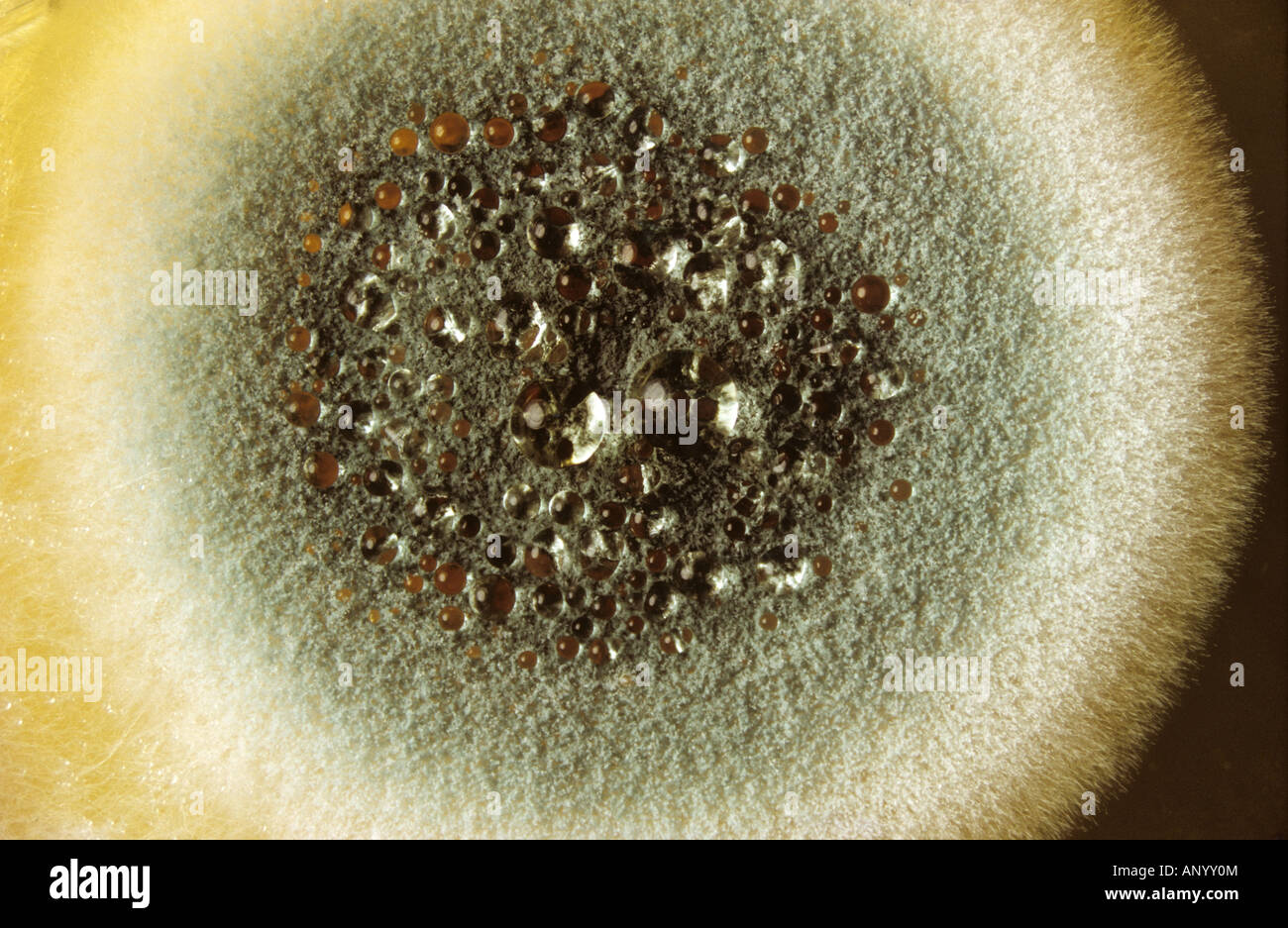 Penicillium sp culture with exuded water droplets on a nutrient agar plate Stock Photohttps://www.alamy.com/image-license-details/?v=1https://www.alamy.com/stock-photo-penicillium-sp-culture-with-exuded-water-droplets-on-a-nutrient-agar-15629491.html
Penicillium sp culture with exuded water droplets on a nutrient agar plate Stock Photohttps://www.alamy.com/image-license-details/?v=1https://www.alamy.com/stock-photo-penicillium-sp-culture-with-exuded-water-droplets-on-a-nutrient-agar-15629491.htmlRMANYY0M–Penicillium sp culture with exuded water droplets on a nutrient agar plate
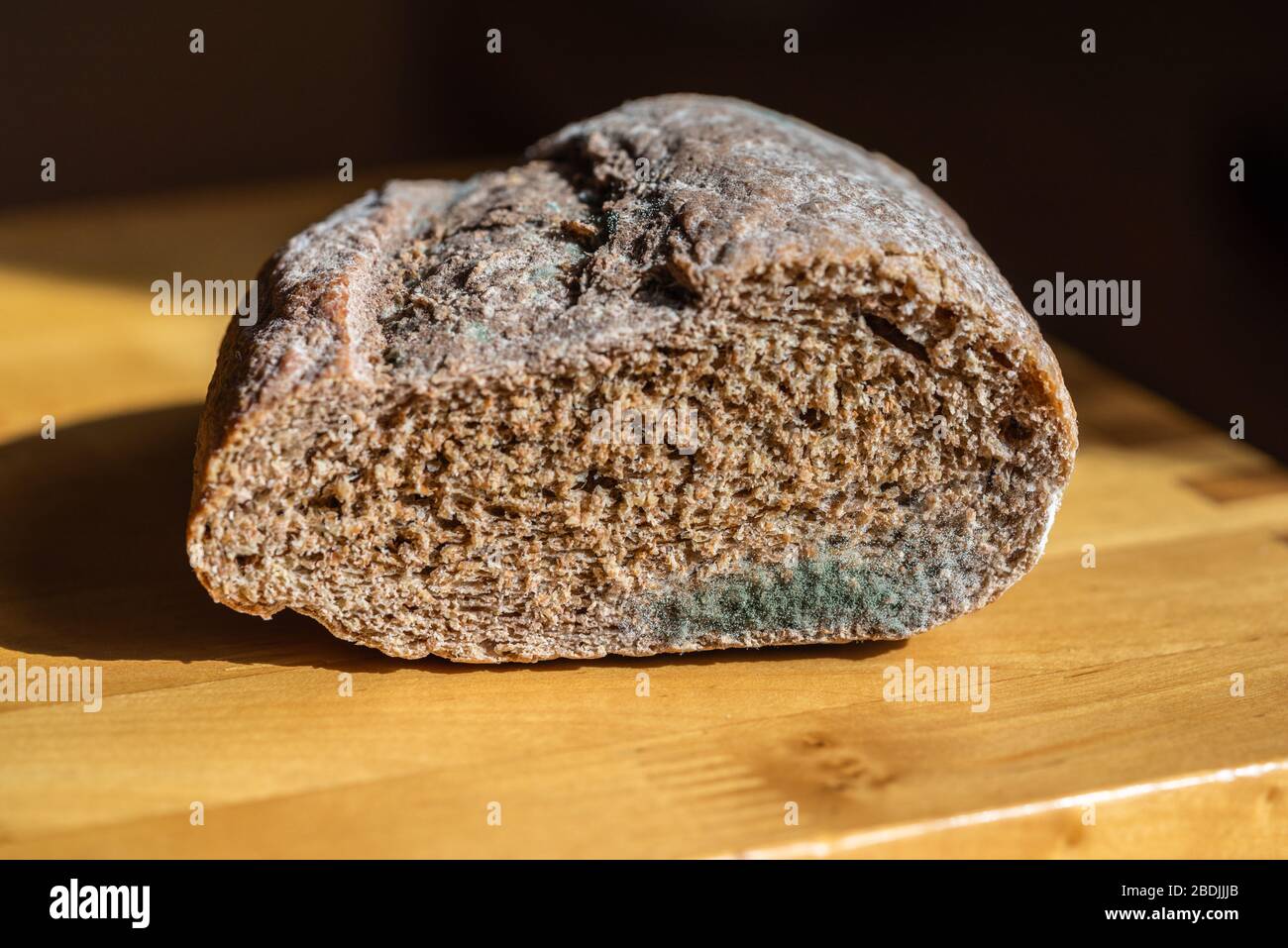 Penicillium sp. mould on bread Stock Photohttps://www.alamy.com/image-license-details/?v=1https://www.alamy.com/penicillium-sp-mould-on-bread-image352607651.html
Penicillium sp. mould on bread Stock Photohttps://www.alamy.com/image-license-details/?v=1https://www.alamy.com/penicillium-sp-mould-on-bread-image352607651.htmlRF2BDJJJB–Penicillium sp. mould on bread
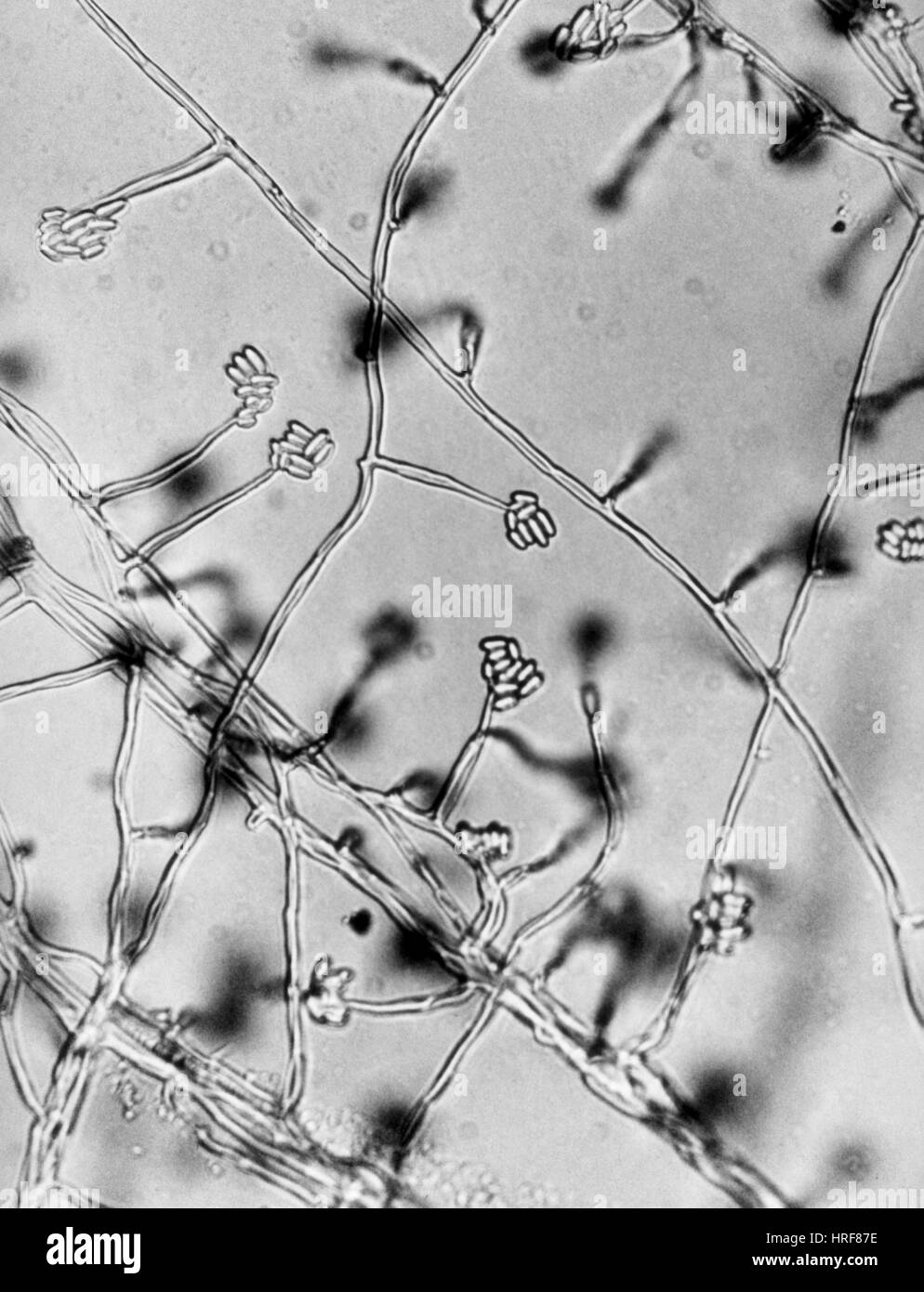 Penicillium sp. Fungi, LM Stock Photohttps://www.alamy.com/image-license-details/?v=1https://www.alamy.com/stock-photo-penicillium-sp-fungi-lm-134945426.html
Penicillium sp. Fungi, LM Stock Photohttps://www.alamy.com/image-license-details/?v=1https://www.alamy.com/stock-photo-penicillium-sp-fungi-lm-134945426.htmlRMHRF87E–Penicillium sp. Fungi, LM
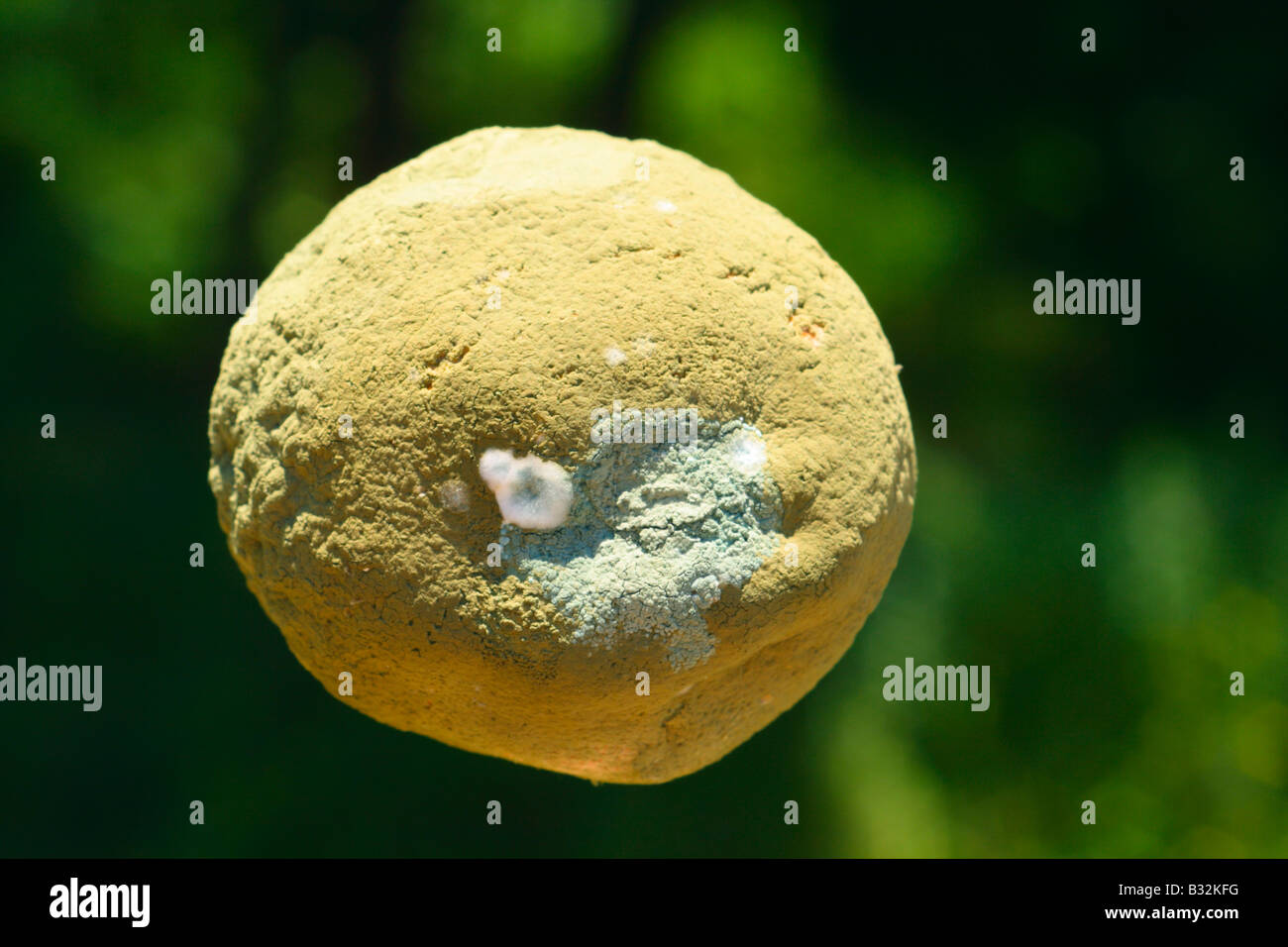 Green mould, Penicillium sp. covering an orange fruit Stock Photohttps://www.alamy.com/image-license-details/?v=1https://www.alamy.com/stock-photo-green-mould-penicillium-sp-covering-an-orange-fruit-19113572.html
Green mould, Penicillium sp. covering an orange fruit Stock Photohttps://www.alamy.com/image-license-details/?v=1https://www.alamy.com/stock-photo-green-mould-penicillium-sp-covering-an-orange-fruit-19113572.htmlRMB32KFG–Green mould, Penicillium sp. covering an orange fruit
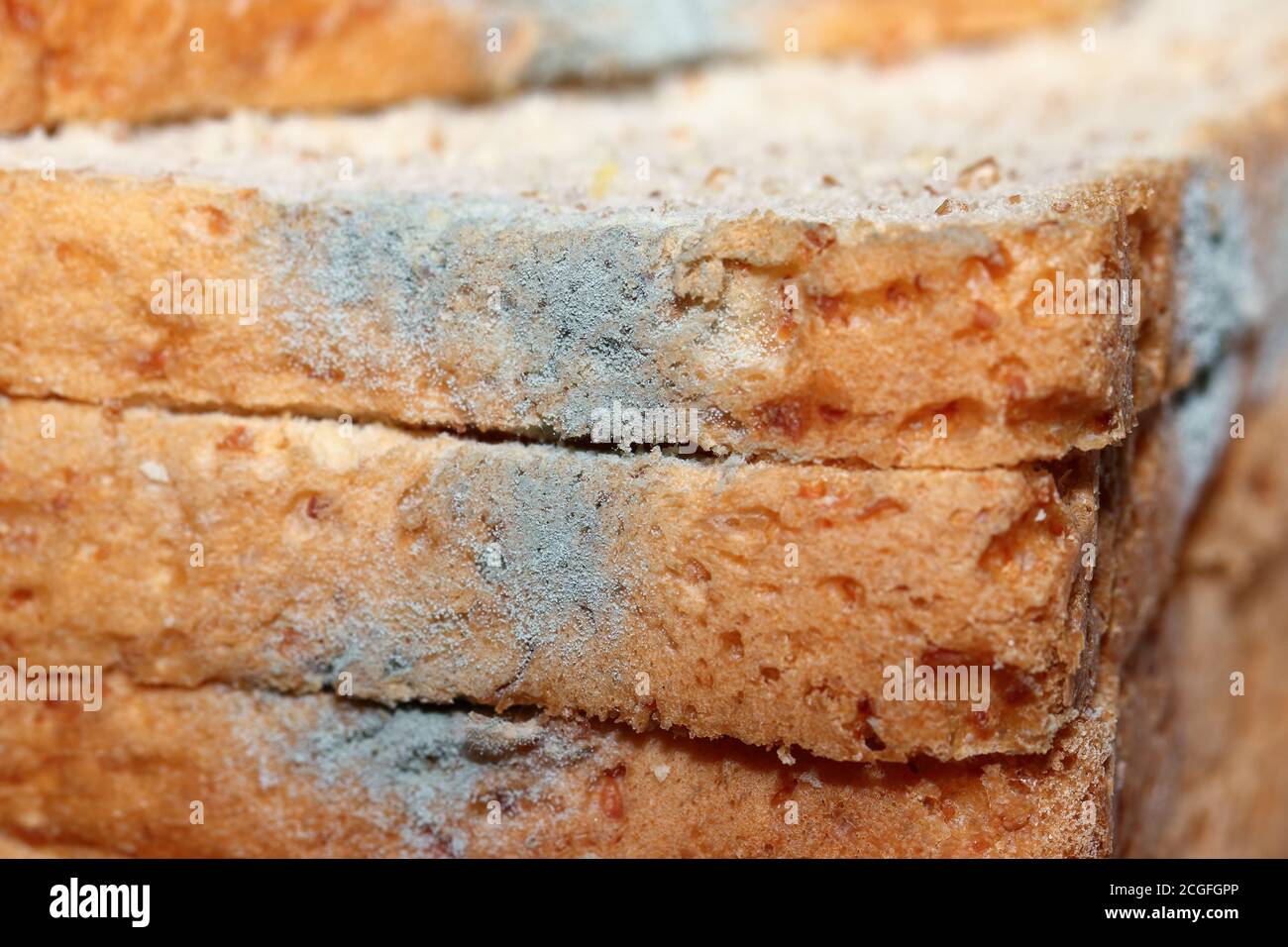 Fungus mold (Penicillium sp.) growing on expire slice whole wheat bread Stock Photohttps://www.alamy.com/image-license-details/?v=1https://www.alamy.com/fungus-mold-penicillium-sp-growing-on-expire-slice-whole-wheat-bread-image371594686.html
Fungus mold (Penicillium sp.) growing on expire slice whole wheat bread Stock Photohttps://www.alamy.com/image-license-details/?v=1https://www.alamy.com/fungus-mold-penicillium-sp-growing-on-expire-slice-whole-wheat-bread-image371594686.htmlRF2CGFGPP–Fungus mold (Penicillium sp.) growing on expire slice whole wheat bread
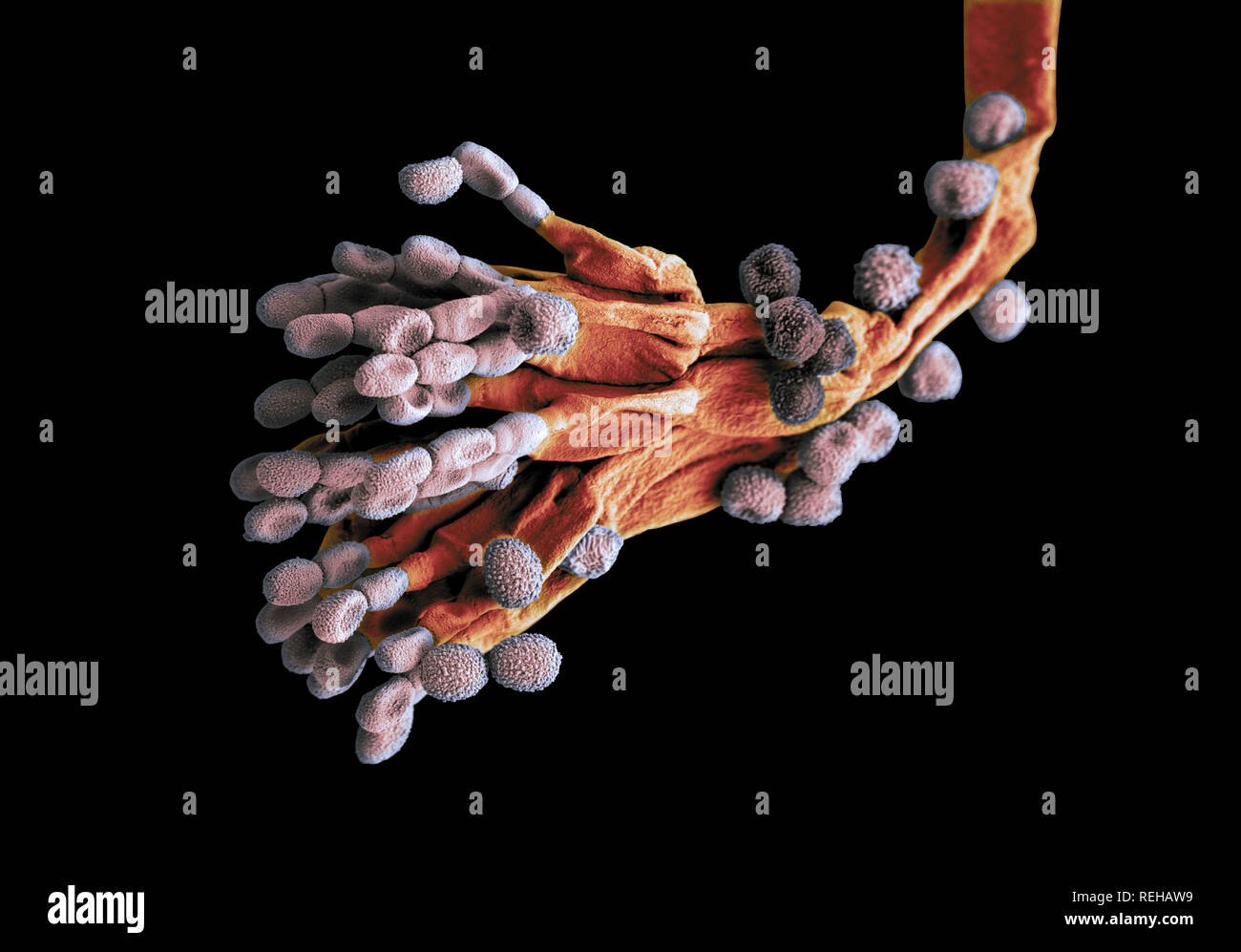 Penicillium Chrysogenum - SEM Stock Photohttps://www.alamy.com/image-license-details/?v=1https://www.alamy.com/penicillium-chrysogenum-sem-image232721701.html
Penicillium Chrysogenum - SEM Stock Photohttps://www.alamy.com/image-license-details/?v=1https://www.alamy.com/penicillium-chrysogenum-sem-image232721701.htmlRMREHAW9–Penicillium Chrysogenum - SEM
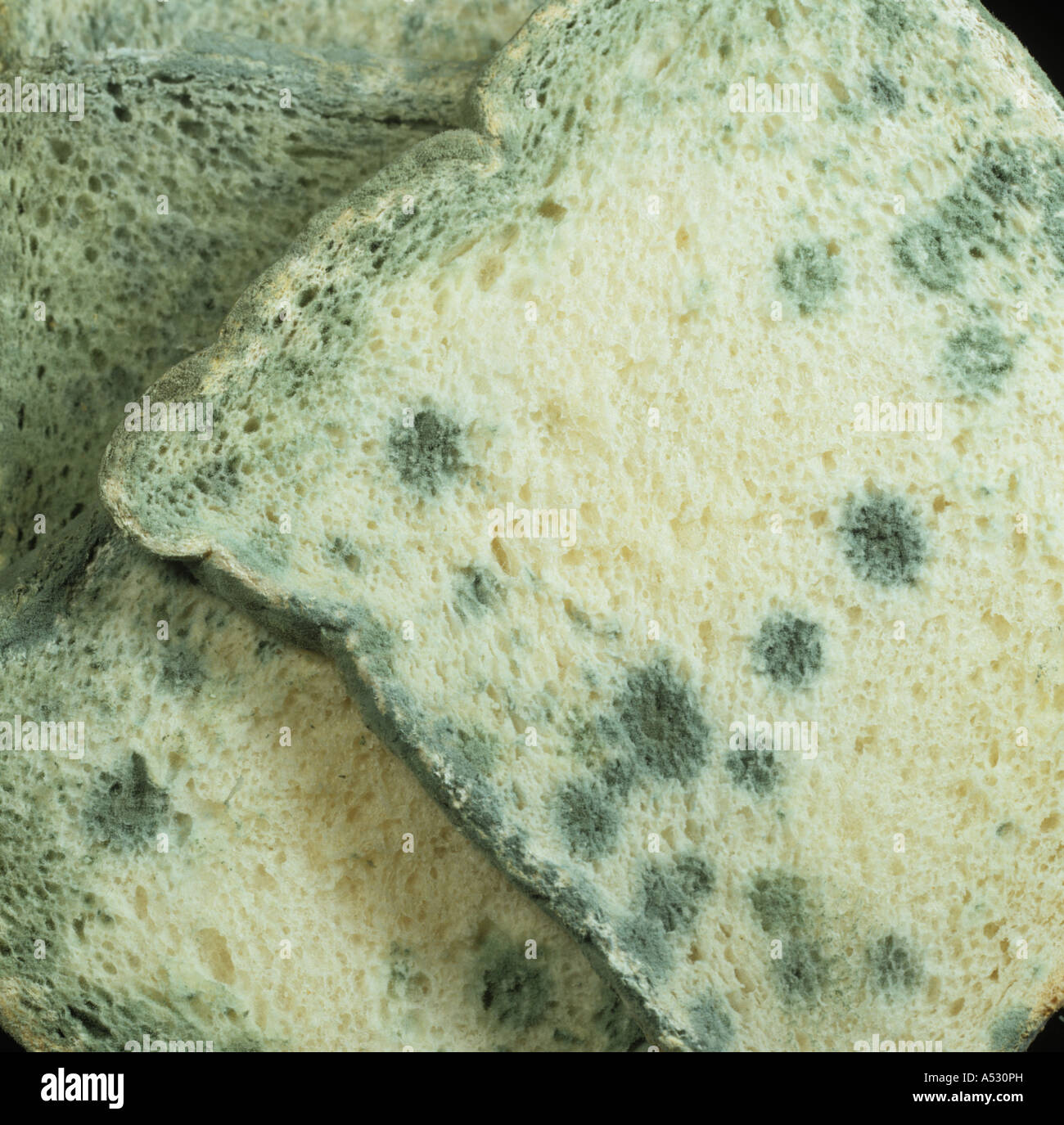 Penicillin mould Penicillium sp on sliced white bread Stock Photohttps://www.alamy.com/image-license-details/?v=1https://www.alamy.com/stock-photo-penicillin-mould-penicillium-sp-on-sliced-white-bread-11180104.html
Penicillin mould Penicillium sp on sliced white bread Stock Photohttps://www.alamy.com/image-license-details/?v=1https://www.alamy.com/stock-photo-penicillin-mould-penicillium-sp-on-sliced-white-bread-11180104.htmlRMA530PH–Penicillin mould Penicillium sp on sliced white bread
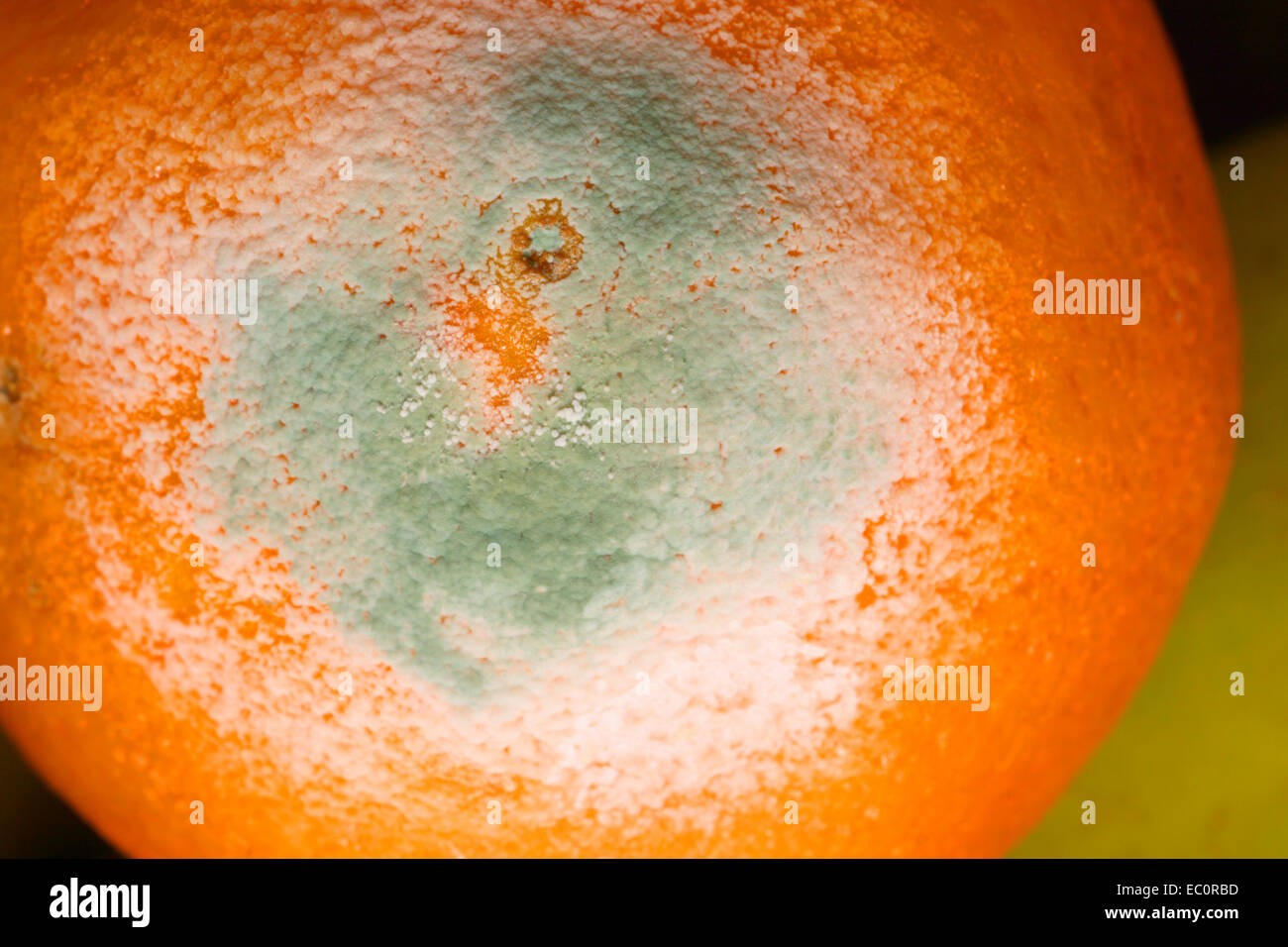 Green mould, Penicillium sp. on orange fruit Stock Photohttps://www.alamy.com/image-license-details/?v=1https://www.alamy.com/stock-photo-green-mould-penicillium-sp-on-orange-fruit-76235697.html
Green mould, Penicillium sp. on orange fruit Stock Photohttps://www.alamy.com/image-license-details/?v=1https://www.alamy.com/stock-photo-green-mould-penicillium-sp-on-orange-fruit-76235697.htmlRMEC0RBD–Green mould, Penicillium sp. on orange fruit
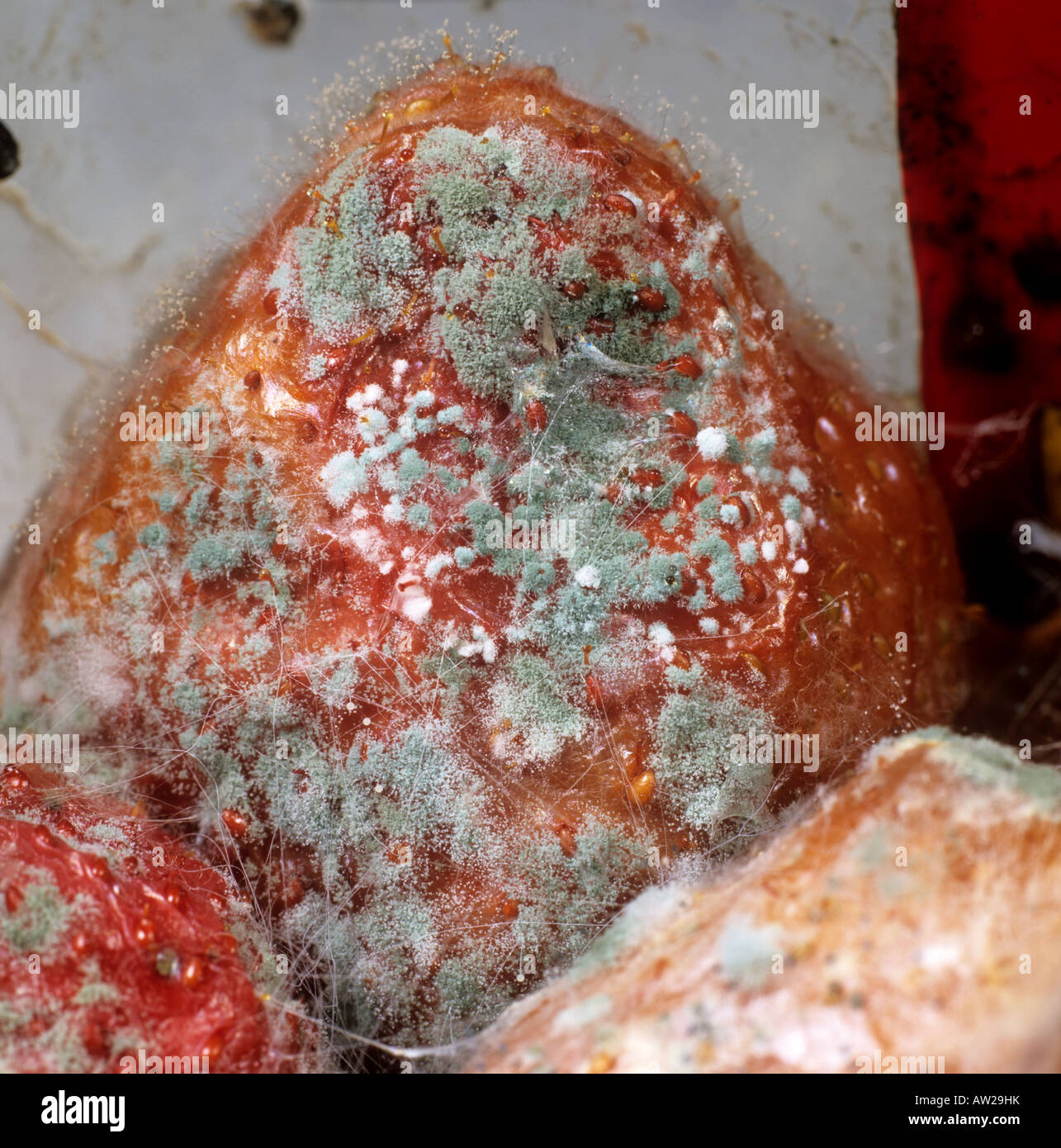 Storage mould Penicillium sp with other fungi on strawberry fruit Stock Photohttps://www.alamy.com/image-license-details/?v=1https://www.alamy.com/stock-photo-storage-mould-penicillium-sp-with-other-fungi-on-strawberry-fruit-16442142.html
Storage mould Penicillium sp with other fungi on strawberry fruit Stock Photohttps://www.alamy.com/image-license-details/?v=1https://www.alamy.com/stock-photo-storage-mould-penicillium-sp-with-other-fungi-on-strawberry-fruit-16442142.htmlRMAW29HK–Storage mould Penicillium sp with other fungi on strawberry fruit
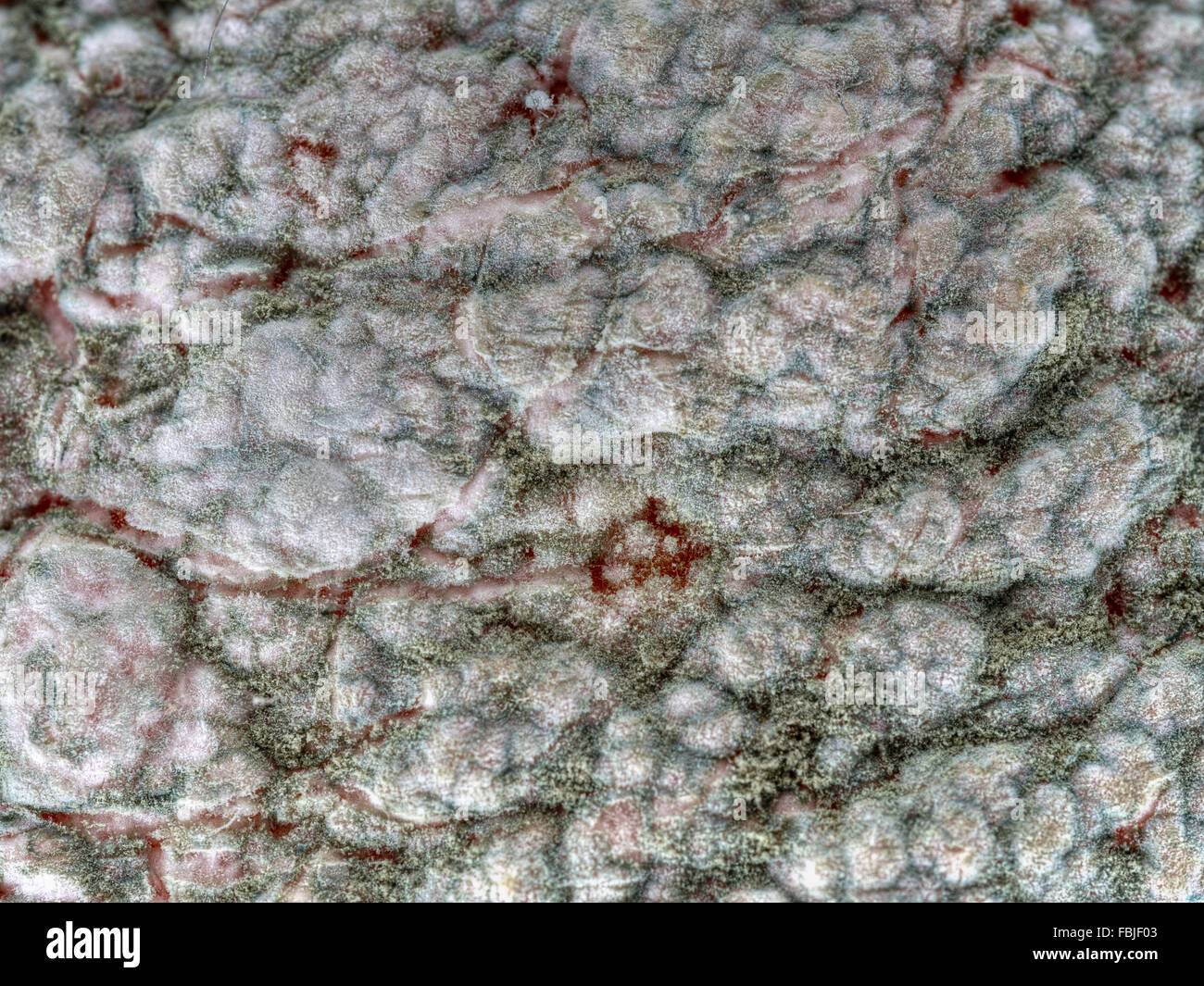 Fruit rot on mandarin orange. Probably Penicillium sp. Macro. Stock Photohttps://www.alamy.com/image-license-details/?v=1https://www.alamy.com/stock-photo-fruit-rot-on-mandarin-orange-probably-penicillium-sp-macro-93219955.html
Fruit rot on mandarin orange. Probably Penicillium sp. Macro. Stock Photohttps://www.alamy.com/image-license-details/?v=1https://www.alamy.com/stock-photo-fruit-rot-on-mandarin-orange-probably-penicillium-sp-macro-93219955.htmlRFFBJF03–Fruit rot on mandarin orange. Probably Penicillium sp. Macro.
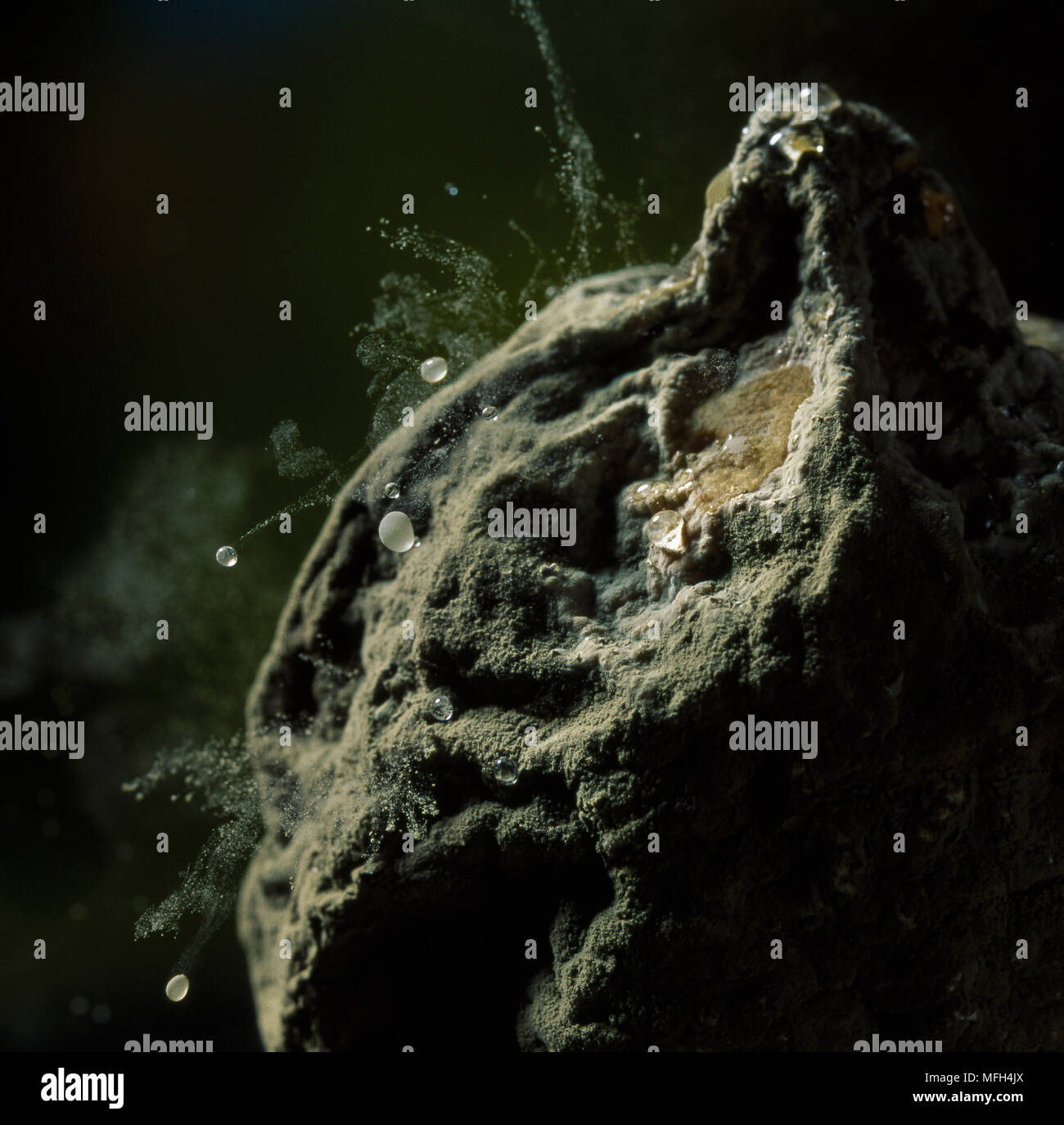 MOULD on lemon Penicillium sp. with raindrops bouncing off Stock Photohttps://www.alamy.com/image-license-details/?v=1https://www.alamy.com/mould-on-lemon-penicillium-sp-with-raindrops-bouncing-off-image181700370.html
MOULD on lemon Penicillium sp. with raindrops bouncing off Stock Photohttps://www.alamy.com/image-license-details/?v=1https://www.alamy.com/mould-on-lemon-penicillium-sp-with-raindrops-bouncing-off-image181700370.htmlRMMFH4JX–MOULD on lemon Penicillium sp. with raindrops bouncing off
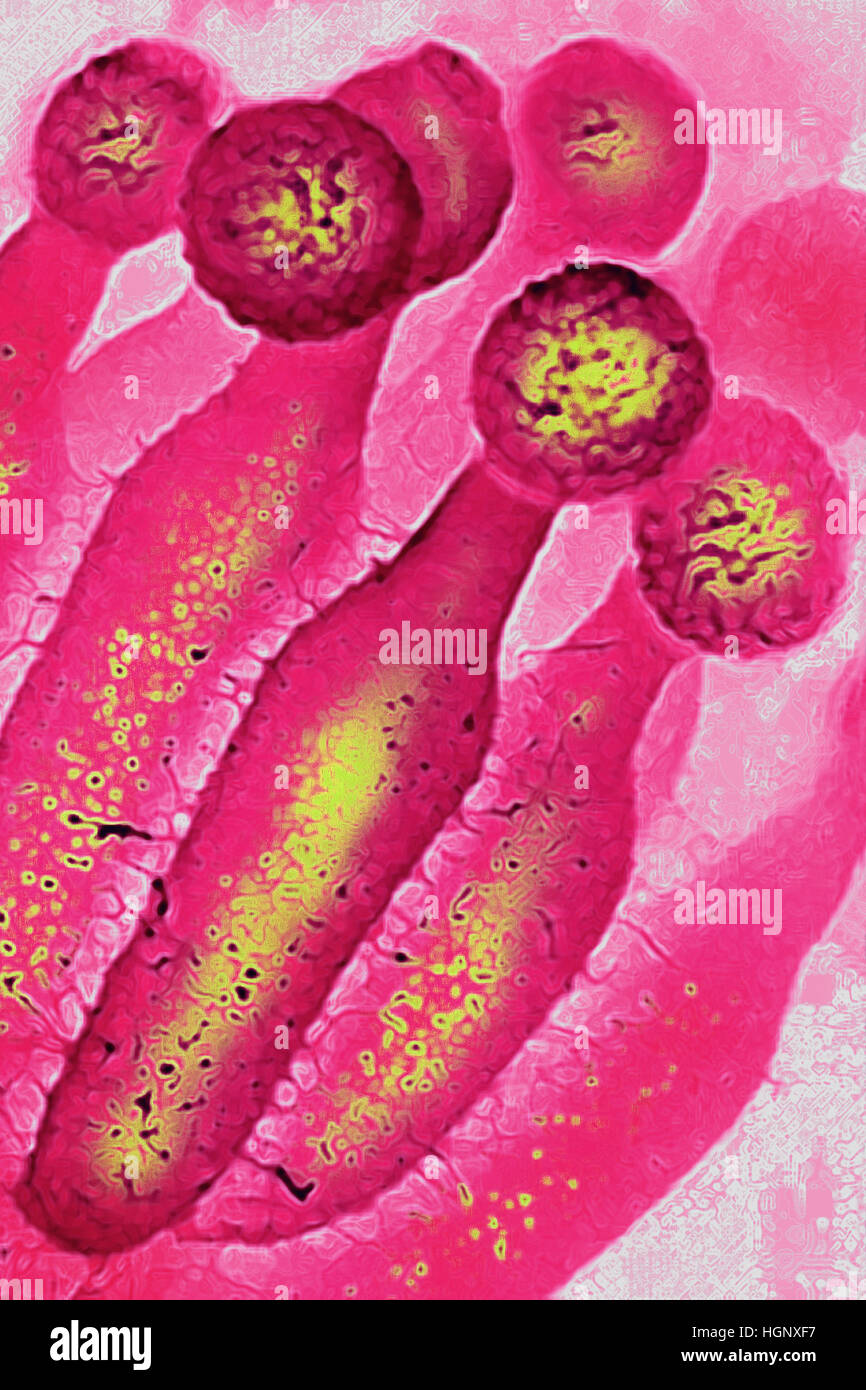 PENICILLIUM CHRYSOGENUM Stock Photohttps://www.alamy.com/image-license-details/?v=1https://www.alamy.com/stock-photo-penicillium-chrysogenum-130788875.html
PENICILLIUM CHRYSOGENUM Stock Photohttps://www.alamy.com/image-license-details/?v=1https://www.alamy.com/stock-photo-penicillium-chrysogenum-130788875.htmlRMHGNXF7–PENICILLIUM CHRYSOGENUM
 Mouldy citrus clementine fruit. Penicillium sp. fungus growing on a Citrus fruit. The fungus has spread over the surface of the fruit, producing a net Stock Photohttps://www.alamy.com/image-license-details/?v=1https://www.alamy.com/mouldy-citrus-clementine-fruit-penicillium-sp-fungus-growing-on-a-citrus-fruit-the-fungus-has-spread-over-the-surface-of-the-fruit-producing-a-net-image245525560.html
Mouldy citrus clementine fruit. Penicillium sp. fungus growing on a Citrus fruit. The fungus has spread over the surface of the fruit, producing a net Stock Photohttps://www.alamy.com/image-license-details/?v=1https://www.alamy.com/mouldy-citrus-clementine-fruit-penicillium-sp-fungus-growing-on-a-citrus-fruit-the-fungus-has-spread-over-the-surface-of-the-fruit-producing-a-net-image245525560.htmlRMT7CJA0–Mouldy citrus clementine fruit. Penicillium sp. fungus growing on a Citrus fruit. The fungus has spread over the surface of the fruit, producing a net
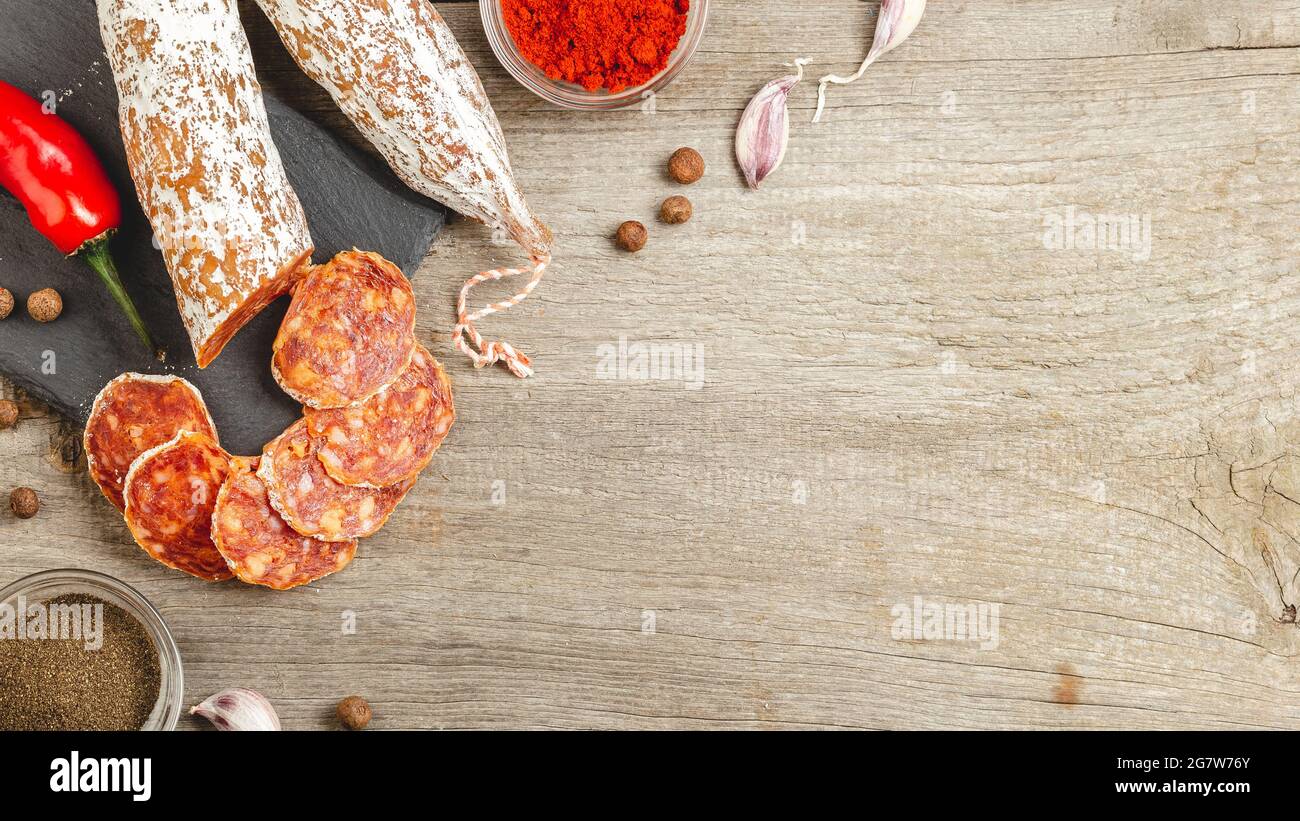 Sliced Chorizo Sausage with Penicillium Edible Mold on the outside on a wooden background with smoked paprika, chili, garlic and black pepper. Copy sp Stock Photohttps://www.alamy.com/image-license-details/?v=1https://www.alamy.com/sliced-chorizo-sausage-with-penicillium-edible-mold-on-the-outside-on-a-wooden-background-with-smoked-paprika-chili-garlic-and-black-pepper-copy-sp-image435116275.html
Sliced Chorizo Sausage with Penicillium Edible Mold on the outside on a wooden background with smoked paprika, chili, garlic and black pepper. Copy sp Stock Photohttps://www.alamy.com/image-license-details/?v=1https://www.alamy.com/sliced-chorizo-sausage-with-penicillium-edible-mold-on-the-outside-on-a-wooden-background-with-smoked-paprika-chili-garlic-and-black-pepper-copy-sp-image435116275.htmlRF2G7W76Y–Sliced Chorizo Sausage with Penicillium Edible Mold on the outside on a wooden background with smoked paprika, chili, garlic and black pepper. Copy sp
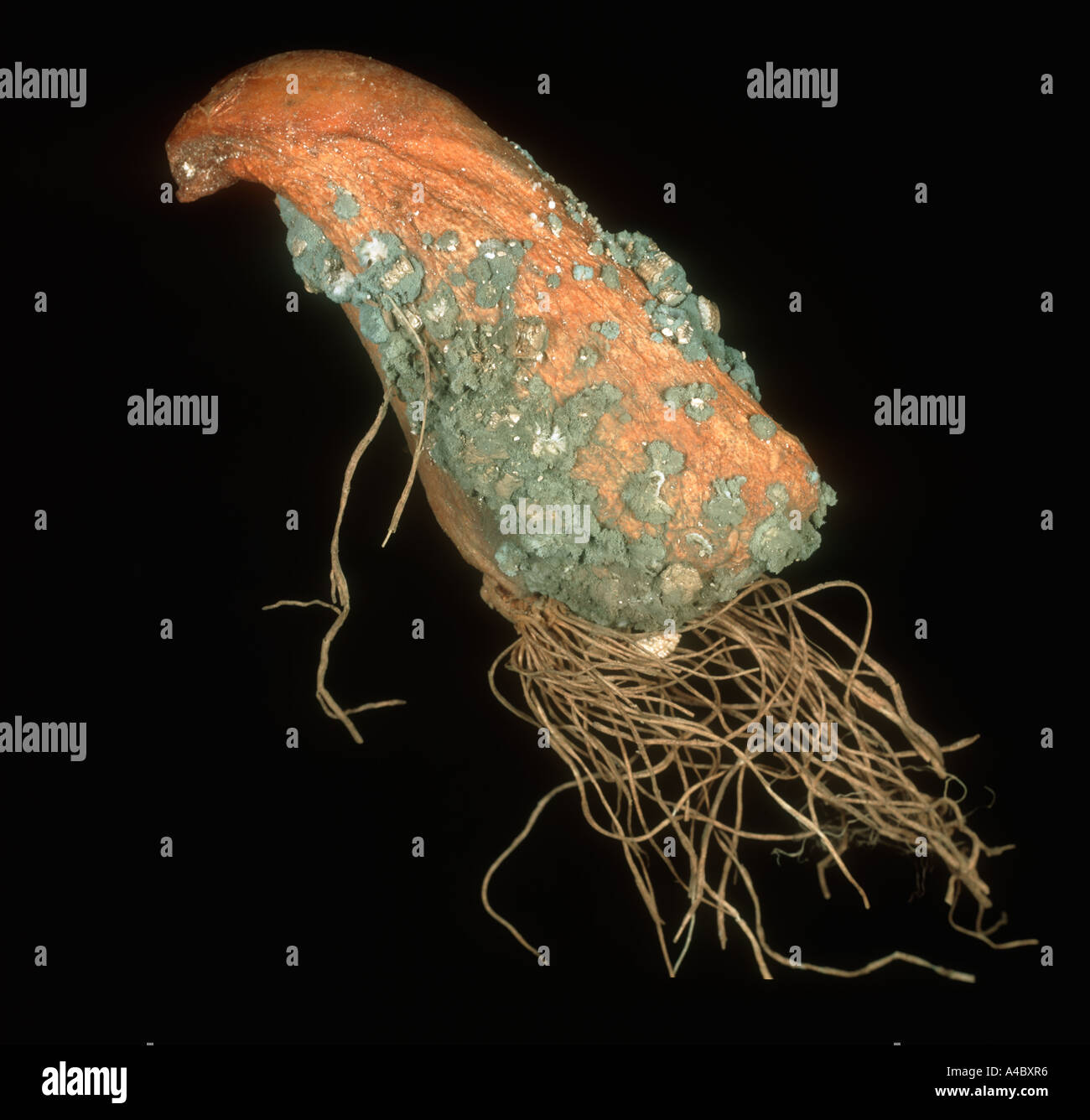 Blue storage mould rot Penicillium sp on dogs tooth violet Erythronium spp bulb Stock Photohttps://www.alamy.com/image-license-details/?v=1https://www.alamy.com/blue-storage-mould-rot-penicillium-sp-on-dogs-tooth-violet-erythronium-image6286069.html
Blue storage mould rot Penicillium sp on dogs tooth violet Erythronium spp bulb Stock Photohttps://www.alamy.com/image-license-details/?v=1https://www.alamy.com/blue-storage-mould-rot-penicillium-sp-on-dogs-tooth-violet-erythronium-image6286069.htmlRMA4BXR6–Blue storage mould rot Penicillium sp on dogs tooth violet Erythronium spp bulb
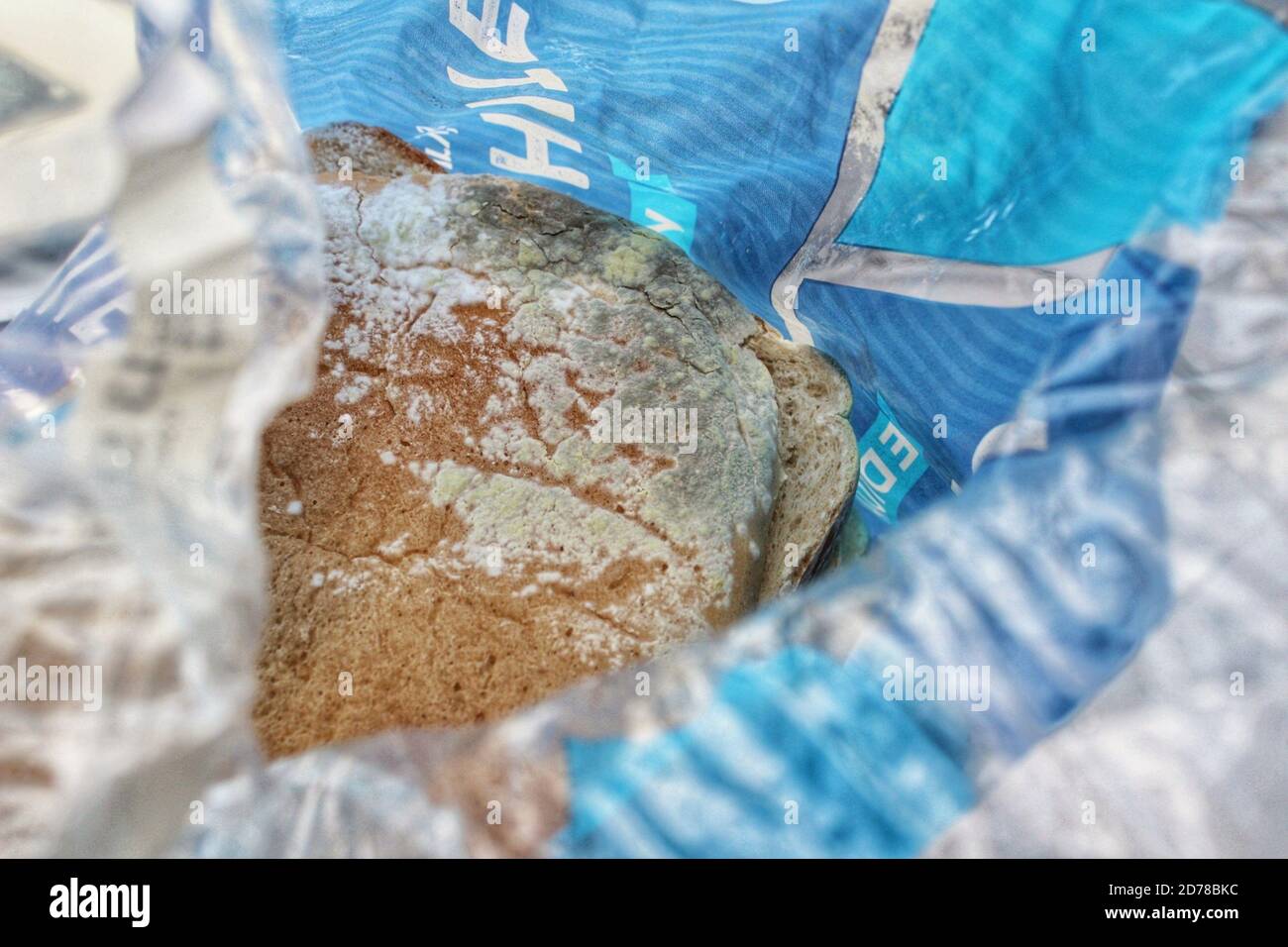 Penicillium chrysogenum mould growing on a loaf of bread. Penicillium is used to make the antibiotic penicllin Stock Photohttps://www.alamy.com/image-license-details/?v=1https://www.alamy.com/penicillium-chrysogenum-mould-growing-on-a-loaf-of-bread-penicillium-is-used-to-make-the-antibiotic-penicllin-image383115472.html
Penicillium chrysogenum mould growing on a loaf of bread. Penicillium is used to make the antibiotic penicllin Stock Photohttps://www.alamy.com/image-license-details/?v=1https://www.alamy.com/penicillium-chrysogenum-mould-growing-on-a-loaf-of-bread-penicillium-is-used-to-make-the-antibiotic-penicllin-image383115472.htmlRF2D78BKC–Penicillium chrysogenum mould growing on a loaf of bread. Penicillium is used to make the antibiotic penicllin
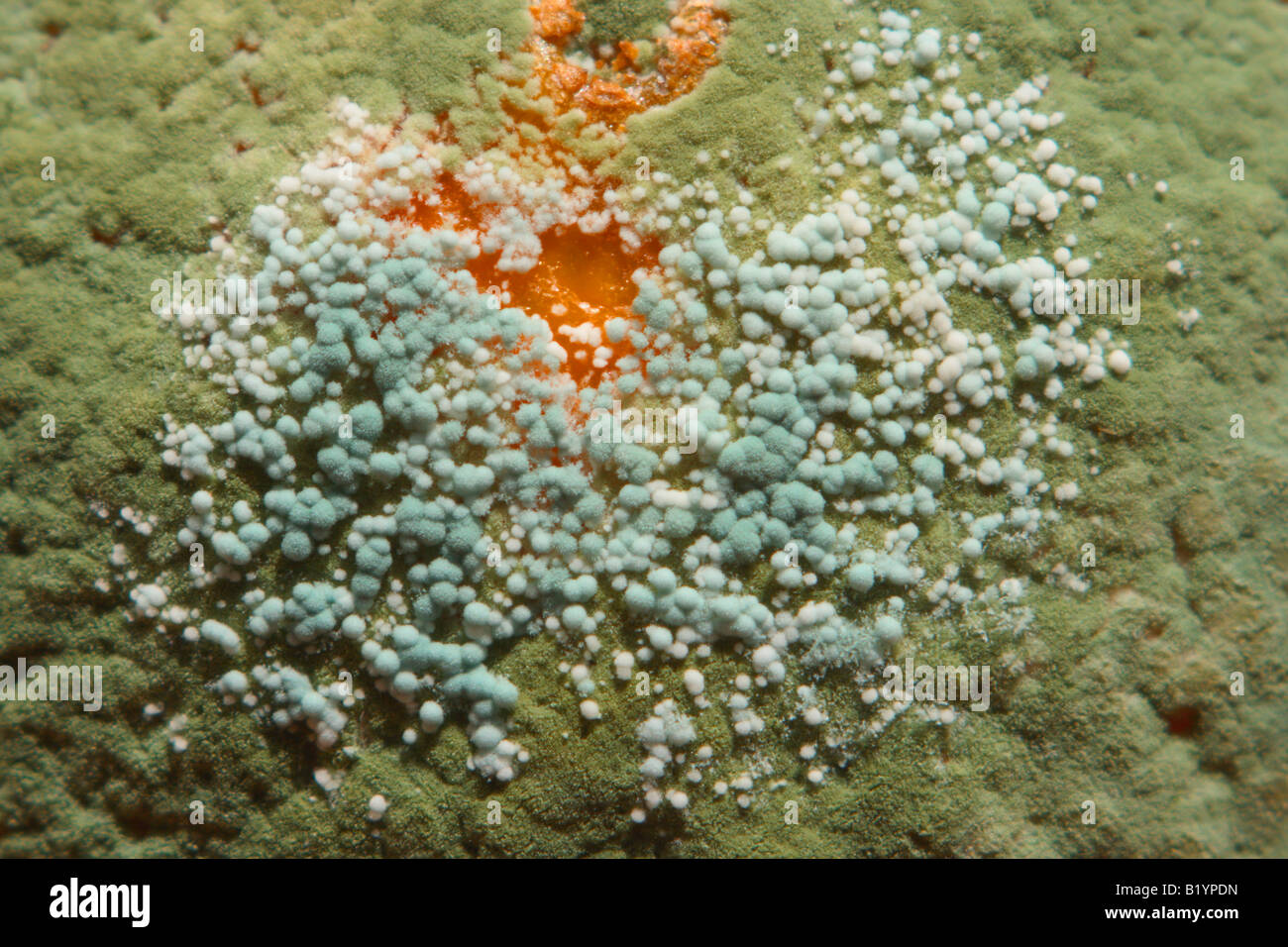 Closeup of Green mould, Penicillium sp. on orange fruit Stock Photohttps://www.alamy.com/image-license-details/?v=1https://www.alamy.com/stock-photo-closeup-of-green-mould-penicillium-sp-on-orange-fruit-18435361.html
Closeup of Green mould, Penicillium sp. on orange fruit Stock Photohttps://www.alamy.com/image-license-details/?v=1https://www.alamy.com/stock-photo-closeup-of-green-mould-penicillium-sp-on-orange-fruit-18435361.htmlRMB1YPDN–Closeup of Green mould, Penicillium sp. on orange fruit
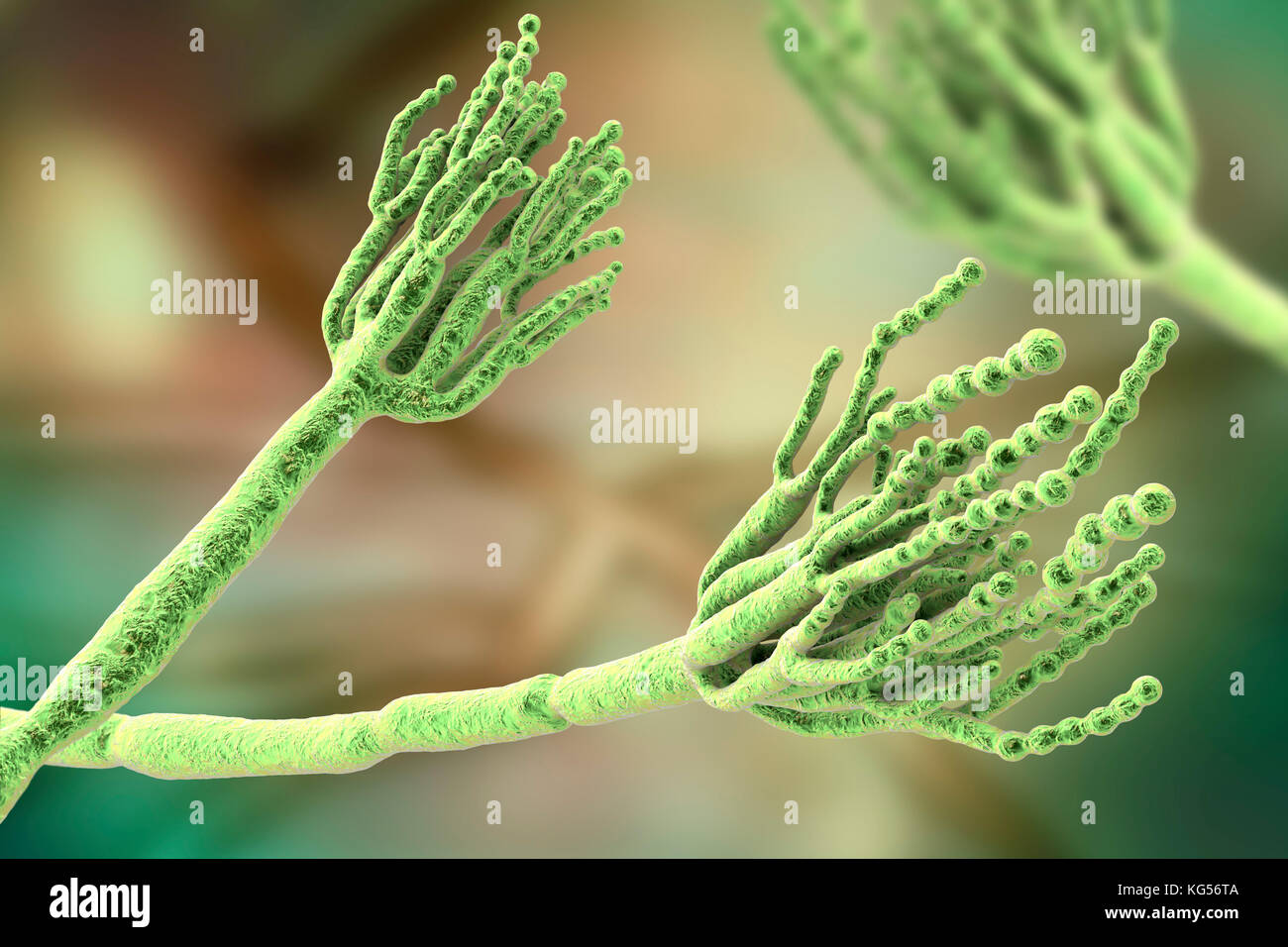 Penicillium fungus. Computer illustration of a Penicillium sp. fungus. Specialised threads, called conidiophores, are seen. Bunches of spores, called conidia, are the fungal reproductive units. The antibiotic penicillin is obtained from certain types of Penicillium fungi. Other types are used in the fermentation of cheeses. Stock Photohttps://www.alamy.com/image-license-details/?v=1https://www.alamy.com/stock-image-penicillium-fungus-computer-illustration-of-a-penicillium-sp-fungus-164842954.html
Penicillium fungus. Computer illustration of a Penicillium sp. fungus. Specialised threads, called conidiophores, are seen. Bunches of spores, called conidia, are the fungal reproductive units. The antibiotic penicillin is obtained from certain types of Penicillium fungi. Other types are used in the fermentation of cheeses. Stock Photohttps://www.alamy.com/image-license-details/?v=1https://www.alamy.com/stock-image-penicillium-fungus-computer-illustration-of-a-penicillium-sp-fungus-164842954.htmlRFKG56TA–Penicillium fungus. Computer illustration of a Penicillium sp. fungus. Specialised threads, called conidiophores, are seen. Bunches of spores, called conidia, are the fungal reproductive units. The antibiotic penicillin is obtained from certain types of Penicillium fungi. Other types are used in the fermentation of cheeses.
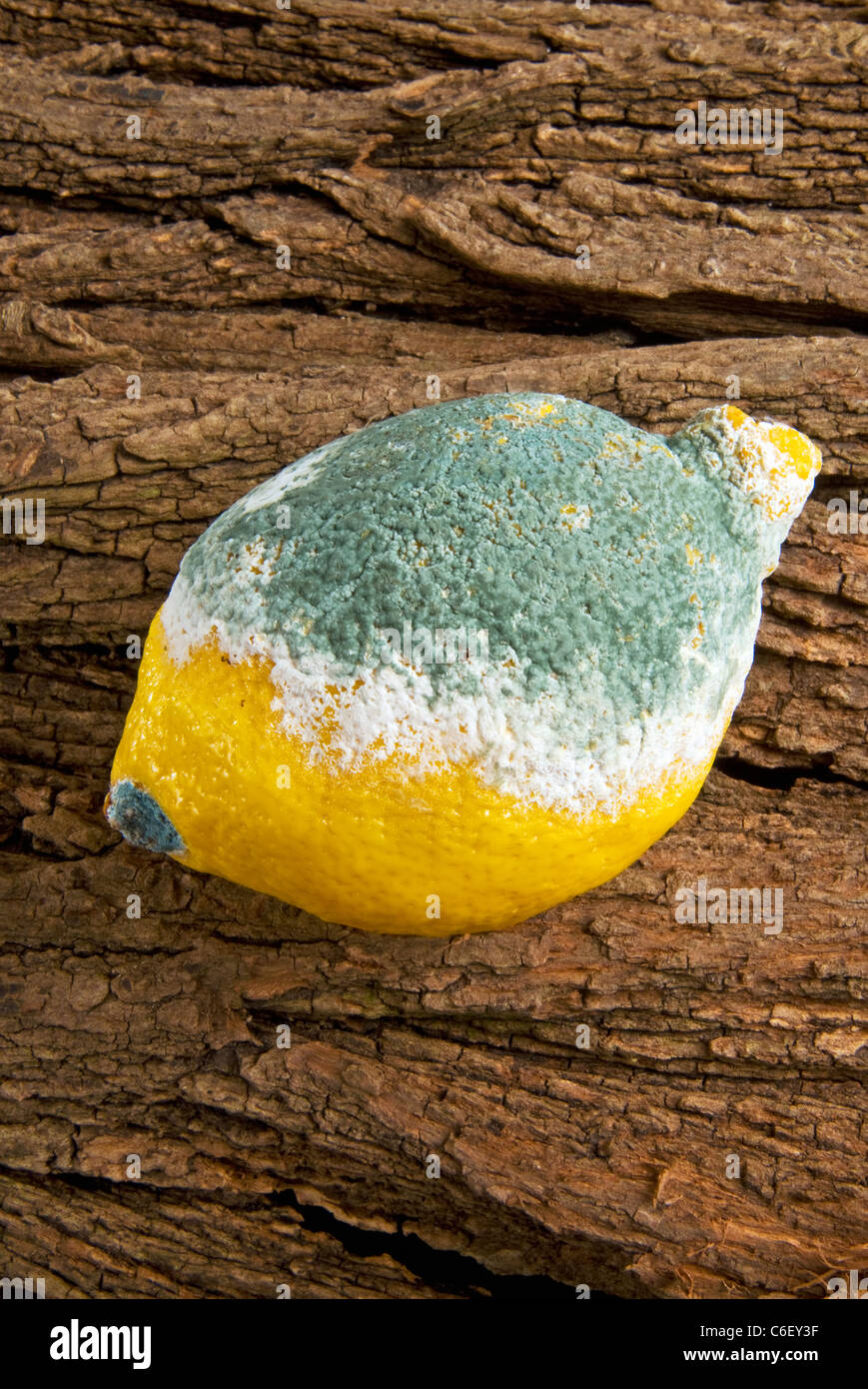 Mold (penicillium) on a lemon Stock Photohttps://www.alamy.com/image-license-details/?v=1https://www.alamy.com/stock-photo-mold-penicillium-on-a-lemon-38437267.html
Mold (penicillium) on a lemon Stock Photohttps://www.alamy.com/image-license-details/?v=1https://www.alamy.com/stock-photo-mold-penicillium-on-a-lemon-38437267.htmlRMC6EY3F–Mold (penicillium) on a lemon
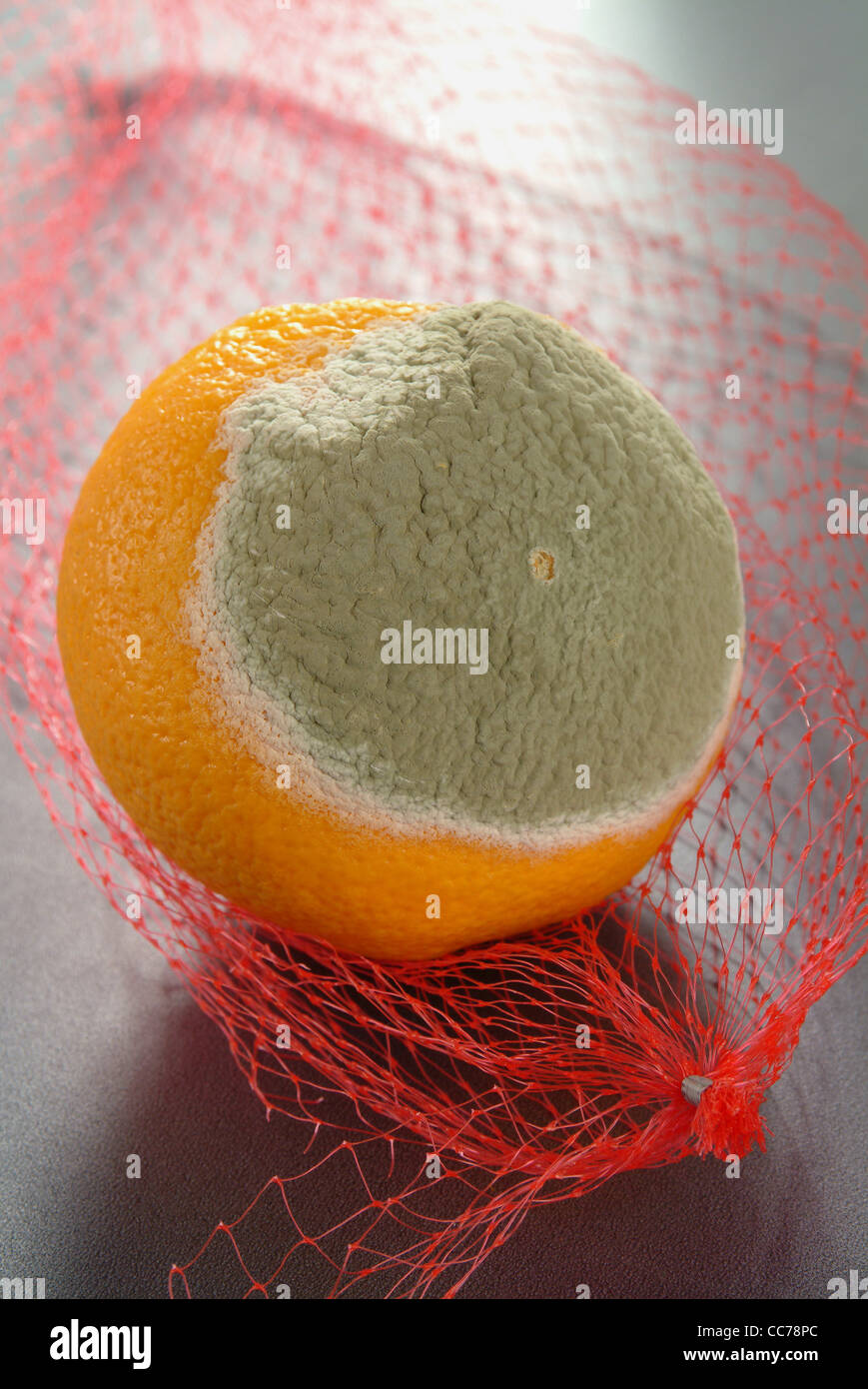 Orange, spoiled with mold on produce bag Stock Photohttps://www.alamy.com/image-license-details/?v=1https://www.alamy.com/stock-photo-orange-spoiled-with-mold-on-produce-bag-41957172.html
Orange, spoiled with mold on produce bag Stock Photohttps://www.alamy.com/image-license-details/?v=1https://www.alamy.com/stock-photo-orange-spoiled-with-mold-on-produce-bag-41957172.htmlRFCC78PC–Orange, spoiled with mold on produce bag
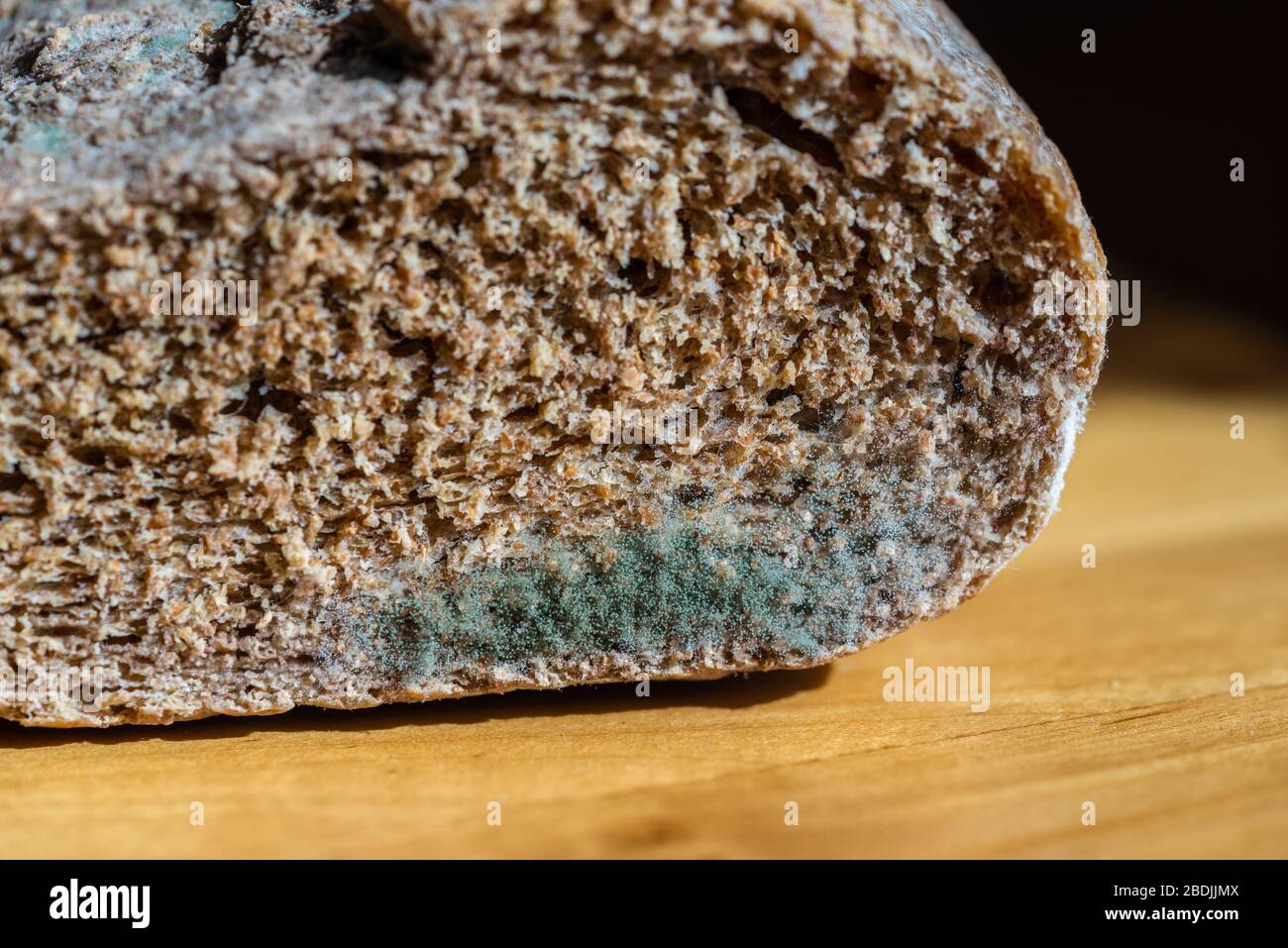 Penicillium sp. mould on bread - mouldy loaf of bread Stock Photohttps://www.alamy.com/image-license-details/?v=1https://www.alamy.com/penicillium-sp-mould-on-bread-mouldy-loaf-of-bread-image352607722.html
Penicillium sp. mould on bread - mouldy loaf of bread Stock Photohttps://www.alamy.com/image-license-details/?v=1https://www.alamy.com/penicillium-sp-mould-on-bread-mouldy-loaf-of-bread-image352607722.htmlRF2BDJJMX–Penicillium sp. mould on bread - mouldy loaf of bread
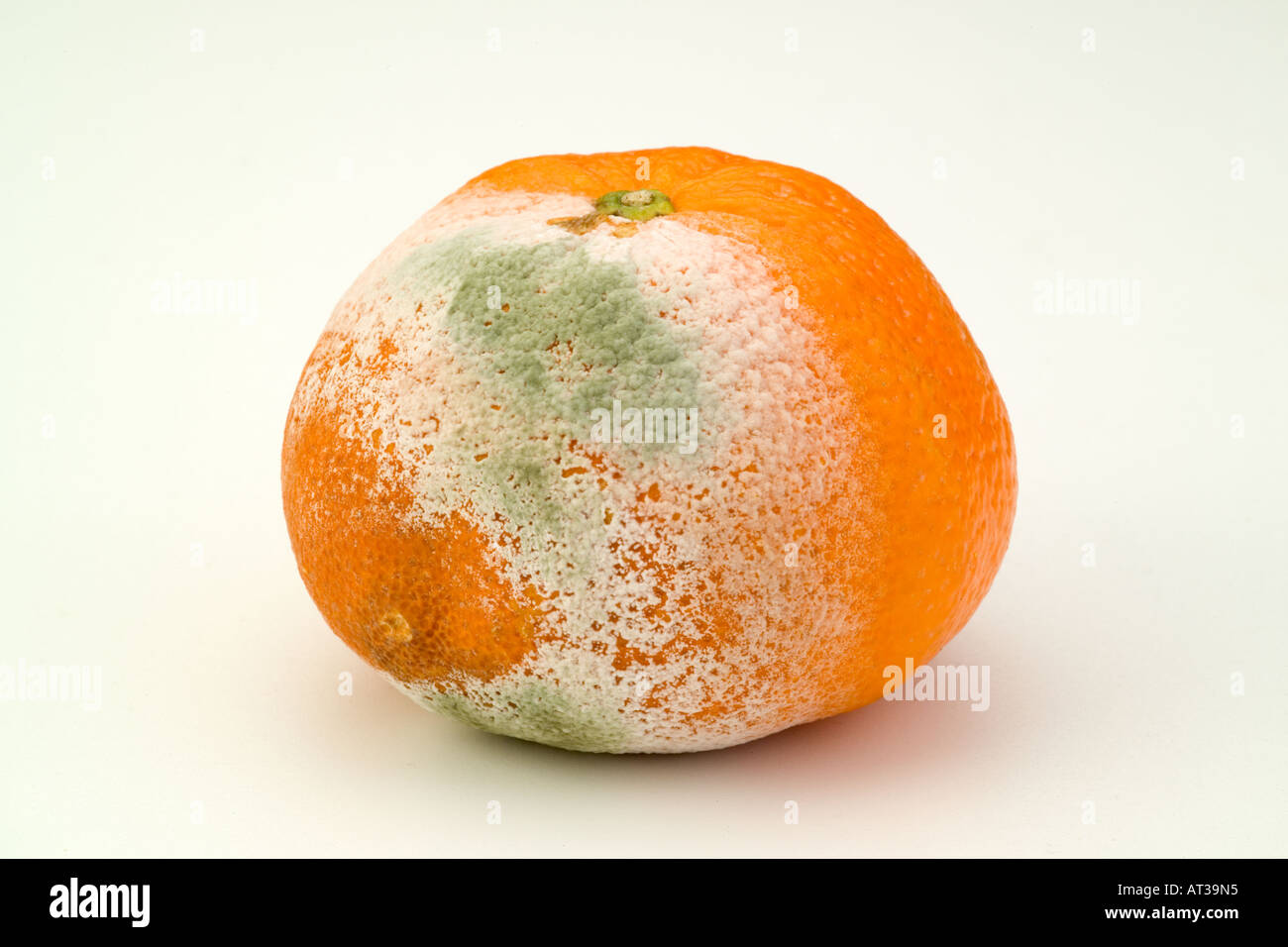 Mould on orange Stock Photohttps://www.alamy.com/image-license-details/?v=1https://www.alamy.com/mould-on-orange-image9250324.html
Mould on orange Stock Photohttps://www.alamy.com/image-license-details/?v=1https://www.alamy.com/mould-on-orange-image9250324.htmlRFAT39N5–Mould on orange
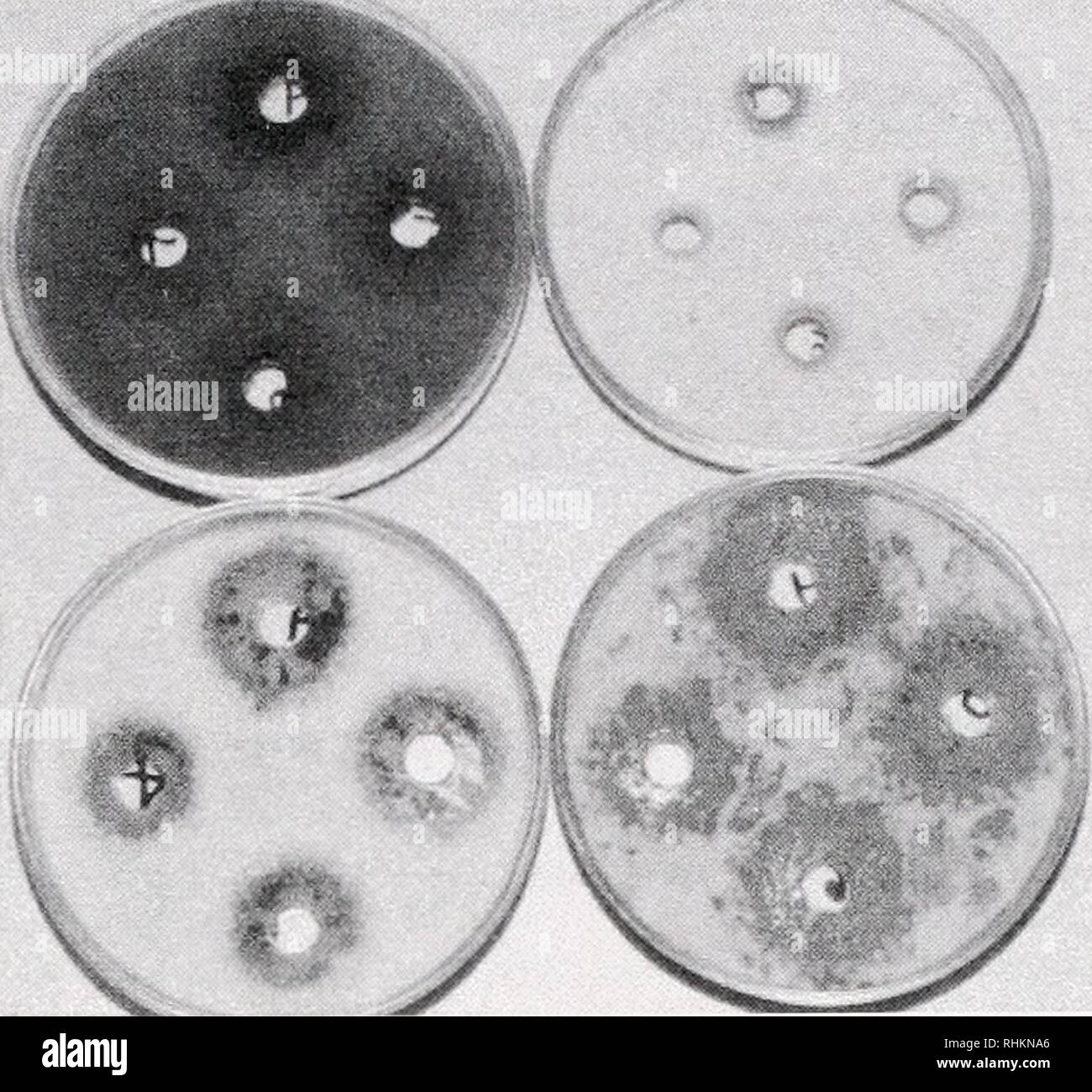 . The Biological bulletin. Biology; Zoology; Biology; Marine Biology. HOLOTHURIAN FUNGI 105 Table 3 Proteo/vtic activity of fungal strains from holothurians Source Taxon Proteolytic activity (cm)* Eupentacta fraudatrix Acremonium striatisponun 4.0 ± 0.2 Surface Penicillium commune 0 P. herquei 6.0 ± 0.1 Altemaria alternate! 4.5 ± 0.3 Phialophorophoma sp. 0.8 ± 0.1 Verticillium tenernm 1.0 ± 0.2 Cladosporium sphaerospermum 1.0 ± 0.2 C. brevicompactum 3.0 ± 0.1 Internal organs C. sphaerospermum 6.0 ± 0.3 Apostichopus japonicus C. sphaerospermum 0.5 ± 0.1 Surface C. brevicompactum 0.8 ± 0.1 Inter Stock Photohttps://www.alamy.com/image-license-details/?v=1https://www.alamy.com/the-biological-bulletin-biology-zoology-biology-marine-biology-holothurian-fungi-105-table-3-proteovtic-activity-of-fungal-strains-from-holothurians-source-taxon-proteolytic-activity-cm-eupentacta-fraudatrix-acremonium-striatisponun-40-02-surface-penicillium-commune-0-p-herquei-60-01-altemaria-alternate!-45-03-phialophorophoma-sp-08-01-verticillium-tenernm-10-02-cladosporium-sphaerospermum-10-02-c-brevicompactum-30-01-internal-organs-c-sphaerospermum-60-03-apostichopus-japonicus-c-sphaerospermum-05-01-surface-c-brevicompactum-08-01-inter-image234617774.html
. The Biological bulletin. Biology; Zoology; Biology; Marine Biology. HOLOTHURIAN FUNGI 105 Table 3 Proteo/vtic activity of fungal strains from holothurians Source Taxon Proteolytic activity (cm)* Eupentacta fraudatrix Acremonium striatisponun 4.0 ± 0.2 Surface Penicillium commune 0 P. herquei 6.0 ± 0.1 Altemaria alternate! 4.5 ± 0.3 Phialophorophoma sp. 0.8 ± 0.1 Verticillium tenernm 1.0 ± 0.2 Cladosporium sphaerospermum 1.0 ± 0.2 C. brevicompactum 3.0 ± 0.1 Internal organs C. sphaerospermum 6.0 ± 0.3 Apostichopus japonicus C. sphaerospermum 0.5 ± 0.1 Surface C. brevicompactum 0.8 ± 0.1 Inter Stock Photohttps://www.alamy.com/image-license-details/?v=1https://www.alamy.com/the-biological-bulletin-biology-zoology-biology-marine-biology-holothurian-fungi-105-table-3-proteovtic-activity-of-fungal-strains-from-holothurians-source-taxon-proteolytic-activity-cm-eupentacta-fraudatrix-acremonium-striatisponun-40-02-surface-penicillium-commune-0-p-herquei-60-01-altemaria-alternate!-45-03-phialophorophoma-sp-08-01-verticillium-tenernm-10-02-cladosporium-sphaerospermum-10-02-c-brevicompactum-30-01-internal-organs-c-sphaerospermum-60-03-apostichopus-japonicus-c-sphaerospermum-05-01-surface-c-brevicompactum-08-01-inter-image234617774.htmlRMRHKNA6–. The Biological bulletin. Biology; Zoology; Biology; Marine Biology. HOLOTHURIAN FUNGI 105 Table 3 Proteo/vtic activity of fungal strains from holothurians Source Taxon Proteolytic activity (cm)* Eupentacta fraudatrix Acremonium striatisponun 4.0 ± 0.2 Surface Penicillium commune 0 P. herquei 6.0 ± 0.1 Altemaria alternate! 4.5 ± 0.3 Phialophorophoma sp. 0.8 ± 0.1 Verticillium tenernm 1.0 ± 0.2 Cladosporium sphaerospermum 1.0 ± 0.2 C. brevicompactum 3.0 ± 0.1 Internal organs C. sphaerospermum 6.0 ± 0.3 Apostichopus japonicus C. sphaerospermum 0.5 ± 0.1 Surface C. brevicompactum 0.8 ± 0.1 Inter
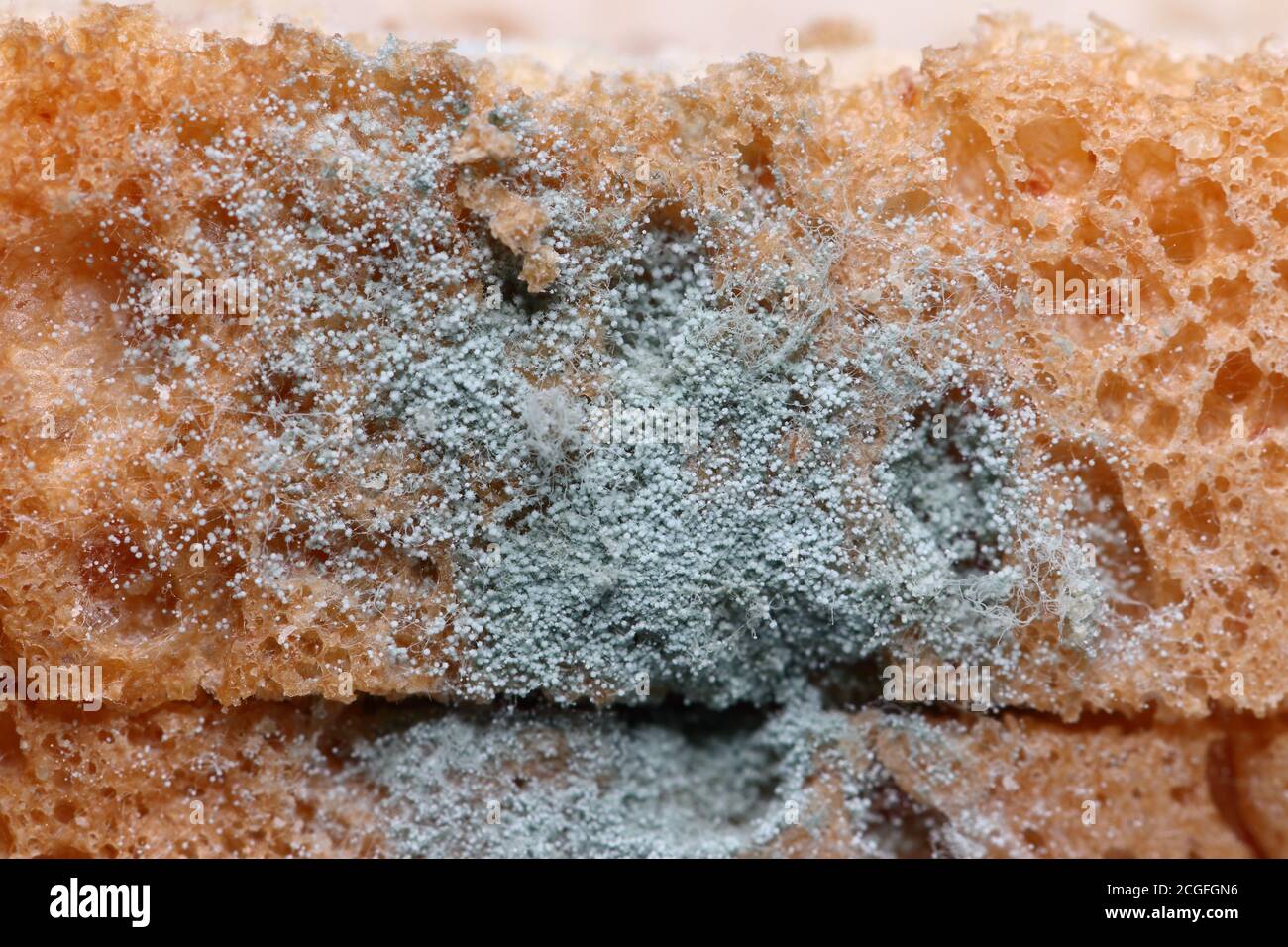 Closeup bread mold fungus (Penicillium sp.) show detail of sporangiospore, sporangium, rhizoid and stolon Stock Photohttps://www.alamy.com/image-license-details/?v=1https://www.alamy.com/closeup-bread-mold-fungus-penicillium-sp-show-detail-of-sporangiospore-sporangium-rhizoid-and-stolon-image371594642.html
Closeup bread mold fungus (Penicillium sp.) show detail of sporangiospore, sporangium, rhizoid and stolon Stock Photohttps://www.alamy.com/image-license-details/?v=1https://www.alamy.com/closeup-bread-mold-fungus-penicillium-sp-show-detail-of-sporangiospore-sporangium-rhizoid-and-stolon-image371594642.htmlRF2CGFGN6–Closeup bread mold fungus (Penicillium sp.) show detail of sporangiospore, sporangium, rhizoid and stolon
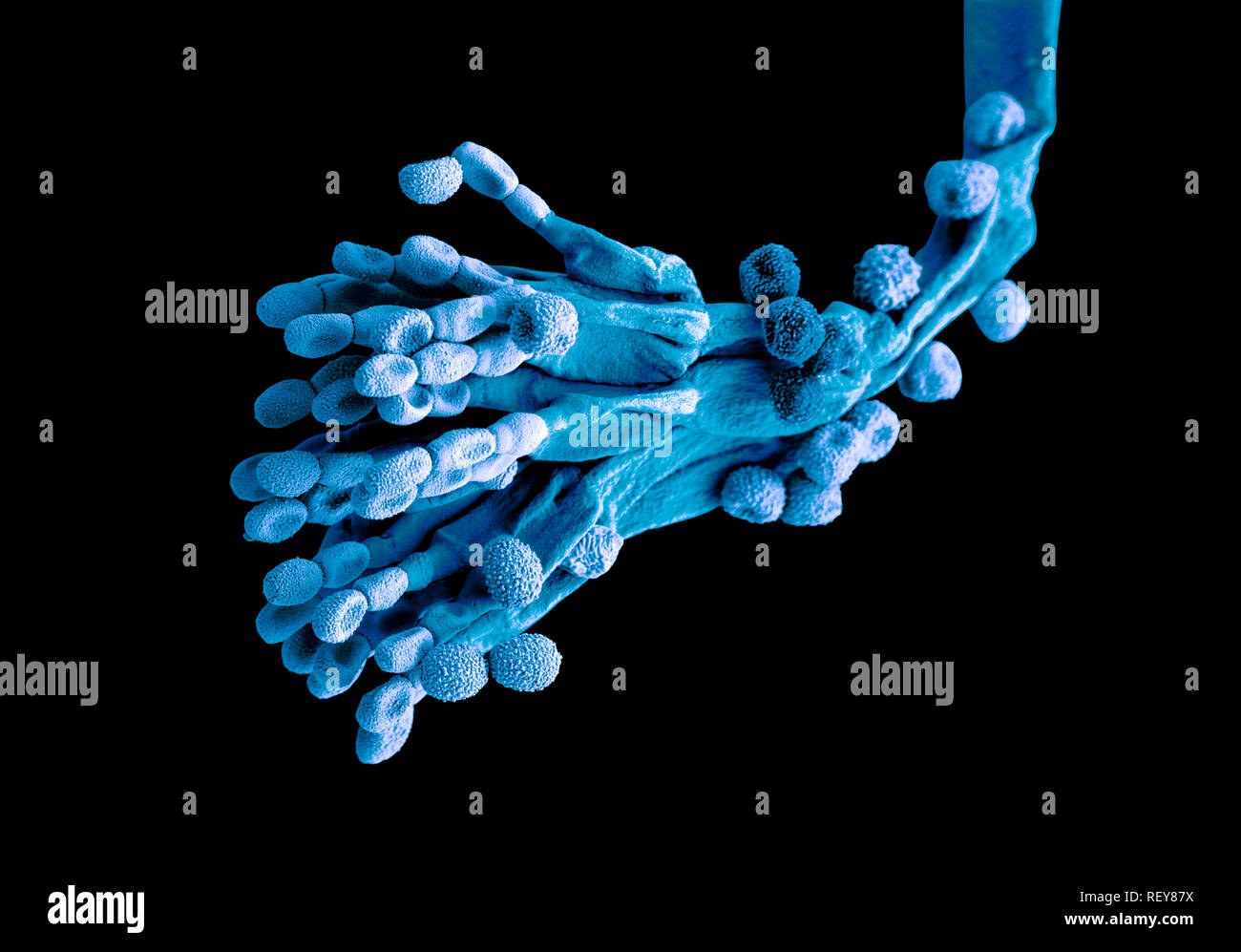 Penicillium fungus. Microscopic EM coloured image of penicillium chrysogenum fungus. Stock Photohttps://www.alamy.com/image-license-details/?v=1https://www.alamy.com/penicillium-fungus-microscopic-em-coloured-image-of-penicillium-chrysogenum-fungus-image232939166.html
Penicillium fungus. Microscopic EM coloured image of penicillium chrysogenum fungus. Stock Photohttps://www.alamy.com/image-license-details/?v=1https://www.alamy.com/penicillium-fungus-microscopic-em-coloured-image-of-penicillium-chrysogenum-fungus-image232939166.htmlRMREY87X–Penicillium fungus. Microscopic EM coloured image of penicillium chrysogenum fungus.
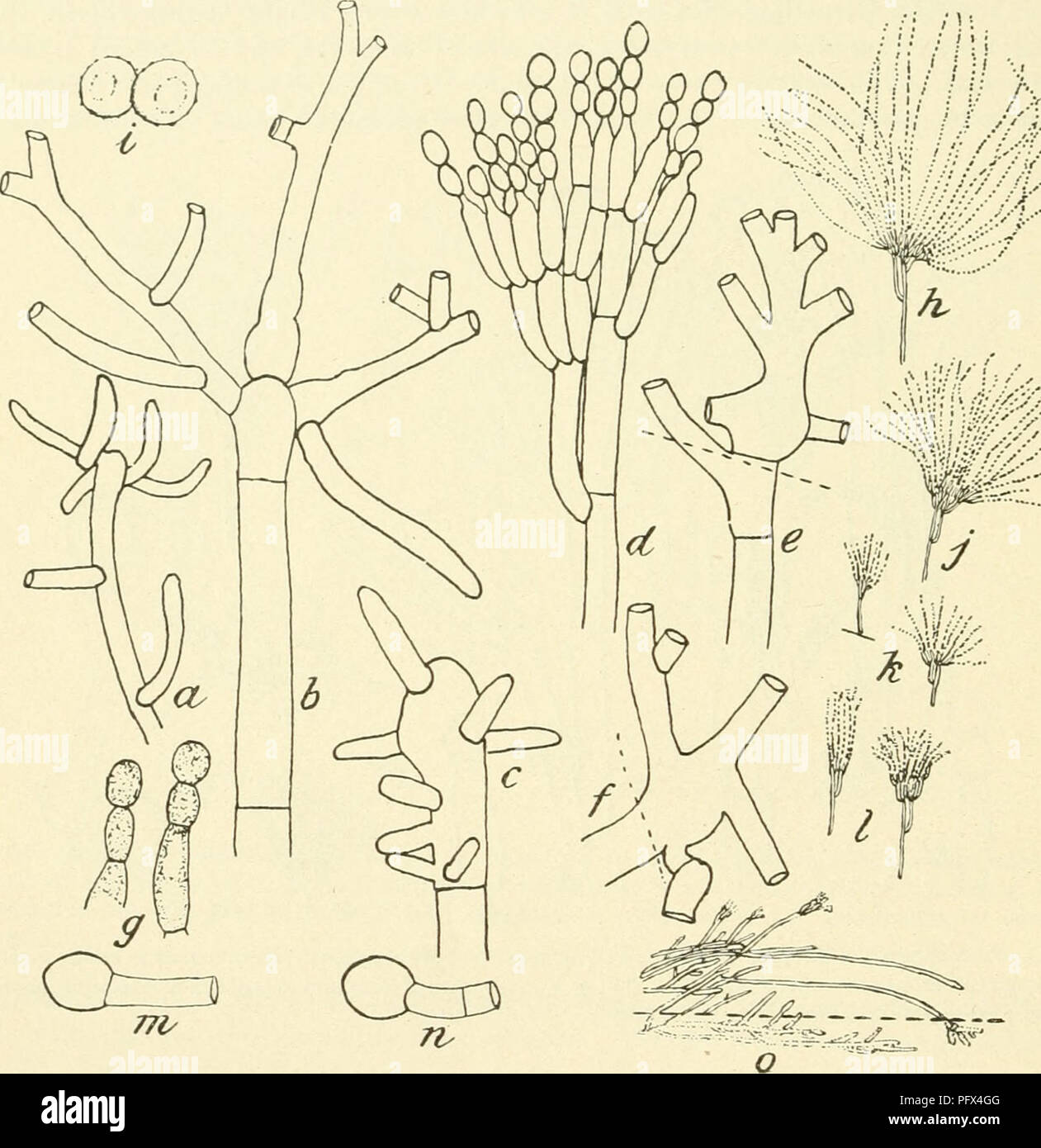 . Cultural studies of species of Penicillium. Penicillium -- Cultures and culture media; Fungi -- Cultures and culture media. 68 CULTURAL STUDIES OF SPECIES OF PENICILLIUM. per cent, good growth, strongly alkaline. Glycerin 3 per cent, weak growth. Potato starch, characteristic colony. Milk, curdling (0.25 per cent calcium chlorid added) in 8 days; digestion medium rapid; color in milk, none or ? At 37° C, no growth, grew when cooled; check at 20° C, good typical. PENICILLIUM STOLONIFERUM n. sp. Latin diagnosis.—Coloniis in gelatina vel agaro Solani tuberosi cultis, viridibus vel flavo-viridib Stock Photohttps://www.alamy.com/image-license-details/?v=1https://www.alamy.com/cultural-studies-of-species-of-penicillium-penicillium-cultures-and-culture-media-fungi-cultures-and-culture-media-68-cultural-studies-of-species-of-penicillium-per-cent-good-growth-strongly-alkaline-glycerin-3-per-cent-weak-growth-potato-starch-characteristic-colony-milk-curdling-025-per-cent-calcium-chlorid-added-in-8-days-digestion-medium-rapid-color-in-milk-none-or-at-37-c-no-growth-grew-when-cooled-check-at-20-c-good-typical-penicillium-stoloniferum-n-sp-latin-diagnosiscoloniis-in-gelatina-vel-agaro-solani-tuberosi-cultis-viridibus-vel-flavo-viridib-image216318608.html
. Cultural studies of species of Penicillium. Penicillium -- Cultures and culture media; Fungi -- Cultures and culture media. 68 CULTURAL STUDIES OF SPECIES OF PENICILLIUM. per cent, good growth, strongly alkaline. Glycerin 3 per cent, weak growth. Potato starch, characteristic colony. Milk, curdling (0.25 per cent calcium chlorid added) in 8 days; digestion medium rapid; color in milk, none or ? At 37° C, no growth, grew when cooled; check at 20° C, good typical. PENICILLIUM STOLONIFERUM n. sp. Latin diagnosis.—Coloniis in gelatina vel agaro Solani tuberosi cultis, viridibus vel flavo-viridib Stock Photohttps://www.alamy.com/image-license-details/?v=1https://www.alamy.com/cultural-studies-of-species-of-penicillium-penicillium-cultures-and-culture-media-fungi-cultures-and-culture-media-68-cultural-studies-of-species-of-penicillium-per-cent-good-growth-strongly-alkaline-glycerin-3-per-cent-weak-growth-potato-starch-characteristic-colony-milk-curdling-025-per-cent-calcium-chlorid-added-in-8-days-digestion-medium-rapid-color-in-milk-none-or-at-37-c-no-growth-grew-when-cooled-check-at-20-c-good-typical-penicillium-stoloniferum-n-sp-latin-diagnosiscoloniis-in-gelatina-vel-agaro-solani-tuberosi-cultis-viridibus-vel-flavo-viridib-image216318608.htmlRMPFX4GG–. Cultural studies of species of Penicillium. Penicillium -- Cultures and culture media; Fungi -- Cultures and culture media. 68 CULTURAL STUDIES OF SPECIES OF PENICILLIUM. per cent, good growth, strongly alkaline. Glycerin 3 per cent, weak growth. Potato starch, characteristic colony. Milk, curdling (0.25 per cent calcium chlorid added) in 8 days; digestion medium rapid; color in milk, none or ? At 37° C, no growth, grew when cooled; check at 20° C, good typical. PENICILLIUM STOLONIFERUM n. sp. Latin diagnosis.—Coloniis in gelatina vel agaro Solani tuberosi cultis, viridibus vel flavo-viridib
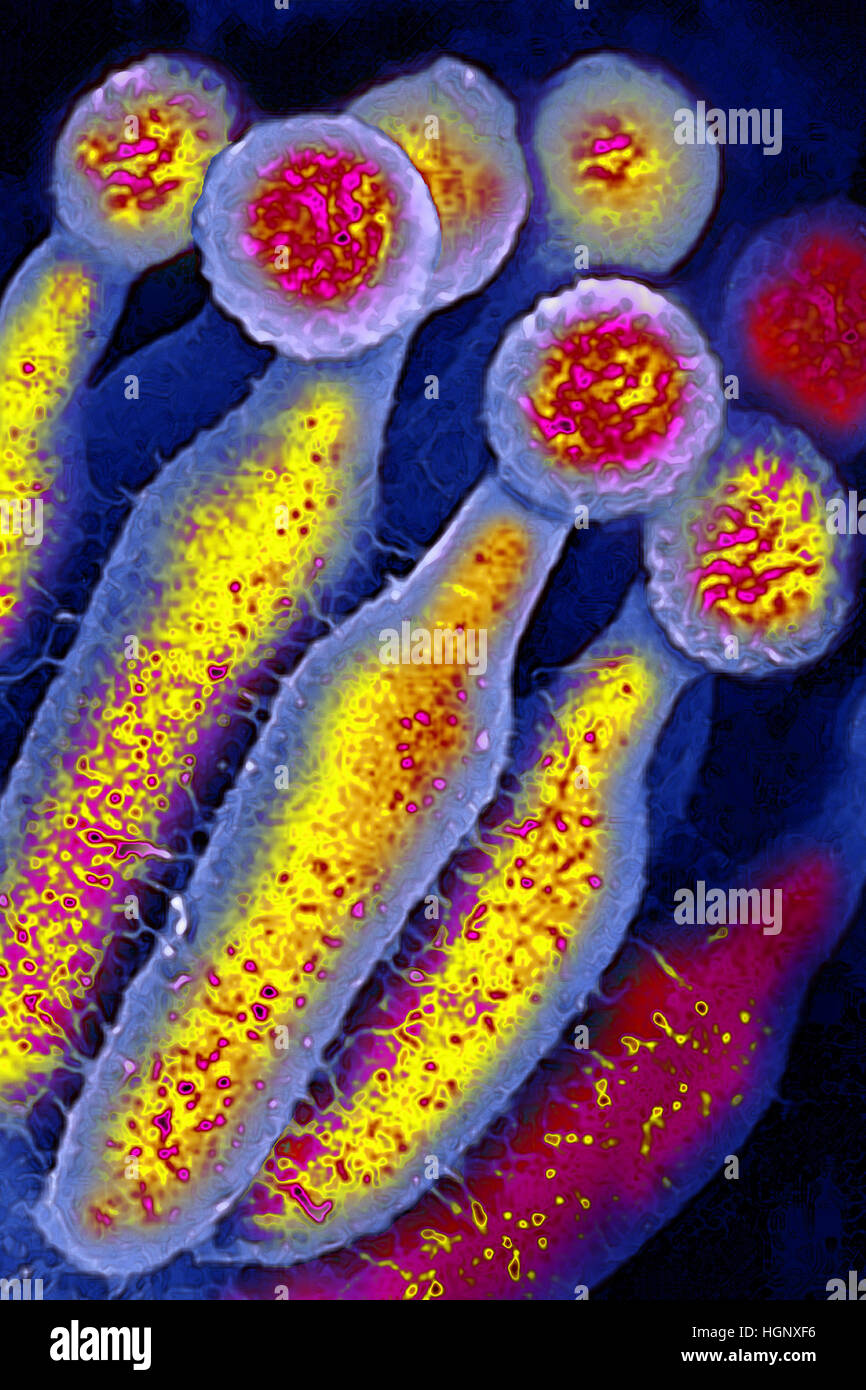 PENICILLIUM CHRYSOGENUM Stock Photohttps://www.alamy.com/image-license-details/?v=1https://www.alamy.com/stock-photo-penicillium-chrysogenum-130788874.html
PENICILLIUM CHRYSOGENUM Stock Photohttps://www.alamy.com/image-license-details/?v=1https://www.alamy.com/stock-photo-penicillium-chrysogenum-130788874.htmlRMHGNXF6–PENICILLIUM CHRYSOGENUM
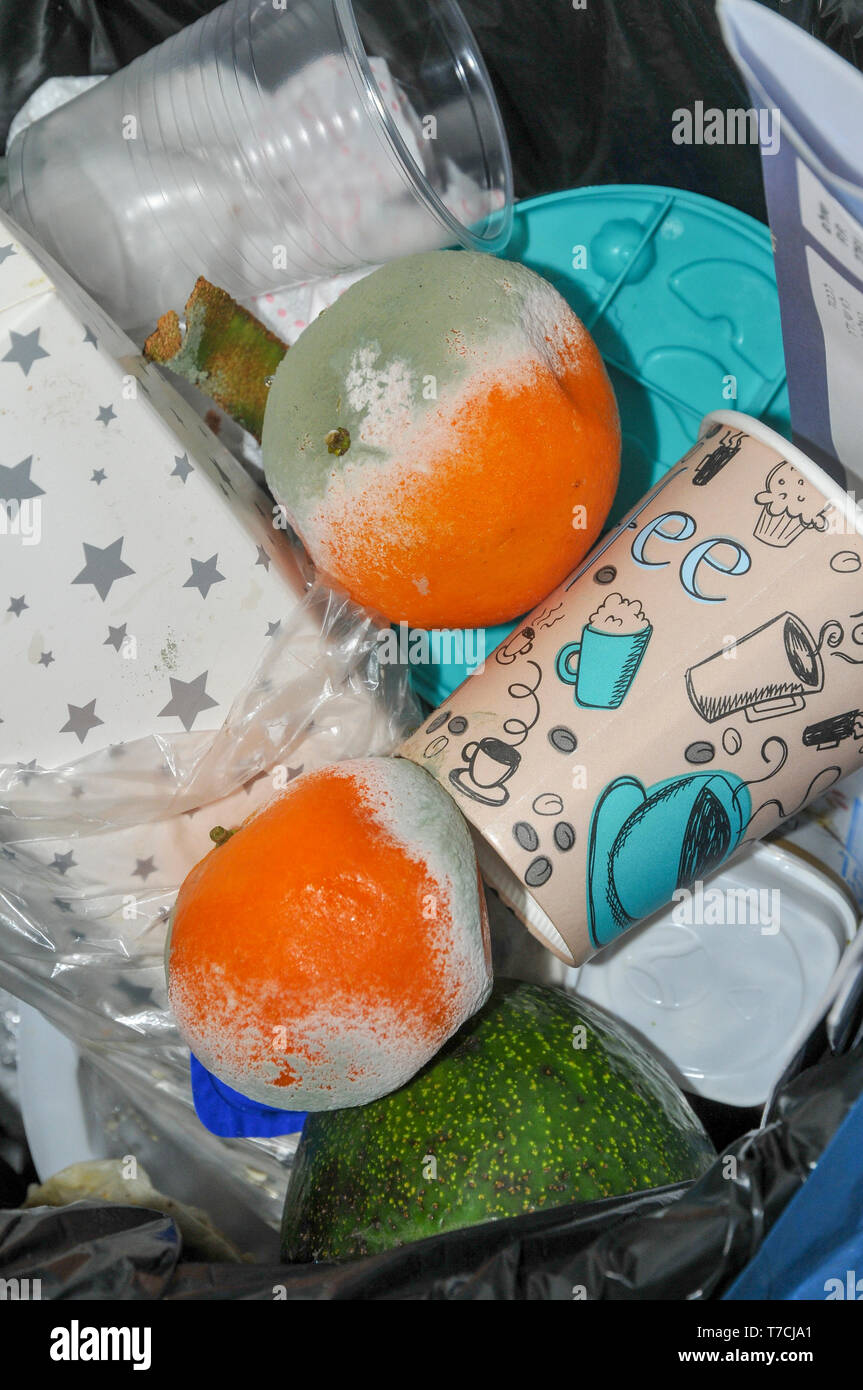 Mouldy citrus clementine fruit. Penicillium sp. fungus growing on a Citrus fruit. The fungus has spread over the surface of the fruit, producing a net Stock Photohttps://www.alamy.com/image-license-details/?v=1https://www.alamy.com/mouldy-citrus-clementine-fruit-penicillium-sp-fungus-growing-on-a-citrus-fruit-the-fungus-has-spread-over-the-surface-of-the-fruit-producing-a-net-image245525561.html
Mouldy citrus clementine fruit. Penicillium sp. fungus growing on a Citrus fruit. The fungus has spread over the surface of the fruit, producing a net Stock Photohttps://www.alamy.com/image-license-details/?v=1https://www.alamy.com/mouldy-citrus-clementine-fruit-penicillium-sp-fungus-growing-on-a-citrus-fruit-the-fungus-has-spread-over-the-surface-of-the-fruit-producing-a-net-image245525561.htmlRMT7CJA1–Mouldy citrus clementine fruit. Penicillium sp. fungus growing on a Citrus fruit. The fungus has spread over the surface of the fruit, producing a net
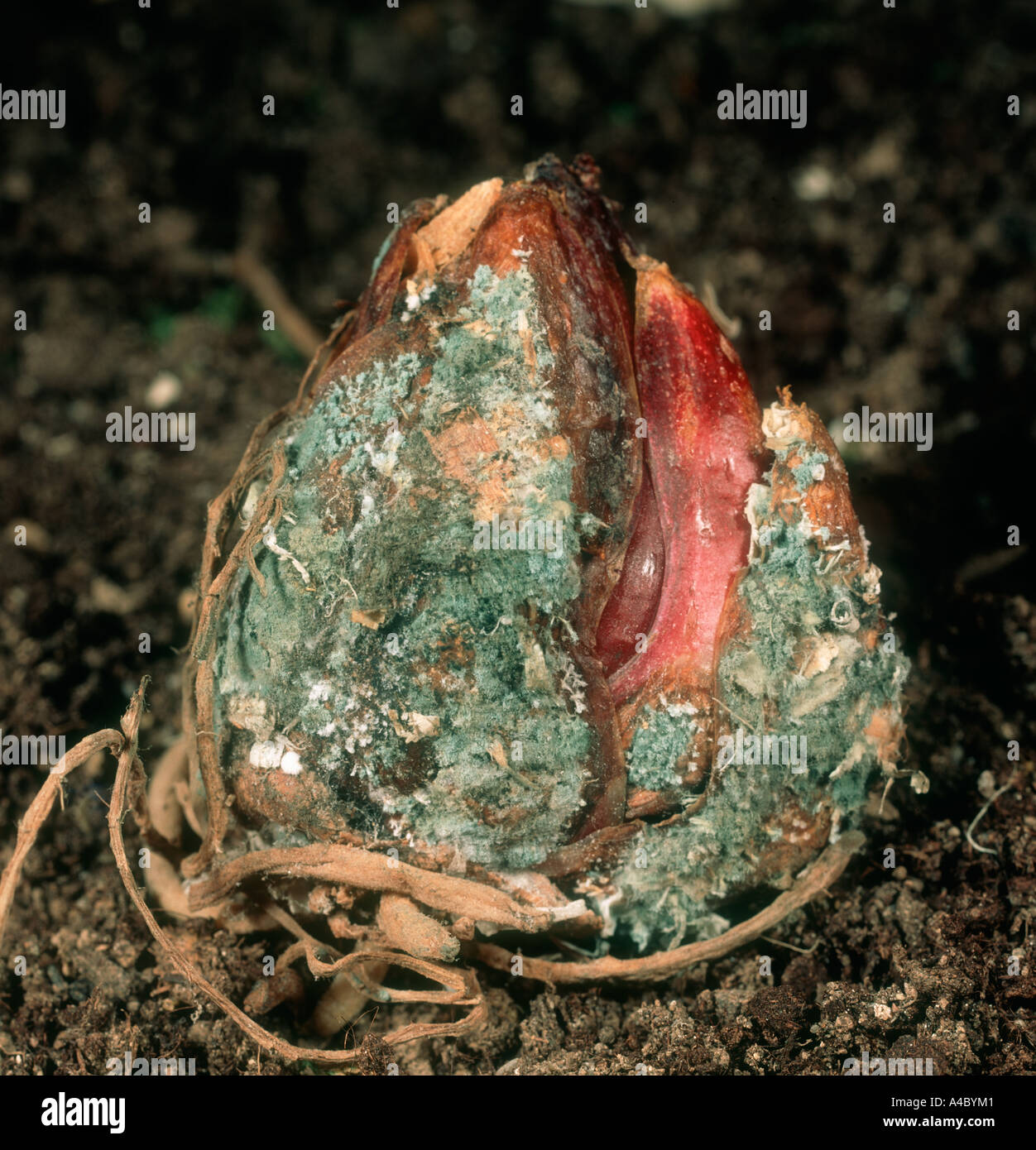 Blue mould storage rot Penicillium sp on lily bulb Stock Photohttps://www.alamy.com/image-license-details/?v=1https://www.alamy.com/blue-mould-storage-rot-penicillium-sp-on-lily-bulb-image6286208.html
Blue mould storage rot Penicillium sp on lily bulb Stock Photohttps://www.alamy.com/image-license-details/?v=1https://www.alamy.com/blue-mould-storage-rot-penicillium-sp-on-lily-bulb-image6286208.htmlRMA4BYM1–Blue mould storage rot Penicillium sp on lily bulb
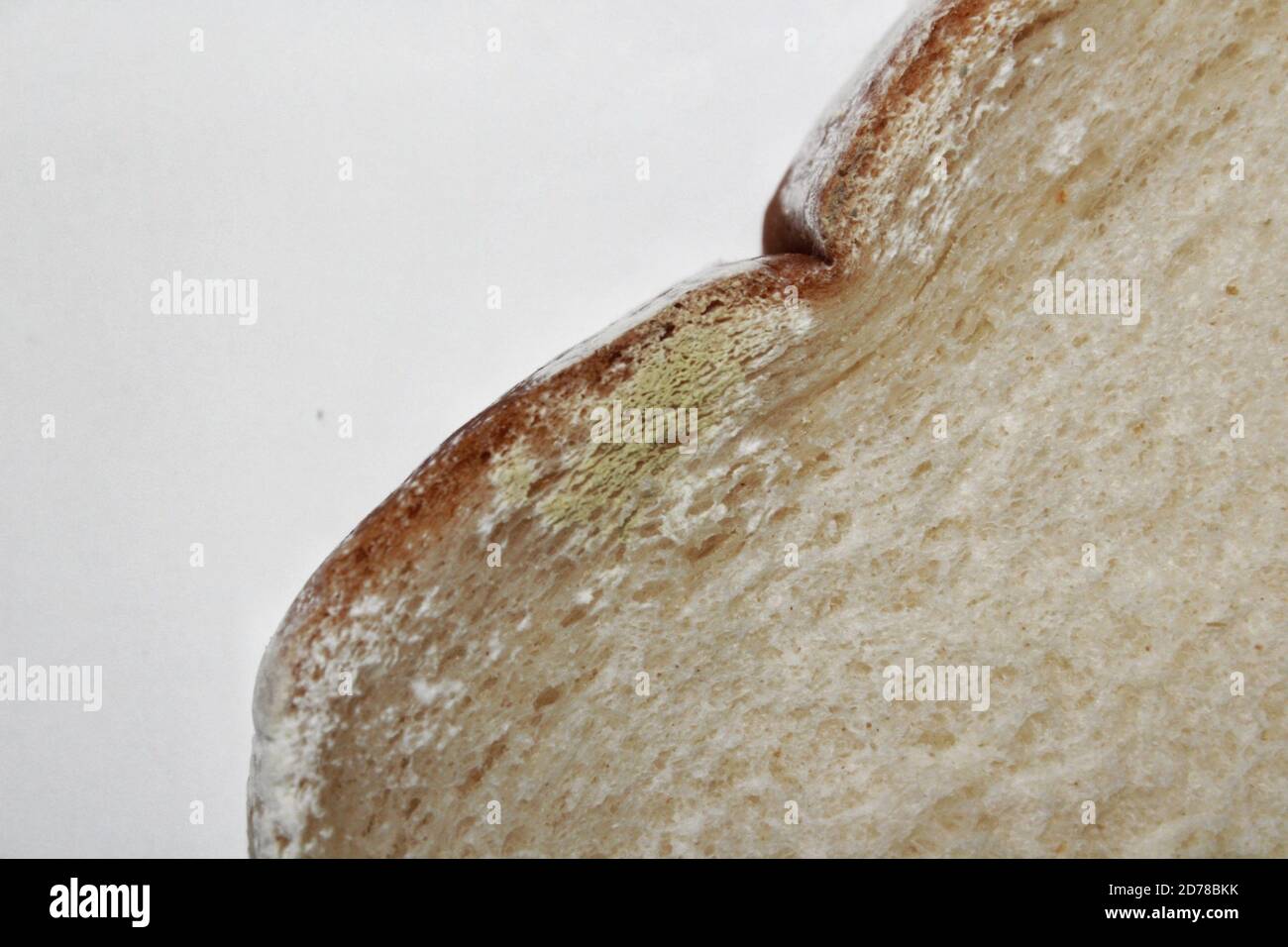 Penicillium chrysogenum mould growing on a loaf of bread. Penicillium is used to make the antibiotic penicllin Stock Photohttps://www.alamy.com/image-license-details/?v=1https://www.alamy.com/penicillium-chrysogenum-mould-growing-on-a-loaf-of-bread-penicillium-is-used-to-make-the-antibiotic-penicllin-image383115479.html
Penicillium chrysogenum mould growing on a loaf of bread. Penicillium is used to make the antibiotic penicllin Stock Photohttps://www.alamy.com/image-license-details/?v=1https://www.alamy.com/penicillium-chrysogenum-mould-growing-on-a-loaf-of-bread-penicillium-is-used-to-make-the-antibiotic-penicllin-image383115479.htmlRF2D78BKK–Penicillium chrysogenum mould growing on a loaf of bread. Penicillium is used to make the antibiotic penicllin
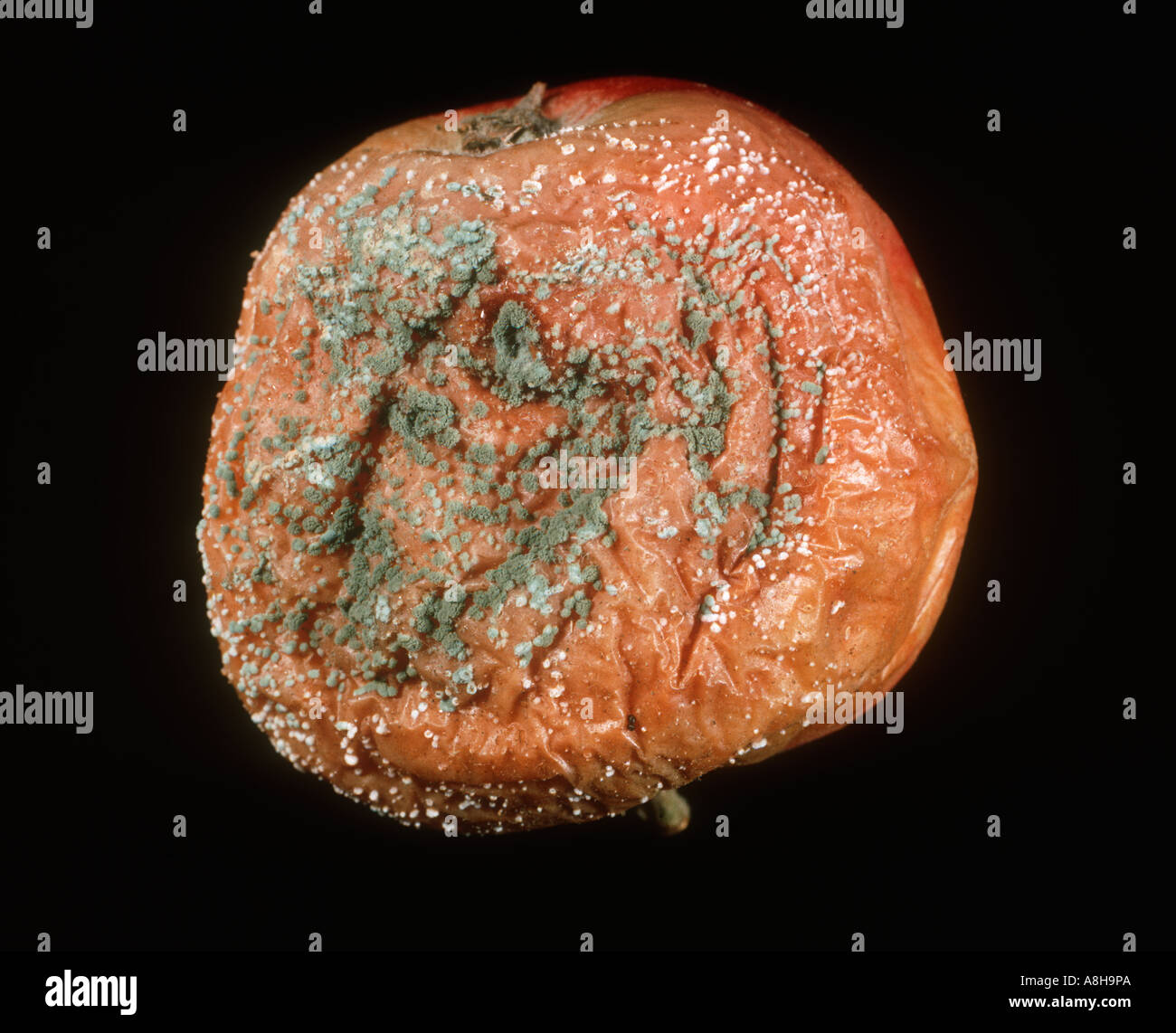 Fruit rot Penicillium sp storage rot on apple fruit Stock Photohttps://www.alamy.com/image-license-details/?v=1https://www.alamy.com/fruit-rot-penicillium-sp-storage-rot-on-apple-fruit-image6917161.html
Fruit rot Penicillium sp storage rot on apple fruit Stock Photohttps://www.alamy.com/image-license-details/?v=1https://www.alamy.com/fruit-rot-penicillium-sp-storage-rot-on-apple-fruit-image6917161.htmlRMA8H9PA–Fruit rot Penicillium sp storage rot on apple fruit
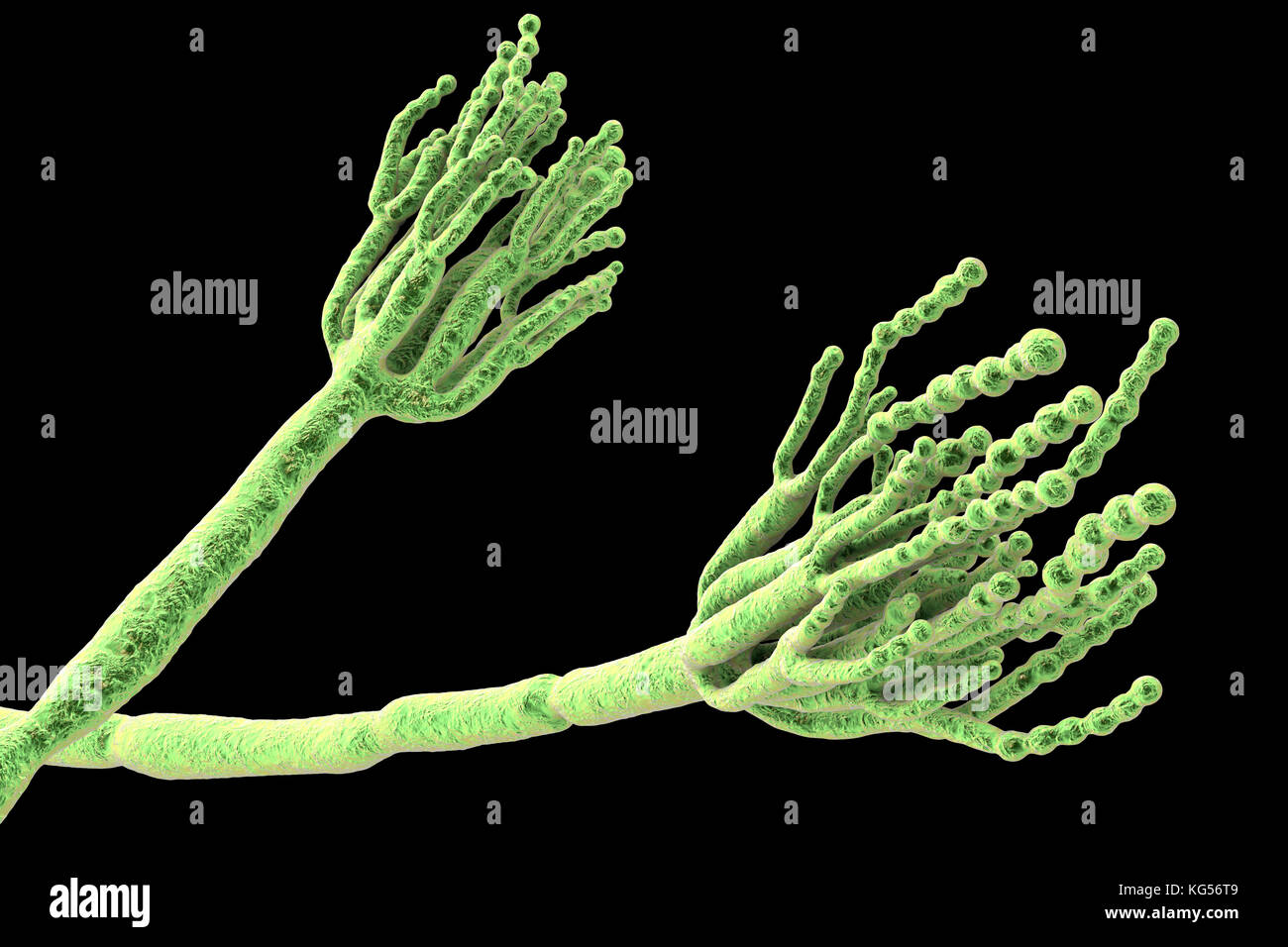 Penicillium fungus. Computer illustration of a Penicillium sp. fungus. Specialised threads, called conidiophores, are seen. Bunches of spores, called conidia, are the fungal reproductive units. The antibiotic penicillin is obtained from certain types of Penicillium fungi. Other types are used in the fermentation of cheeses. Stock Photohttps://www.alamy.com/image-license-details/?v=1https://www.alamy.com/stock-image-penicillium-fungus-computer-illustration-of-a-penicillium-sp-fungus-164842953.html
Penicillium fungus. Computer illustration of a Penicillium sp. fungus. Specialised threads, called conidiophores, are seen. Bunches of spores, called conidia, are the fungal reproductive units. The antibiotic penicillin is obtained from certain types of Penicillium fungi. Other types are used in the fermentation of cheeses. Stock Photohttps://www.alamy.com/image-license-details/?v=1https://www.alamy.com/stock-image-penicillium-fungus-computer-illustration-of-a-penicillium-sp-fungus-164842953.htmlRFKG56T9–Penicillium fungus. Computer illustration of a Penicillium sp. fungus. Specialised threads, called conidiophores, are seen. Bunches of spores, called conidia, are the fungal reproductive units. The antibiotic penicillin is obtained from certain types of Penicillium fungi. Other types are used in the fermentation of cheeses.
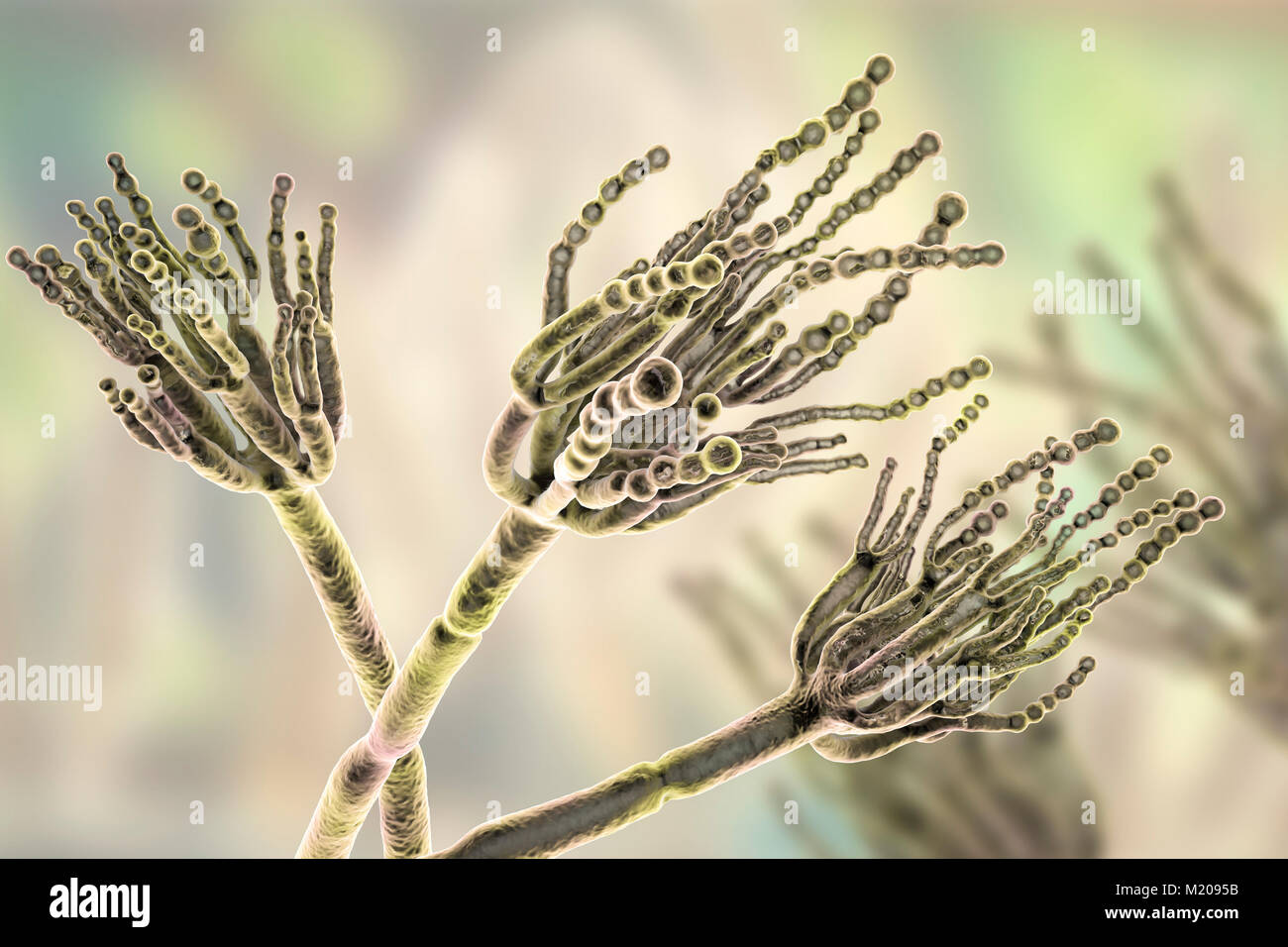 Penicillium fungus. Computer illustration of a Penicillium sp. fungus. Specialised threads, called conidiophores, are seen. Bunches of spores, called conidia, are the fungal reproductive units. The antibiotic penicillin is obtained from certain types of Penicillium fungi. Other types are used in the fermentation of cheeses. Stock Photohttps://www.alamy.com/image-license-details/?v=1https://www.alamy.com/stock-photo-penicillium-fungus-computer-illustration-of-a-penicillium-sp-fungus-173340199.html
Penicillium fungus. Computer illustration of a Penicillium sp. fungus. Specialised threads, called conidiophores, are seen. Bunches of spores, called conidia, are the fungal reproductive units. The antibiotic penicillin is obtained from certain types of Penicillium fungi. Other types are used in the fermentation of cheeses. Stock Photohttps://www.alamy.com/image-license-details/?v=1https://www.alamy.com/stock-photo-penicillium-fungus-computer-illustration-of-a-penicillium-sp-fungus-173340199.htmlRFM2095B–Penicillium fungus. Computer illustration of a Penicillium sp. fungus. Specialised threads, called conidiophores, are seen. Bunches of spores, called conidia, are the fungal reproductive units. The antibiotic penicillin is obtained from certain types of Penicillium fungi. Other types are used in the fermentation of cheeses.
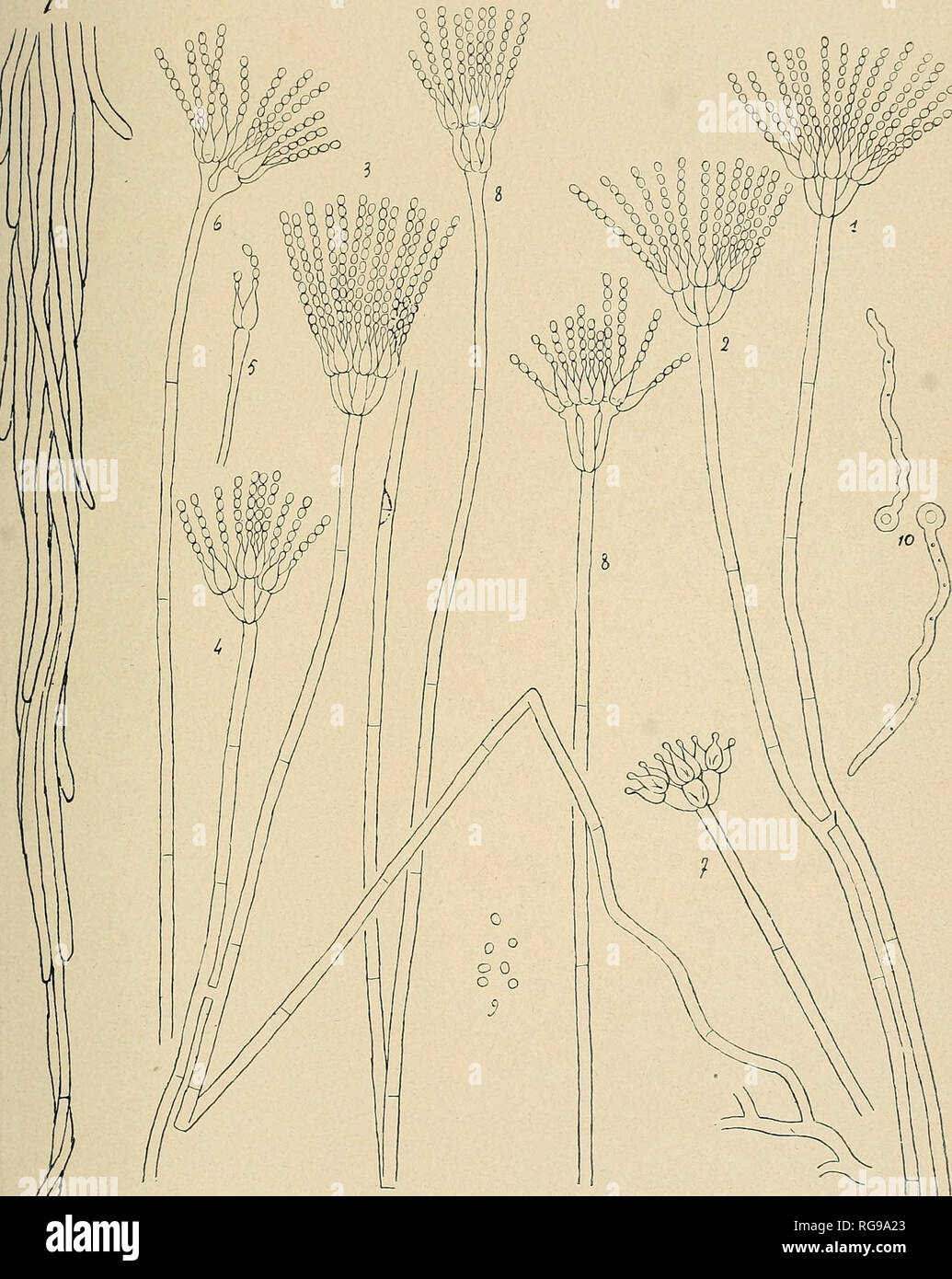 . Bulletin trimestriel de la Société mycologique de France. Mycology; Fungi; Fungi. BULL. DE LA soc. MYC. de FRANCE. T. XXVIII. PL. VIT.. G. Bainier et Sartory del. Pénicillium Herquei n. sp.. Please note that these images are extracted from scanned page images that may have been digitally enhanced for readability - coloration and appearance of these illustrations may not perfectly resemble the original work.. Société mycologique de France. Paris : La Société Stock Photohttps://www.alamy.com/image-license-details/?v=1https://www.alamy.com/bulletin-trimestriel-de-la-socit-mycologique-de-france-mycology-fungi-fungi-bull-de-la-soc-myc-de-france-t-xxviii-pl-vit-g-bainier-et-sartory-del-pnicillium-herquei-n-sp-please-note-that-these-images-are-extracted-from-scanned-page-images-that-may-have-been-digitally-enhanced-for-readability-coloration-and-appearance-of-these-illustrations-may-not-perfectly-resemble-the-original-work-socit-mycologique-de-france-paris-la-socit-image233774747.html
. Bulletin trimestriel de la Société mycologique de France. Mycology; Fungi; Fungi. BULL. DE LA soc. MYC. de FRANCE. T. XXVIII. PL. VIT.. G. Bainier et Sartory del. Pénicillium Herquei n. sp.. Please note that these images are extracted from scanned page images that may have been digitally enhanced for readability - coloration and appearance of these illustrations may not perfectly resemble the original work.. Société mycologique de France. Paris : La Société Stock Photohttps://www.alamy.com/image-license-details/?v=1https://www.alamy.com/bulletin-trimestriel-de-la-socit-mycologique-de-france-mycology-fungi-fungi-bull-de-la-soc-myc-de-france-t-xxviii-pl-vit-g-bainier-et-sartory-del-pnicillium-herquei-n-sp-please-note-that-these-images-are-extracted-from-scanned-page-images-that-may-have-been-digitally-enhanced-for-readability-coloration-and-appearance-of-these-illustrations-may-not-perfectly-resemble-the-original-work-socit-mycologique-de-france-paris-la-socit-image233774747.htmlRMRG9A23–. Bulletin trimestriel de la Société mycologique de France. Mycology; Fungi; Fungi. BULL. DE LA soc. MYC. de FRANCE. T. XXVIII. PL. VIT.. G. Bainier et Sartory del. Pénicillium Herquei n. sp.. Please note that these images are extracted from scanned page images that may have been digitally enhanced for readability - coloration and appearance of these illustrations may not perfectly resemble the original work.. Société mycologique de France. Paris : La Société
 Penicillium fungus. Microscopic EM coloured image of penicillium chrysogenum fungus. Stock Photohttps://www.alamy.com/image-license-details/?v=1https://www.alamy.com/penicillium-fungus-microscopic-em-coloured-image-of-penicillium-chrysogenum-fungus-image232939354.html
Penicillium fungus. Microscopic EM coloured image of penicillium chrysogenum fungus. Stock Photohttps://www.alamy.com/image-license-details/?v=1https://www.alamy.com/penicillium-fungus-microscopic-em-coloured-image-of-penicillium-chrysogenum-fungus-image232939354.htmlRMREY8EJ–Penicillium fungus. Microscopic EM coloured image of penicillium chrysogenum fungus.
 PENICILLIUM CHRYSOGENUM Stock Photohttps://www.alamy.com/image-license-details/?v=1https://www.alamy.com/stock-photo-penicillium-chrysogenum-130788873.html
PENICILLIUM CHRYSOGENUM Stock Photohttps://www.alamy.com/image-license-details/?v=1https://www.alamy.com/stock-photo-penicillium-chrysogenum-130788873.htmlRMHGNXF5–PENICILLIUM CHRYSOGENUM
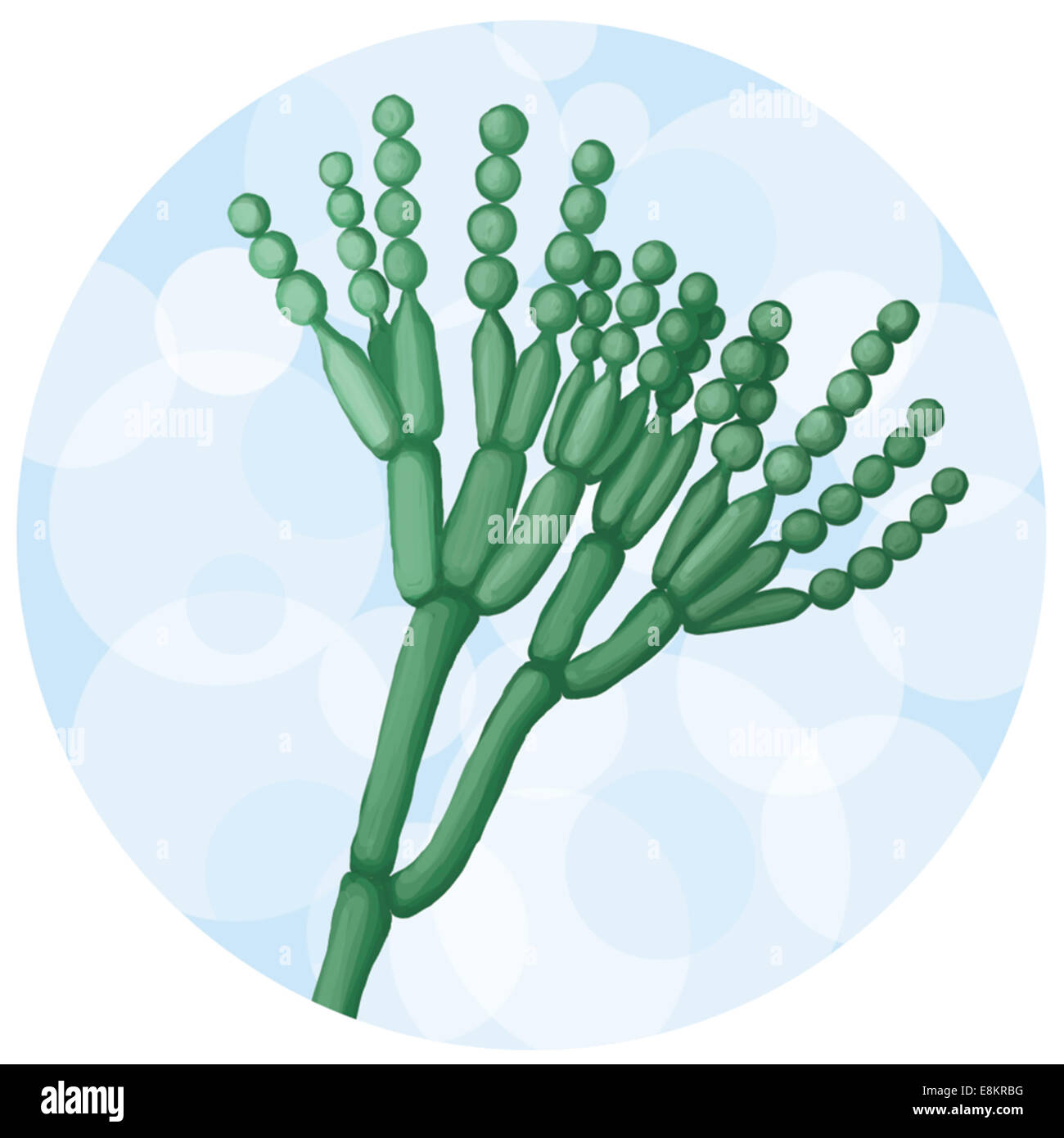 Penicillium. Stock Photohttps://www.alamy.com/image-license-details/?v=1https://www.alamy.com/stock-photo-penicillium-74194164.html
Penicillium. Stock Photohttps://www.alamy.com/image-license-details/?v=1https://www.alamy.com/stock-photo-penicillium-74194164.htmlRME8KRBG–Penicillium.
 Penicillium chrysogenum mould growing on a loaf of bread. Penicillium is used to make the antibiotic penicllin Stock Photohttps://www.alamy.com/image-license-details/?v=1https://www.alamy.com/penicillium-chrysogenum-mould-growing-on-a-loaf-of-bread-penicillium-is-used-to-make-the-antibiotic-penicllin-image383115477.html
Penicillium chrysogenum mould growing on a loaf of bread. Penicillium is used to make the antibiotic penicllin Stock Photohttps://www.alamy.com/image-license-details/?v=1https://www.alamy.com/penicillium-chrysogenum-mould-growing-on-a-loaf-of-bread-penicillium-is-used-to-make-the-antibiotic-penicllin-image383115477.htmlRF2D78BKH–Penicillium chrysogenum mould growing on a loaf of bread. Penicillium is used to make the antibiotic penicllin
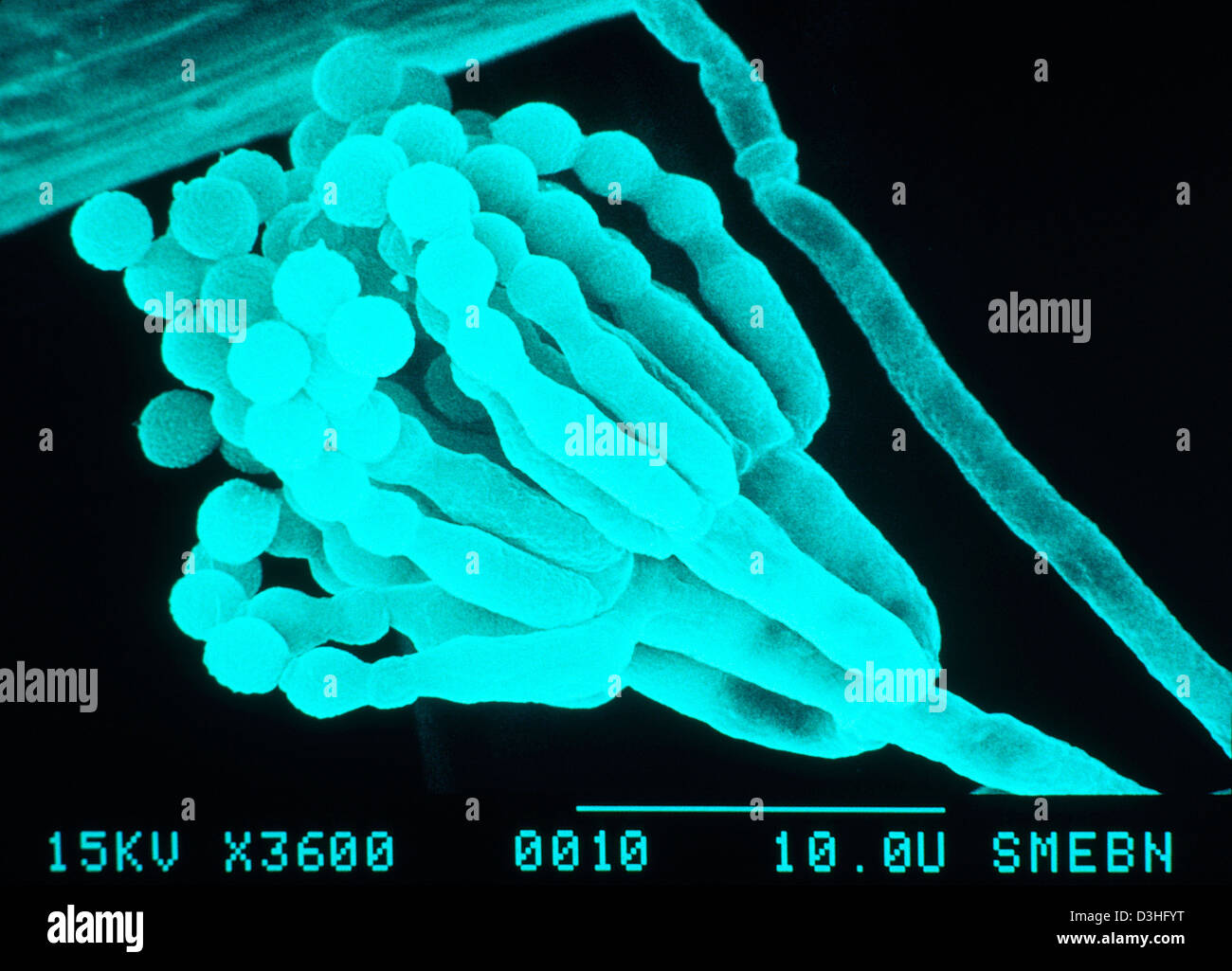 PENICILLIUM Stock Photohttps://www.alamy.com/image-license-details/?v=1https://www.alamy.com/stock-photo-penicillium-53860796.html
PENICILLIUM Stock Photohttps://www.alamy.com/image-license-details/?v=1https://www.alamy.com/stock-photo-penicillium-53860796.htmlRMD3HFYT–PENICILLIUM
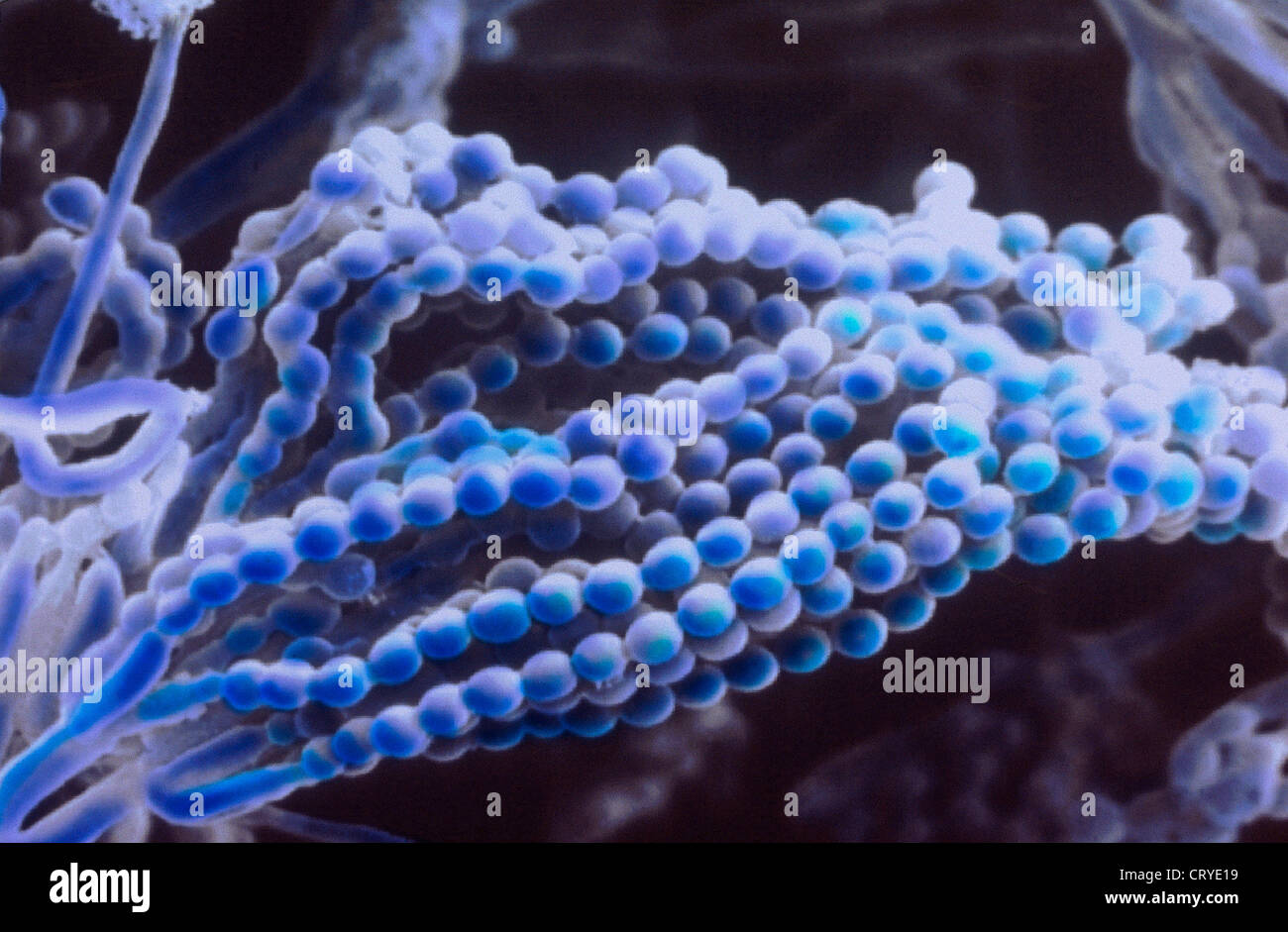 PENICILLIUM Stock Photohttps://www.alamy.com/image-license-details/?v=1https://www.alamy.com/stock-photo-penicillium-49161541.html
PENICILLIUM Stock Photohttps://www.alamy.com/image-license-details/?v=1https://www.alamy.com/stock-photo-penicillium-49161541.htmlRMCRYE19–PENICILLIUM
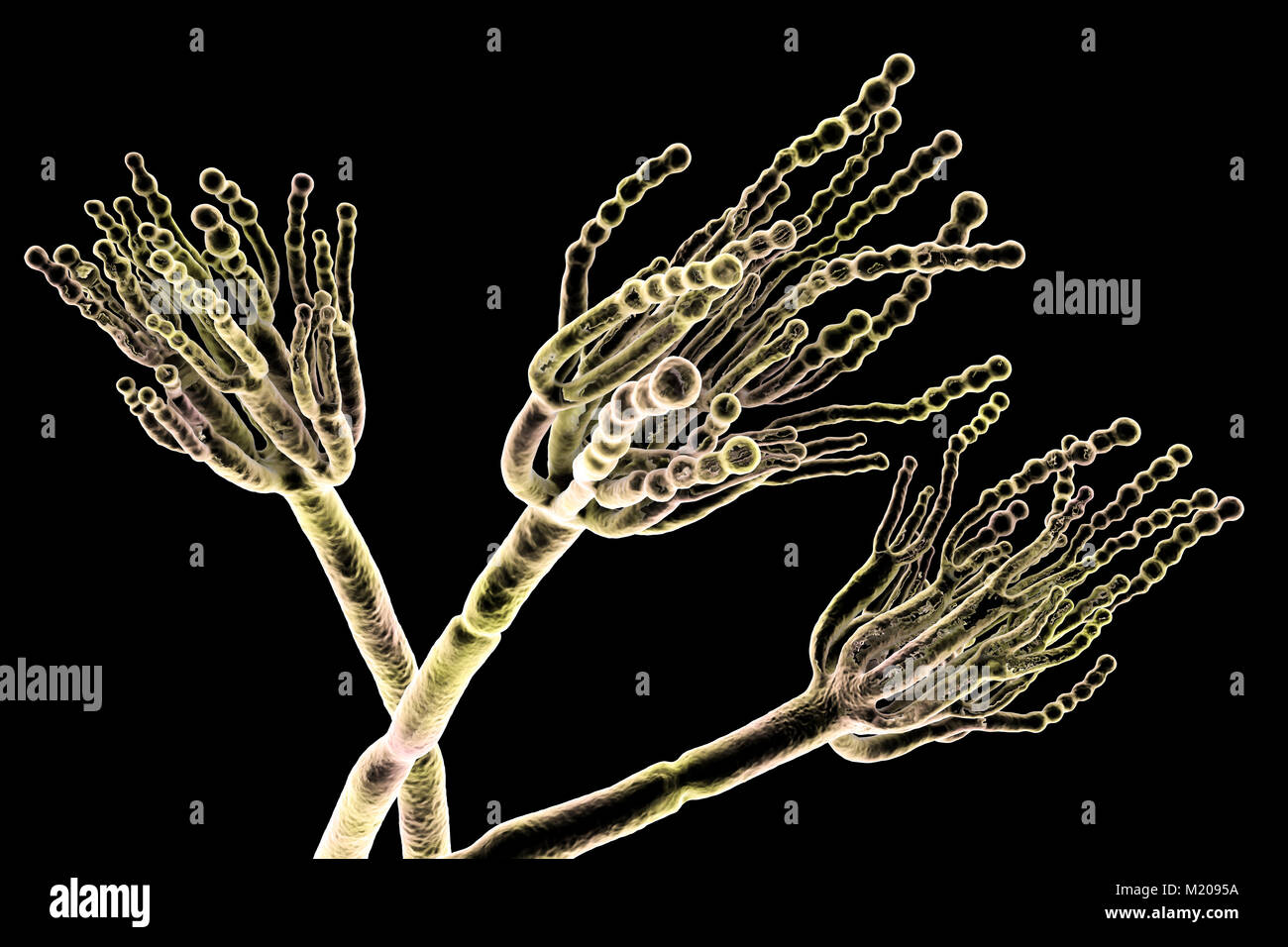 Penicillium fungus. Computer illustration of a Penicillium sp. fungus. Specialised threads, called conidiophores, are seen. Bunches of spores, called conidia, are the fungal reproductive units. The antibiotic penicillin is obtained from certain types of Penicillium fungi. Other types are used in the fermentation of cheeses. Stock Photohttps://www.alamy.com/image-license-details/?v=1https://www.alamy.com/stock-photo-penicillium-fungus-computer-illustration-of-a-penicillium-sp-fungus-173340198.html
Penicillium fungus. Computer illustration of a Penicillium sp. fungus. Specialised threads, called conidiophores, are seen. Bunches of spores, called conidia, are the fungal reproductive units. The antibiotic penicillin is obtained from certain types of Penicillium fungi. Other types are used in the fermentation of cheeses. Stock Photohttps://www.alamy.com/image-license-details/?v=1https://www.alamy.com/stock-photo-penicillium-fungus-computer-illustration-of-a-penicillium-sp-fungus-173340198.htmlRFM2095A–Penicillium fungus. Computer illustration of a Penicillium sp. fungus. Specialised threads, called conidiophores, are seen. Bunches of spores, called conidia, are the fungal reproductive units. The antibiotic penicillin is obtained from certain types of Penicillium fungi. Other types are used in the fermentation of cheeses.
 . Biological control of fusarium crown rot of tomato. Tomato wilts; Tomatoes. II 18 2"5 32 39 DAYS AFTER FUMIGATION 46 Figure J. The relationship of percentage of infection of tomato ('Bonnie Best*) (â¢â â â â â¢) and inoculum density of Fusarium oxysporum f. sp. radicis- lycopersici (OlllllO) to time after fumigation of soils which were amended with three isolates of Trichoderma harzianum, one isolate of Aspergillus ochraceus, and one isolate of Penicillium restrictum at 1000 conidia of each isolate per gram of soil; the pathogen subsequently was added at 1000 chlamydospores per gram to Stock Photohttps://www.alamy.com/image-license-details/?v=1https://www.alamy.com/biological-control-of-fusarium-crown-rot-of-tomato-tomato-wilts-tomatoes-ii-18-2quot5-32-39-days-after-fumigation-46-figure-j-the-relationship-of-percentage-of-infection-of-tomato-bonnie-best-and-inoculum-density-of-fusarium-oxysporum-f-sp-radicis-lycopersici-olllllo-to-time-after-fumigation-of-soils-which-were-amended-with-three-isolates-of-trichoderma-harzianum-one-isolate-of-aspergillus-ochraceus-and-one-isolate-of-penicillium-restrictum-at-1000-conidia-of-each-isolate-per-gram-of-soil-the-pathogen-subsequently-was-added-at-1000-chlamydospores-per-gram-to-image234541989.html
. Biological control of fusarium crown rot of tomato. Tomato wilts; Tomatoes. II 18 2"5 32 39 DAYS AFTER FUMIGATION 46 Figure J. The relationship of percentage of infection of tomato ('Bonnie Best*) (â¢â â â â â¢) and inoculum density of Fusarium oxysporum f. sp. radicis- lycopersici (OlllllO) to time after fumigation of soils which were amended with three isolates of Trichoderma harzianum, one isolate of Aspergillus ochraceus, and one isolate of Penicillium restrictum at 1000 conidia of each isolate per gram of soil; the pathogen subsequently was added at 1000 chlamydospores per gram to Stock Photohttps://www.alamy.com/image-license-details/?v=1https://www.alamy.com/biological-control-of-fusarium-crown-rot-of-tomato-tomato-wilts-tomatoes-ii-18-2quot5-32-39-days-after-fumigation-46-figure-j-the-relationship-of-percentage-of-infection-of-tomato-bonnie-best-and-inoculum-density-of-fusarium-oxysporum-f-sp-radicis-lycopersici-olllllo-to-time-after-fumigation-of-soils-which-were-amended-with-three-isolates-of-trichoderma-harzianum-one-isolate-of-aspergillus-ochraceus-and-one-isolate-of-penicillium-restrictum-at-1000-conidia-of-each-isolate-per-gram-of-soil-the-pathogen-subsequently-was-added-at-1000-chlamydospores-per-gram-to-image234541989.htmlRMRHG8KH–. Biological control of fusarium crown rot of tomato. Tomato wilts; Tomatoes. II 18 2"5 32 39 DAYS AFTER FUMIGATION 46 Figure J. The relationship of percentage of infection of tomato ('Bonnie Best*) (â¢â â â â â¢) and inoculum density of Fusarium oxysporum f. sp. radicis- lycopersici (OlllllO) to time after fumigation of soils which were amended with three isolates of Trichoderma harzianum, one isolate of Aspergillus ochraceus, and one isolate of Penicillium restrictum at 1000 conidia of each isolate per gram of soil; the pathogen subsequently was added at 1000 chlamydospores per gram to
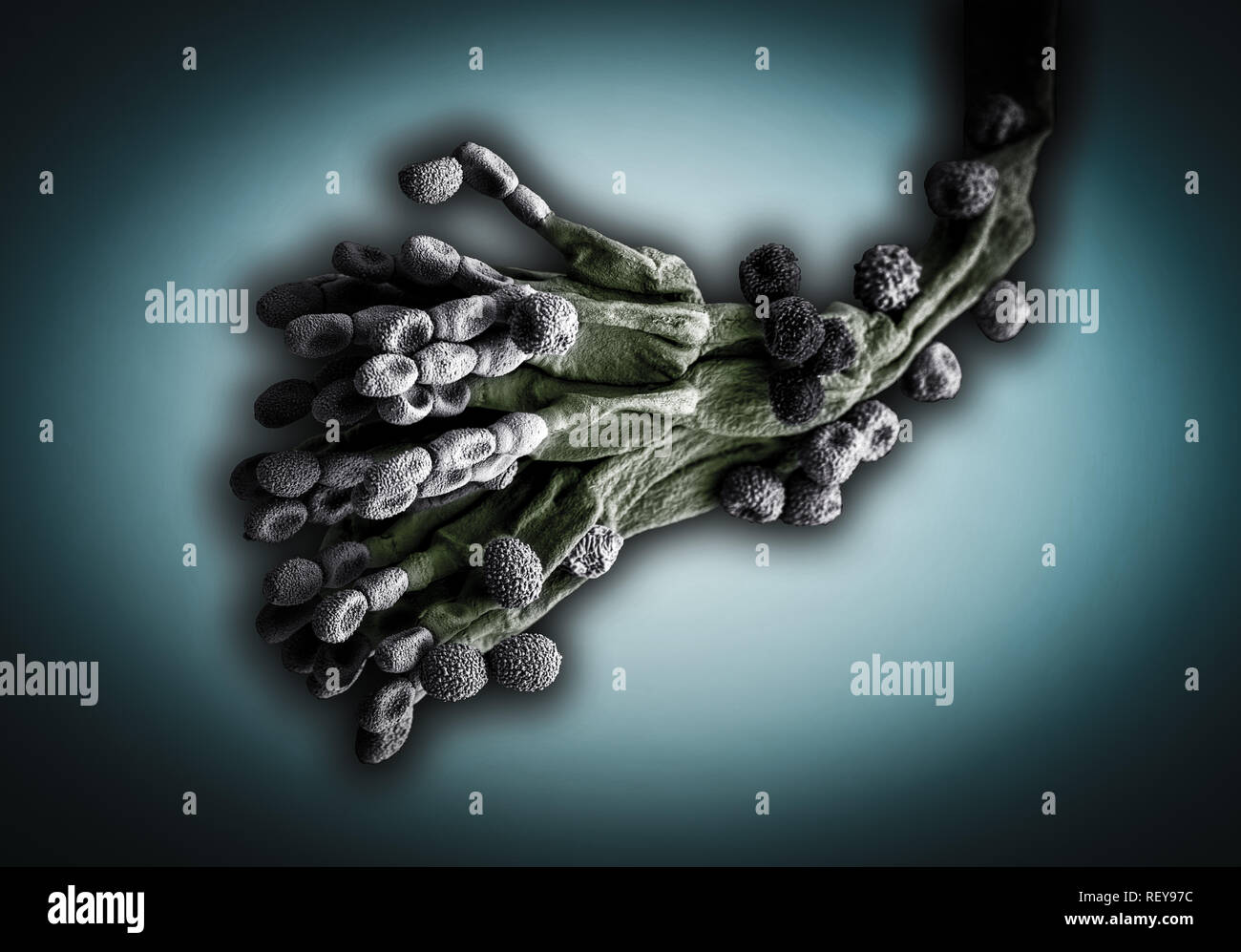 Penicillium fungus. Microscopic EM coloured image of penicillium chrysogenum fungus. Stock Photohttps://www.alamy.com/image-license-details/?v=1https://www.alamy.com/penicillium-fungus-microscopic-em-coloured-image-of-penicillium-chrysogenum-fungus-image232939936.html
Penicillium fungus. Microscopic EM coloured image of penicillium chrysogenum fungus. Stock Photohttps://www.alamy.com/image-license-details/?v=1https://www.alamy.com/penicillium-fungus-microscopic-em-coloured-image-of-penicillium-chrysogenum-fungus-image232939936.htmlRMREY97C–Penicillium fungus. Microscopic EM coloured image of penicillium chrysogenum fungus.
 Penicillium chrysogenum mould growing on a loaf of bread. Penicillium is used to make the antibiotic penicllin Stock Photohttps://www.alamy.com/image-license-details/?v=1https://www.alamy.com/penicillium-chrysogenum-mould-growing-on-a-loaf-of-bread-penicillium-is-used-to-make-the-antibiotic-penicllin-image383115464.html
Penicillium chrysogenum mould growing on a loaf of bread. Penicillium is used to make the antibiotic penicllin Stock Photohttps://www.alamy.com/image-license-details/?v=1https://www.alamy.com/penicillium-chrysogenum-mould-growing-on-a-loaf-of-bread-penicillium-is-used-to-make-the-antibiotic-penicllin-image383115464.htmlRF2D78BK4–Penicillium chrysogenum mould growing on a loaf of bread. Penicillium is used to make the antibiotic penicllin
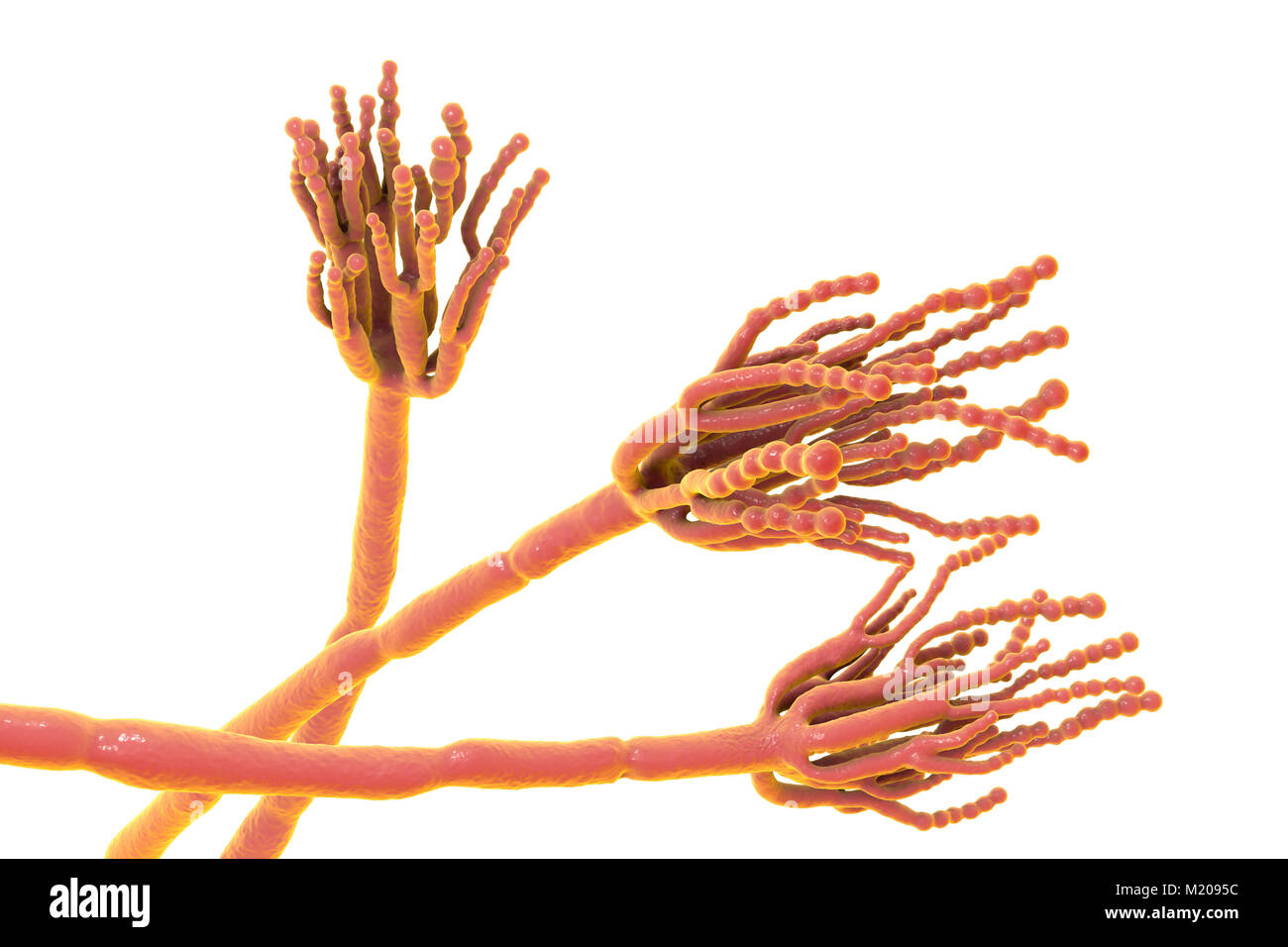 Penicillium fungus. Computer illustration of a Penicillium sp. fungus. Specialised threads, called conidiophores, are seen. Bunches of spores, called conidia, are the fungal reproductive units. The antibiotic penicillin is obtained from certain types of Penicillium fungi. Other types are used in the fermentation of cheeses. Stock Photohttps://www.alamy.com/image-license-details/?v=1https://www.alamy.com/stock-photo-penicillium-fungus-computer-illustration-of-a-penicillium-sp-fungus-173340200.html
Penicillium fungus. Computer illustration of a Penicillium sp. fungus. Specialised threads, called conidiophores, are seen. Bunches of spores, called conidia, are the fungal reproductive units. The antibiotic penicillin is obtained from certain types of Penicillium fungi. Other types are used in the fermentation of cheeses. Stock Photohttps://www.alamy.com/image-license-details/?v=1https://www.alamy.com/stock-photo-penicillium-fungus-computer-illustration-of-a-penicillium-sp-fungus-173340200.htmlRFM2095C–Penicillium fungus. Computer illustration of a Penicillium sp. fungus. Specialised threads, called conidiophores, are seen. Bunches of spores, called conidia, are the fungal reproductive units. The antibiotic penicillin is obtained from certain types of Penicillium fungi. Other types are used in the fermentation of cheeses.
 Coloured scanning electron micrograph (SEM) of Mould, hyphae, conidiophores (fruiting structures) and conidium (asexual spore) formation (Penicillium sp.;likely Penicillum candidum). Penicillium candidum is used to develop many soft-ripened cheeses such as Brie. Antibiotic penicillins are synthesized from strains of this genus. Magnification: x275 when shortest axis printed at 25 millimetres. Stock Photohttps://www.alamy.com/image-license-details/?v=1https://www.alamy.com/stock-photo-coloured-scanning-electron-micrograph-sem-of-mould-hyphae-conidiophores-131545399.html
Coloured scanning electron micrograph (SEM) of Mould, hyphae, conidiophores (fruiting structures) and conidium (asexual spore) formation (Penicillium sp.;likely Penicillum candidum). Penicillium candidum is used to develop many soft-ripened cheeses such as Brie. Antibiotic penicillins are synthesized from strains of this genus. Magnification: x275 when shortest axis printed at 25 millimetres. Stock Photohttps://www.alamy.com/image-license-details/?v=1https://www.alamy.com/stock-photo-coloured-scanning-electron-micrograph-sem-of-mould-hyphae-conidiophores-131545399.htmlRFHJ0BDY–Coloured scanning electron micrograph (SEM) of Mould, hyphae, conidiophores (fruiting structures) and conidium (asexual spore) formation (Penicillium sp.;likely Penicillum candidum). Penicillium candidum is used to develop many soft-ripened cheeses such as Brie. Antibiotic penicillins are synthesized from strains of this genus. Magnification: x275 when shortest axis printed at 25 millimetres.
 . Comparative morphology of Fungi. Fungi. Fig. 5.—Mucor Mucedo. 1. Sporangium with spor- angial wall, m; sporangiospores, sp; and columella, c. 2. Sporangium rupturing intermediate substance, z. (After Brefeld.) Fig. 6.—Penicillium crusta- ceum. Conidiophores. St, ster- igma; Ph, phialide; M, metula; A, primary branch. (After Strasburger.) called pycnia (pycnidia) and the conidia themselves (for better differ- entiation from other conidia) are called pycnospores, pycnidiospores or stylospores. In case the pycnia arise by growth and division of a single portion of a hypha with the aid of neighb Stock Photohttps://www.alamy.com/image-license-details/?v=1https://www.alamy.com/comparative-morphology-of-fungi-fungi-fig-5mucor-mucedo-1-sporangium-with-spor-angial-wall-m-sporangiospores-sp-and-columella-c-2-sporangium-rupturing-intermediate-substance-z-after-brefeld-fig-6penicillium-crusta-ceum-conidiophores-st-ster-igma-ph-phialide-m-metula-a-primary-branch-after-strasburger-called-pycnia-pycnidia-and-the-conidia-themselves-for-better-differ-entiation-from-other-conidia-are-called-pycnospores-pycnidiospores-or-stylospores-in-case-the-pycnia-arise-by-growth-and-division-of-a-single-portion-of-a-hypha-with-the-aid-of-neighb-image232677243.html
. Comparative morphology of Fungi. Fungi. Fig. 5.—Mucor Mucedo. 1. Sporangium with spor- angial wall, m; sporangiospores, sp; and columella, c. 2. Sporangium rupturing intermediate substance, z. (After Brefeld.) Fig. 6.—Penicillium crusta- ceum. Conidiophores. St, ster- igma; Ph, phialide; M, metula; A, primary branch. (After Strasburger.) called pycnia (pycnidia) and the conidia themselves (for better differ- entiation from other conidia) are called pycnospores, pycnidiospores or stylospores. In case the pycnia arise by growth and division of a single portion of a hypha with the aid of neighb Stock Photohttps://www.alamy.com/image-license-details/?v=1https://www.alamy.com/comparative-morphology-of-fungi-fungi-fig-5mucor-mucedo-1-sporangium-with-spor-angial-wall-m-sporangiospores-sp-and-columella-c-2-sporangium-rupturing-intermediate-substance-z-after-brefeld-fig-6penicillium-crusta-ceum-conidiophores-st-ster-igma-ph-phialide-m-metula-a-primary-branch-after-strasburger-called-pycnia-pycnidia-and-the-conidia-themselves-for-better-differ-entiation-from-other-conidia-are-called-pycnospores-pycnidiospores-or-stylospores-in-case-the-pycnia-arise-by-growth-and-division-of-a-single-portion-of-a-hypha-with-the-aid-of-neighb-image232677243.htmlRMREFA5F–. Comparative morphology of Fungi. Fungi. Fig. 5.—Mucor Mucedo. 1. Sporangium with spor- angial wall, m; sporangiospores, sp; and columella, c. 2. Sporangium rupturing intermediate substance, z. (After Brefeld.) Fig. 6.—Penicillium crusta- ceum. Conidiophores. St, ster- igma; Ph, phialide; M, metula; A, primary branch. (After Strasburger.) called pycnia (pycnidia) and the conidia themselves (for better differ- entiation from other conidia) are called pycnospores, pycnidiospores or stylospores. In case the pycnia arise by growth and division of a single portion of a hypha with the aid of neighb
 Penicillium fungus. Computer illustration of a Penicillium sp. fungus. Specialised threads, called conidiophores, are seen. Bunches of spores, called conidia, are the fungal reproductive units. The antibiotic penicillin is obtained from certain types of Penicillium fungi. Other types are used in the fermentation of cheeses. Stock Photohttps://www.alamy.com/image-license-details/?v=1https://www.alamy.com/stock-image-penicillium-fungus-computer-illustration-of-a-penicillium-sp-fungus-164842952.html
Penicillium fungus. Computer illustration of a Penicillium sp. fungus. Specialised threads, called conidiophores, are seen. Bunches of spores, called conidia, are the fungal reproductive units. The antibiotic penicillin is obtained from certain types of Penicillium fungi. Other types are used in the fermentation of cheeses. Stock Photohttps://www.alamy.com/image-license-details/?v=1https://www.alamy.com/stock-image-penicillium-fungus-computer-illustration-of-a-penicillium-sp-fungus-164842952.htmlRFKG56T8–Penicillium fungus. Computer illustration of a Penicillium sp. fungus. Specialised threads, called conidiophores, are seen. Bunches of spores, called conidia, are the fungal reproductive units. The antibiotic penicillin is obtained from certain types of Penicillium fungi. Other types are used in the fermentation of cheeses.
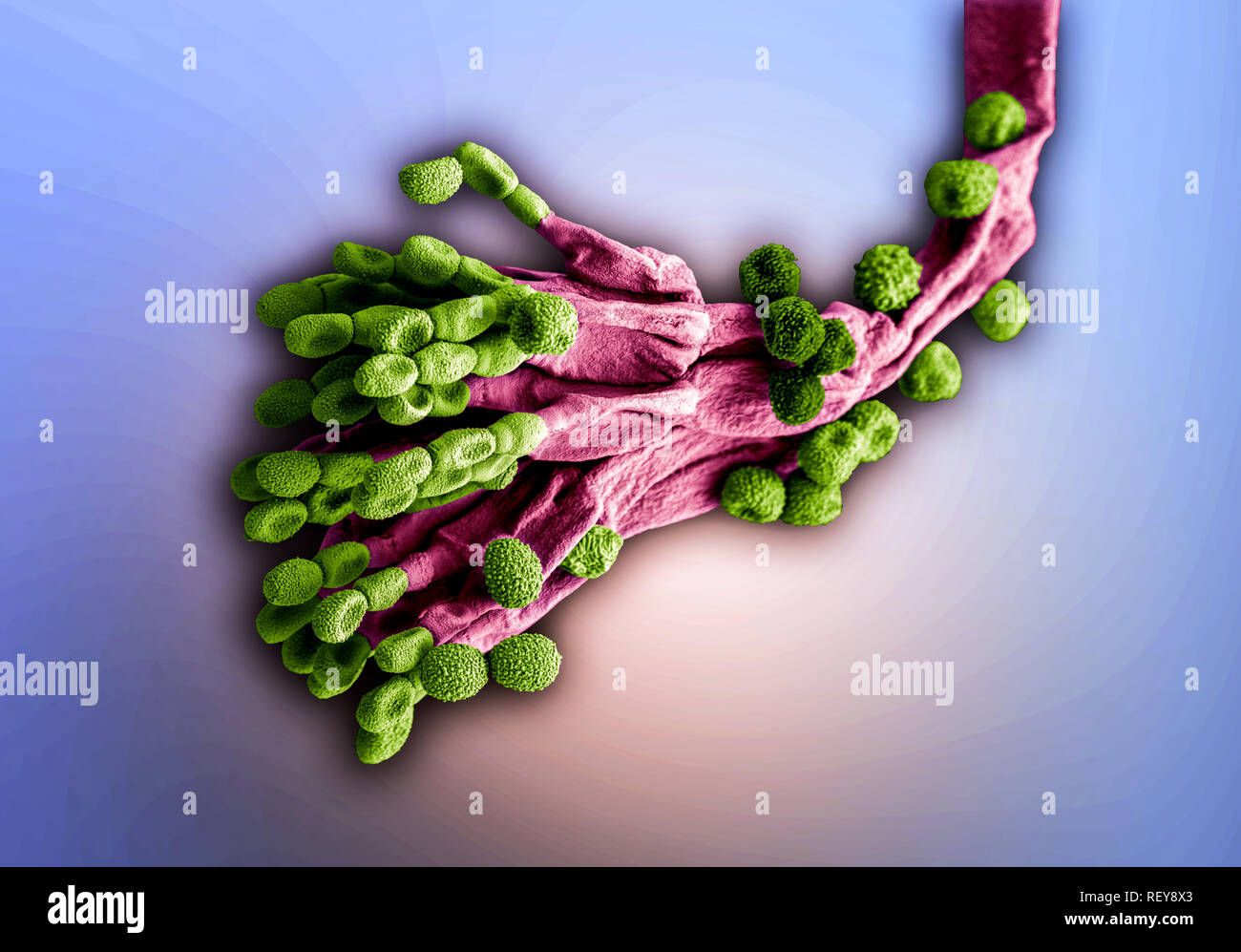 Penicillium fungus. Microscopic EM coloured image of penicillium chrysogenum fungus. Stock Photohttps://www.alamy.com/image-license-details/?v=1https://www.alamy.com/penicillium-fungus-microscopic-em-coloured-image-of-penicillium-chrysogenum-fungus-image232939675.html
Penicillium fungus. Microscopic EM coloured image of penicillium chrysogenum fungus. Stock Photohttps://www.alamy.com/image-license-details/?v=1https://www.alamy.com/penicillium-fungus-microscopic-em-coloured-image-of-penicillium-chrysogenum-fungus-image232939675.htmlRMREY8X3–Penicillium fungus. Microscopic EM coloured image of penicillium chrysogenum fungus.
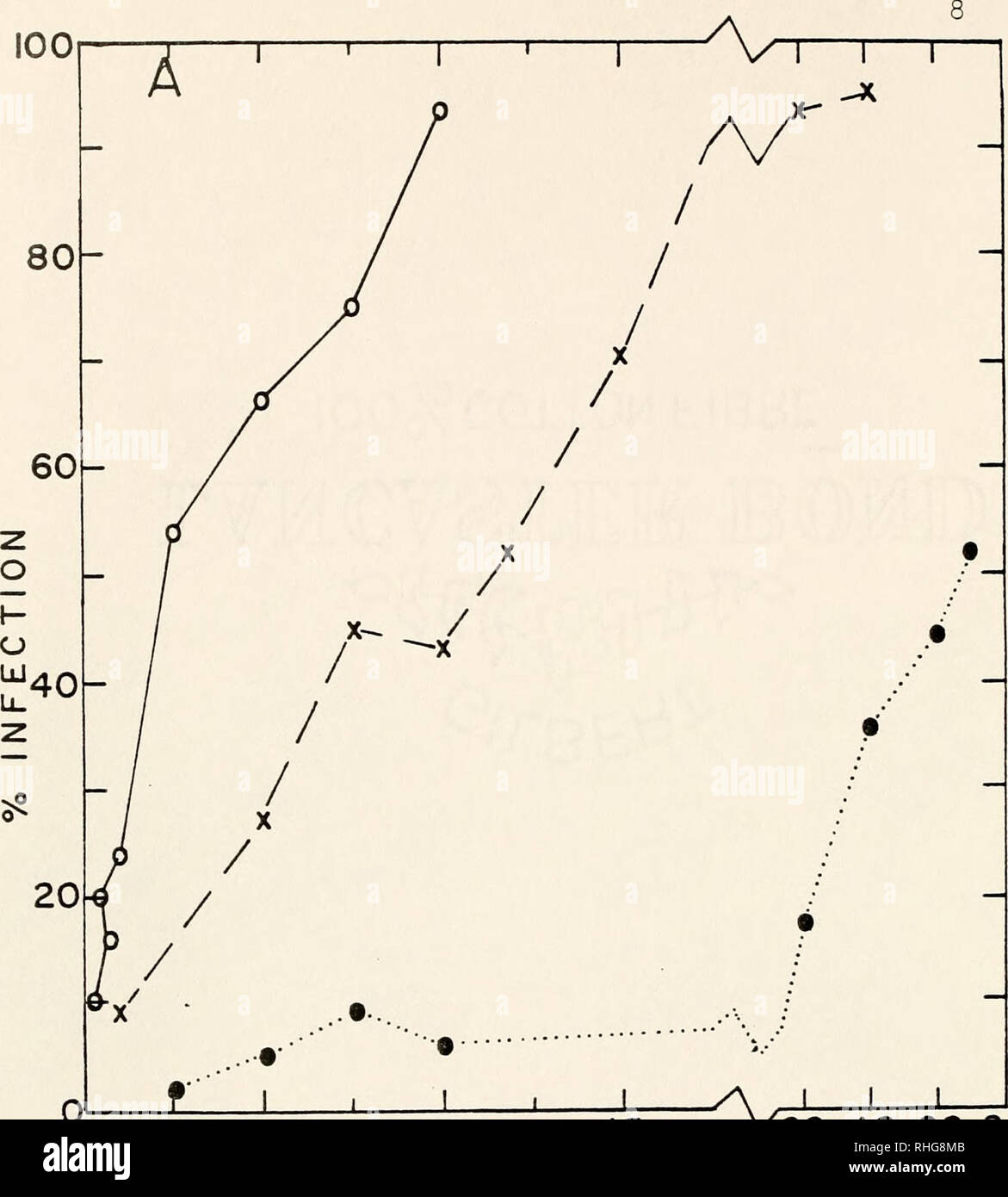 . Biological control of fusarium crown rot of tomato. Tomato wilts; Tomatoes. 5 10 15 ^20 40 60 80 CHLAMYDOSPORES XI02/£S0IL Figure 1 - A. The relationship of percentages of infection of tomato ('Bonnie Best') under growth-chamber conditions to densities of chlamydospores of Fusarium oxysporum f. sp. radicis-lycopersici in fumigated soil (0 0), nonfumigated soil Qt— —X), and fumigated soil amended with Trichoderma harzianum, Aspergillus ochraceus, and Penicillium restrictum p #).. Please note that these images are extracted from scanned page images that may have been digitally enhanced for rea Stock Photohttps://www.alamy.com/image-license-details/?v=1https://www.alamy.com/biological-control-of-fusarium-crown-rot-of-tomato-tomato-wilts-tomatoes-5-10-15-20-40-60-80-chlamydospores-xi02s0il-figure-1-a-the-relationship-of-percentages-of-infection-of-tomato-bonnie-best-under-growth-chamber-conditions-to-densities-of-chlamydospores-of-fusarium-oxysporum-f-sp-radicis-lycopersici-in-fumigated-soil-0-0-nonfumigated-soil-qt-x-and-fumigated-soil-amended-with-trichoderma-harzianum-aspergillus-ochraceus-and-penicillium-restrictum-p-please-note-that-these-images-are-extracted-from-scanned-page-images-that-may-have-been-digitally-enhanced-for-rea-image234542011.html
. Biological control of fusarium crown rot of tomato. Tomato wilts; Tomatoes. 5 10 15 ^20 40 60 80 CHLAMYDOSPORES XI02/£S0IL Figure 1 - A. The relationship of percentages of infection of tomato ('Bonnie Best') under growth-chamber conditions to densities of chlamydospores of Fusarium oxysporum f. sp. radicis-lycopersici in fumigated soil (0 0), nonfumigated soil Qt— —X), and fumigated soil amended with Trichoderma harzianum, Aspergillus ochraceus, and Penicillium restrictum p #).. Please note that these images are extracted from scanned page images that may have been digitally enhanced for rea Stock Photohttps://www.alamy.com/image-license-details/?v=1https://www.alamy.com/biological-control-of-fusarium-crown-rot-of-tomato-tomato-wilts-tomatoes-5-10-15-20-40-60-80-chlamydospores-xi02s0il-figure-1-a-the-relationship-of-percentages-of-infection-of-tomato-bonnie-best-under-growth-chamber-conditions-to-densities-of-chlamydospores-of-fusarium-oxysporum-f-sp-radicis-lycopersici-in-fumigated-soil-0-0-nonfumigated-soil-qt-x-and-fumigated-soil-amended-with-trichoderma-harzianum-aspergillus-ochraceus-and-penicillium-restrictum-p-please-note-that-these-images-are-extracted-from-scanned-page-images-that-may-have-been-digitally-enhanced-for-rea-image234542011.htmlRMRHG8MB–. Biological control of fusarium crown rot of tomato. Tomato wilts; Tomatoes. 5 10 15 ^20 40 60 80 CHLAMYDOSPORES XI02/£S0IL Figure 1 - A. The relationship of percentages of infection of tomato ('Bonnie Best') under growth-chamber conditions to densities of chlamydospores of Fusarium oxysporum f. sp. radicis-lycopersici in fumigated soil (0 0), nonfumigated soil Qt— —X), and fumigated soil amended with Trichoderma harzianum, Aspergillus ochraceus, and Penicillium restrictum p #).. Please note that these images are extracted from scanned page images that may have been digitally enhanced for rea
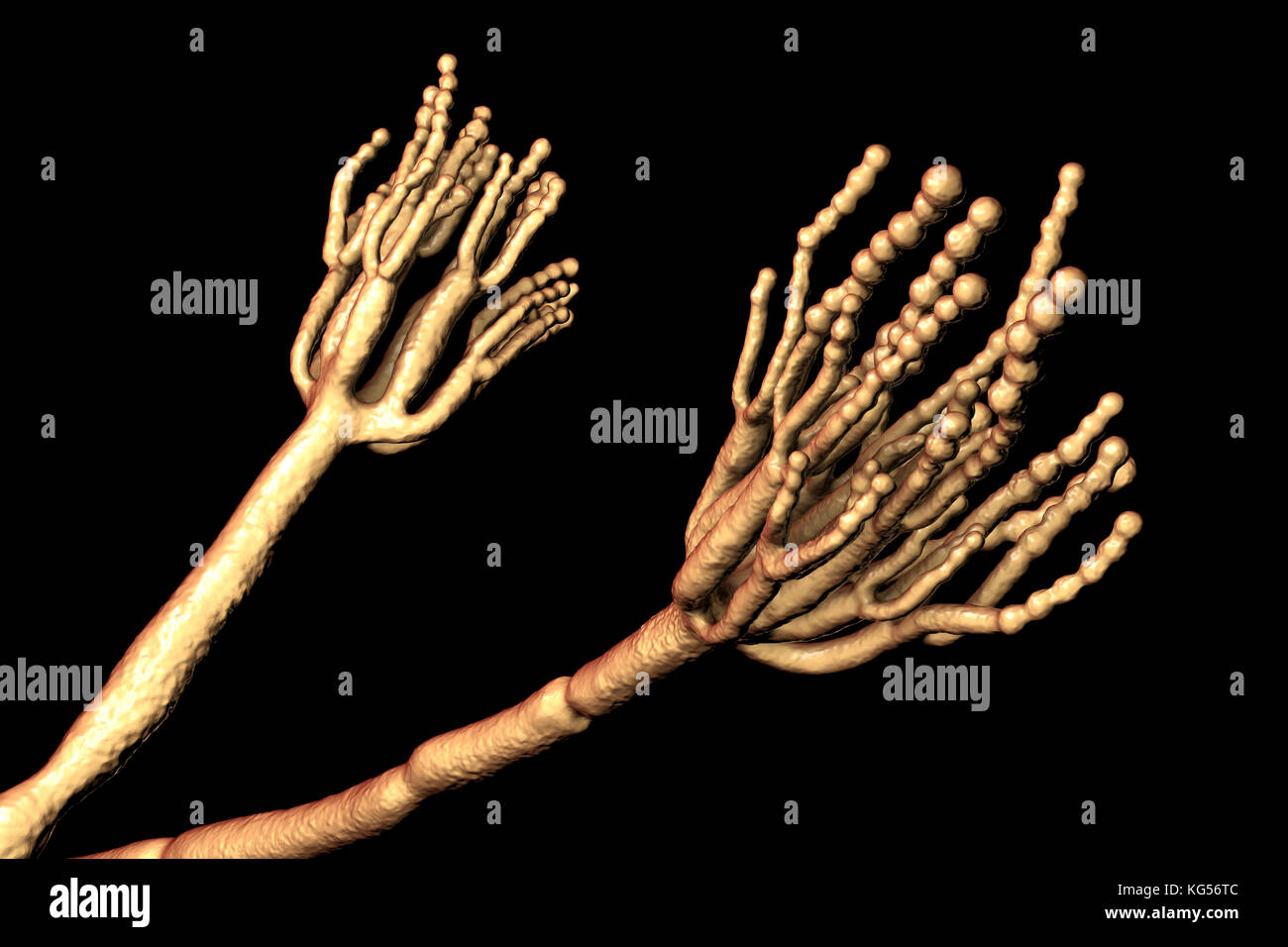 Penicillium fungus. Computer illustration of a Penicillium sp. fungus. Specialised threads, called conidiophores, are seen. Bunches of spores, called conidia, are the fungal reproductive units. The antibiotic penicillin is obtained from certain types of Penicillium fungi. Other types are used in the fermentation of cheeses. Stock Photohttps://www.alamy.com/image-license-details/?v=1https://www.alamy.com/stock-image-penicillium-fungus-computer-illustration-of-a-penicillium-sp-fungus-164842956.html
Penicillium fungus. Computer illustration of a Penicillium sp. fungus. Specialised threads, called conidiophores, are seen. Bunches of spores, called conidia, are the fungal reproductive units. The antibiotic penicillin is obtained from certain types of Penicillium fungi. Other types are used in the fermentation of cheeses. Stock Photohttps://www.alamy.com/image-license-details/?v=1https://www.alamy.com/stock-image-penicillium-fungus-computer-illustration-of-a-penicillium-sp-fungus-164842956.htmlRFKG56TC–Penicillium fungus. Computer illustration of a Penicillium sp. fungus. Specialised threads, called conidiophores, are seen. Bunches of spores, called conidia, are the fungal reproductive units. The antibiotic penicillin is obtained from certain types of Penicillium fungi. Other types are used in the fermentation of cheeses.
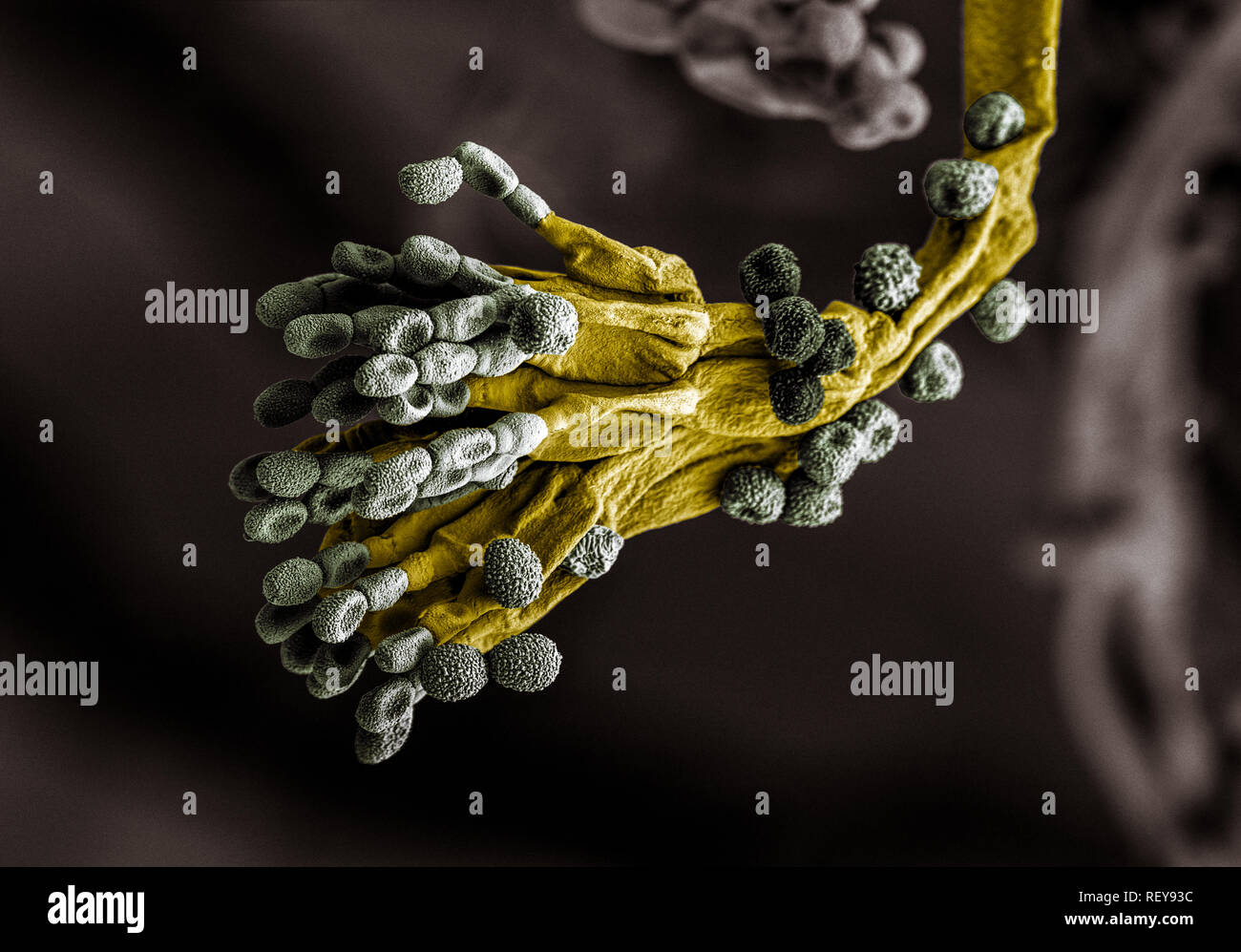 Penicillium fungus. Microscopic EM coloured image of penicillium chrysogenum fungus. Stock Photohttps://www.alamy.com/image-license-details/?v=1https://www.alamy.com/penicillium-fungus-microscopic-em-coloured-image-of-penicillium-chrysogenum-fungus-image232939824.html
Penicillium fungus. Microscopic EM coloured image of penicillium chrysogenum fungus. Stock Photohttps://www.alamy.com/image-license-details/?v=1https://www.alamy.com/penicillium-fungus-microscopic-em-coloured-image-of-penicillium-chrysogenum-fungus-image232939824.htmlRMREY93C–Penicillium fungus. Microscopic EM coloured image of penicillium chrysogenum fungus.
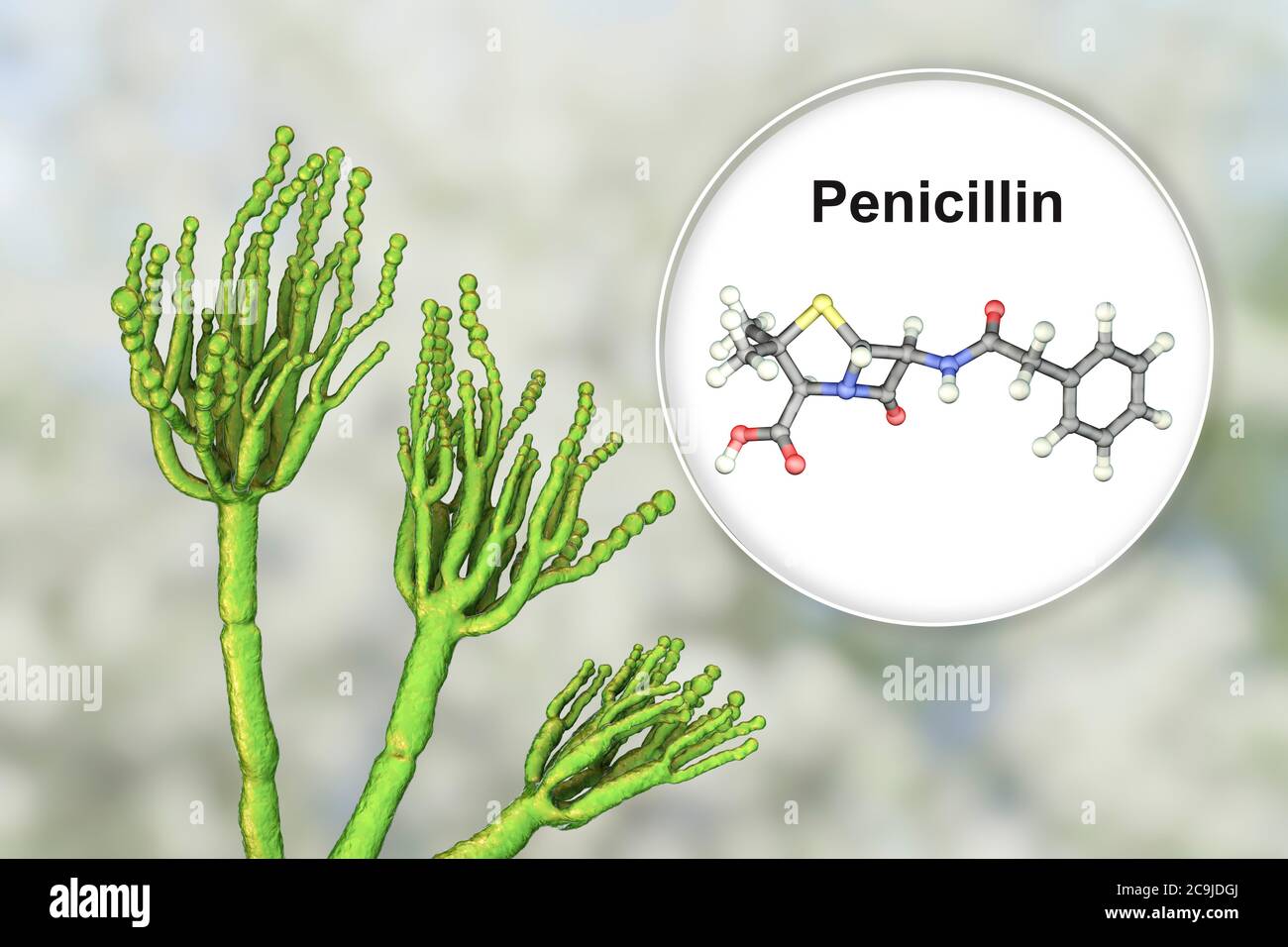 Penicillium fungus and molecule of penicillin antibiotic. Computer illustration of a Penicillium sp. fungus. Specialised threads, called conidiophores Stock Photohttps://www.alamy.com/image-license-details/?v=1https://www.alamy.com/penicillium-fungus-and-molecule-of-penicillin-antibiotic-computer-illustration-of-a-penicillium-sp-fungus-specialised-threads-called-conidiophores-image367355426.html
Penicillium fungus and molecule of penicillin antibiotic. Computer illustration of a Penicillium sp. fungus. Specialised threads, called conidiophores Stock Photohttps://www.alamy.com/image-license-details/?v=1https://www.alamy.com/penicillium-fungus-and-molecule-of-penicillin-antibiotic-computer-illustration-of-a-penicillium-sp-fungus-specialised-threads-called-conidiophores-image367355426.htmlRF2C9JDGJ–Penicillium fungus and molecule of penicillin antibiotic. Computer illustration of a Penicillium sp. fungus. Specialised threads, called conidiophores
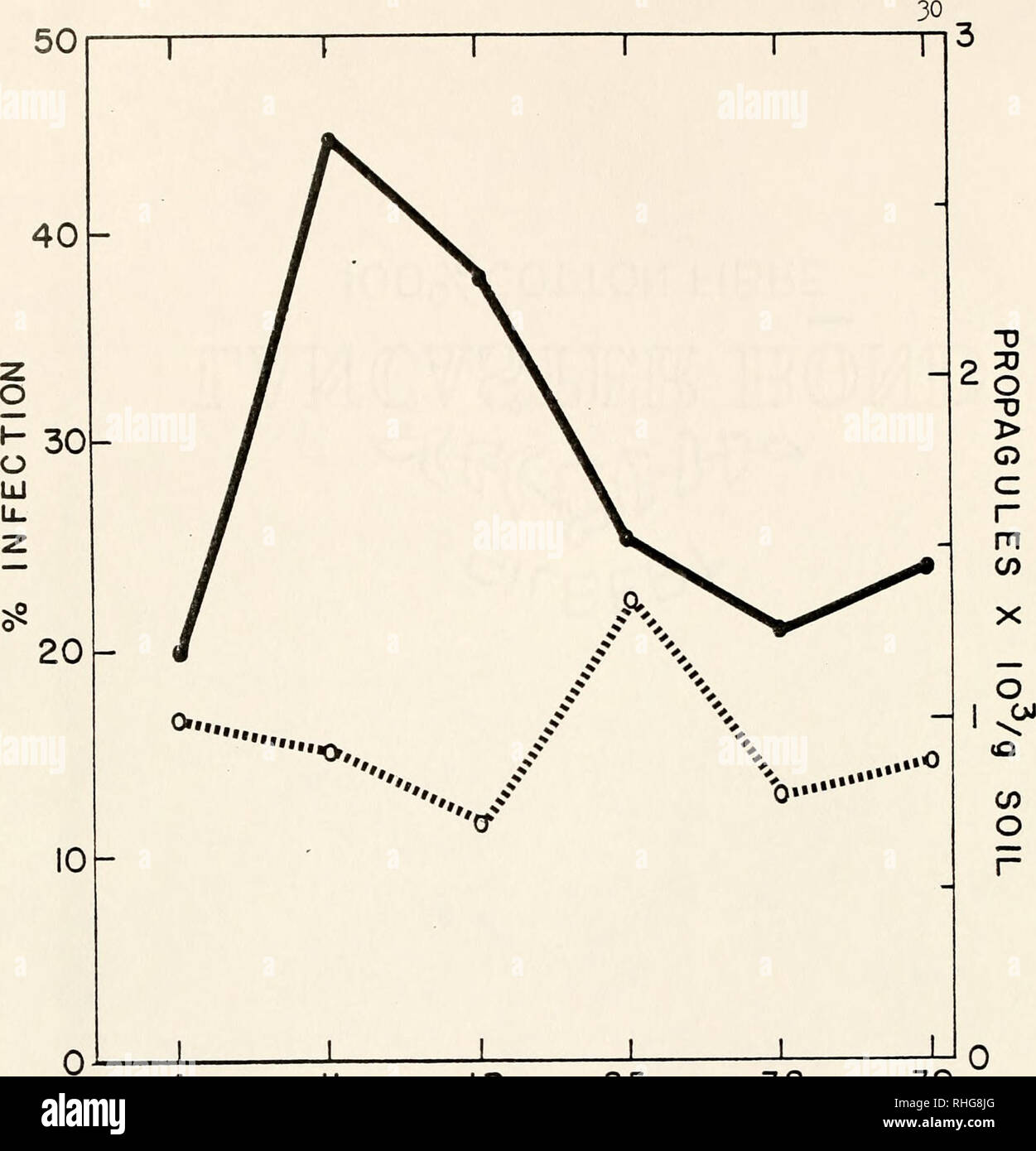 . Biological control of fusarium crown rot of tomato. Tomato wilts; Tomatoes. II 18 25 32 DAYS AFTER FUMIGATION 39 Figure The relationship of percentage of infection of tomato ('Bonnie Best') (â¢â â »â¢) and inoculum density of Fusarium oxysporum f. sp. radicis- lycopersici (oillio) to time after fumigation of soils which were amended with three isolates of Trichoderma harzianum, one isolate of Aspergillus ochraceus, and one isolate of Penicillium restrictum at 1000 conidia of each isolate per gram of soil; the pathogen was added k days after fumigation at 1000 chlamydospores per gram of soil Stock Photohttps://www.alamy.com/image-license-details/?v=1https://www.alamy.com/biological-control-of-fusarium-crown-rot-of-tomato-tomato-wilts-tomatoes-ii-18-25-32-days-after-fumigation-39-figure-the-relationship-of-percentage-of-infection-of-tomato-bonnie-best-and-inoculum-density-of-fusarium-oxysporum-f-sp-radicis-lycopersici-oillio-to-time-after-fumigation-of-soils-which-were-amended-with-three-isolates-of-trichoderma-harzianum-one-isolate-of-aspergillus-ochraceus-and-one-isolate-of-penicillium-restrictum-at-1000-conidia-of-each-isolate-per-gram-of-soil-the-pathogen-was-added-k-days-after-fumigation-at-1000-chlamydospores-per-gram-of-soil-image234541960.html
. Biological control of fusarium crown rot of tomato. Tomato wilts; Tomatoes. II 18 25 32 DAYS AFTER FUMIGATION 39 Figure The relationship of percentage of infection of tomato ('Bonnie Best') (â¢â â »â¢) and inoculum density of Fusarium oxysporum f. sp. radicis- lycopersici (oillio) to time after fumigation of soils which were amended with three isolates of Trichoderma harzianum, one isolate of Aspergillus ochraceus, and one isolate of Penicillium restrictum at 1000 conidia of each isolate per gram of soil; the pathogen was added k days after fumigation at 1000 chlamydospores per gram of soil Stock Photohttps://www.alamy.com/image-license-details/?v=1https://www.alamy.com/biological-control-of-fusarium-crown-rot-of-tomato-tomato-wilts-tomatoes-ii-18-25-32-days-after-fumigation-39-figure-the-relationship-of-percentage-of-infection-of-tomato-bonnie-best-and-inoculum-density-of-fusarium-oxysporum-f-sp-radicis-lycopersici-oillio-to-time-after-fumigation-of-soils-which-were-amended-with-three-isolates-of-trichoderma-harzianum-one-isolate-of-aspergillus-ochraceus-and-one-isolate-of-penicillium-restrictum-at-1000-conidia-of-each-isolate-per-gram-of-soil-the-pathogen-was-added-k-days-after-fumigation-at-1000-chlamydospores-per-gram-of-soil-image234541960.htmlRMRHG8JG–. Biological control of fusarium crown rot of tomato. Tomato wilts; Tomatoes. II 18 25 32 DAYS AFTER FUMIGATION 39 Figure The relationship of percentage of infection of tomato ('Bonnie Best') (â¢â â »â¢) and inoculum density of Fusarium oxysporum f. sp. radicis- lycopersici (oillio) to time after fumigation of soils which were amended with three isolates of Trichoderma harzianum, one isolate of Aspergillus ochraceus, and one isolate of Penicillium restrictum at 1000 conidia of each isolate per gram of soil; the pathogen was added k days after fumigation at 1000 chlamydospores per gram of soil
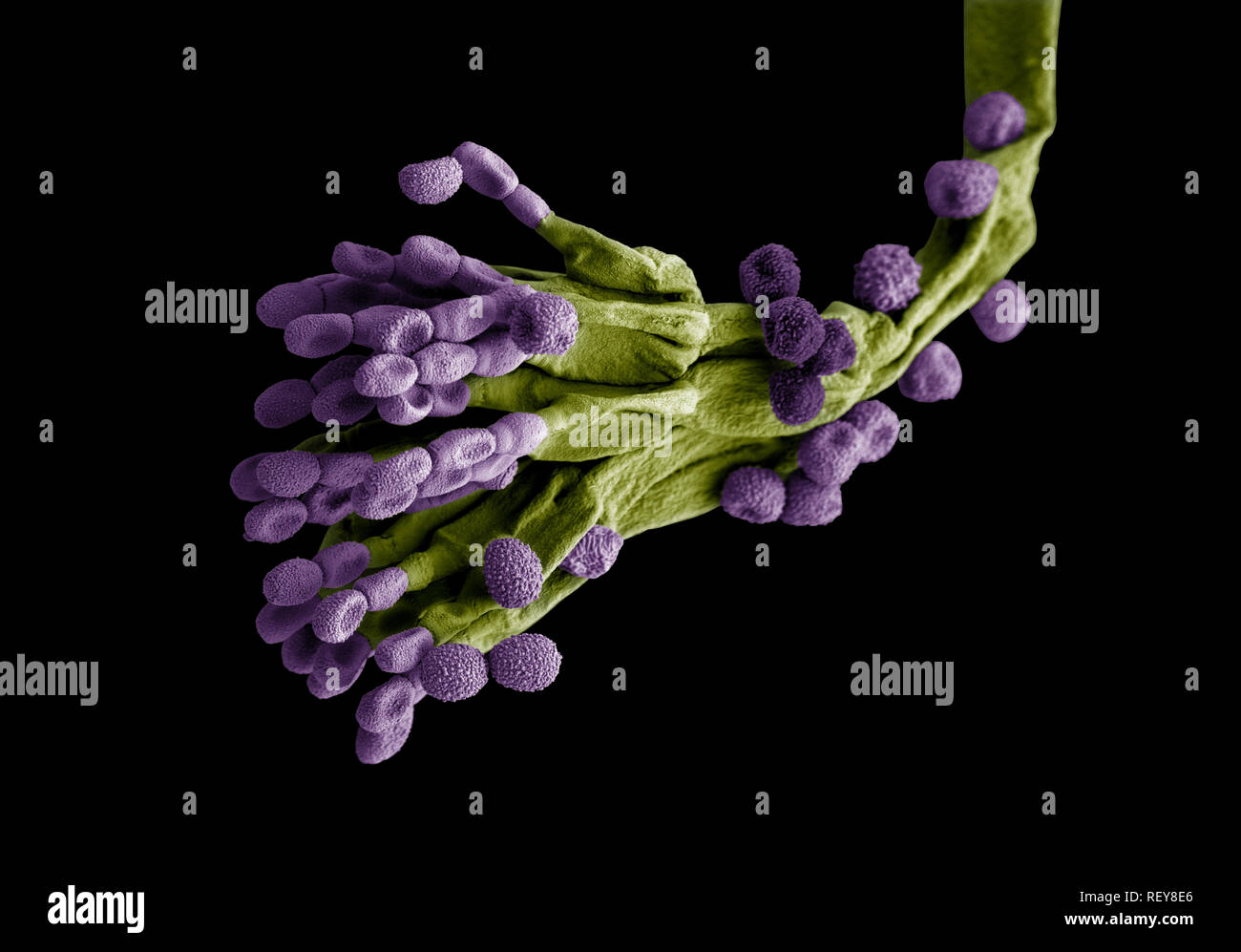 Penicillium fungus. Microscopic EM coloured image of penicillium chrysogenum fungus. Stock Photohttps://www.alamy.com/image-license-details/?v=1https://www.alamy.com/penicillium-fungus-microscopic-em-coloured-image-of-penicillium-chrysogenum-fungus-image232939342.html
Penicillium fungus. Microscopic EM coloured image of penicillium chrysogenum fungus. Stock Photohttps://www.alamy.com/image-license-details/?v=1https://www.alamy.com/penicillium-fungus-microscopic-em-coloured-image-of-penicillium-chrysogenum-fungus-image232939342.htmlRMREY8E6–Penicillium fungus. Microscopic EM coloured image of penicillium chrysogenum fungus.
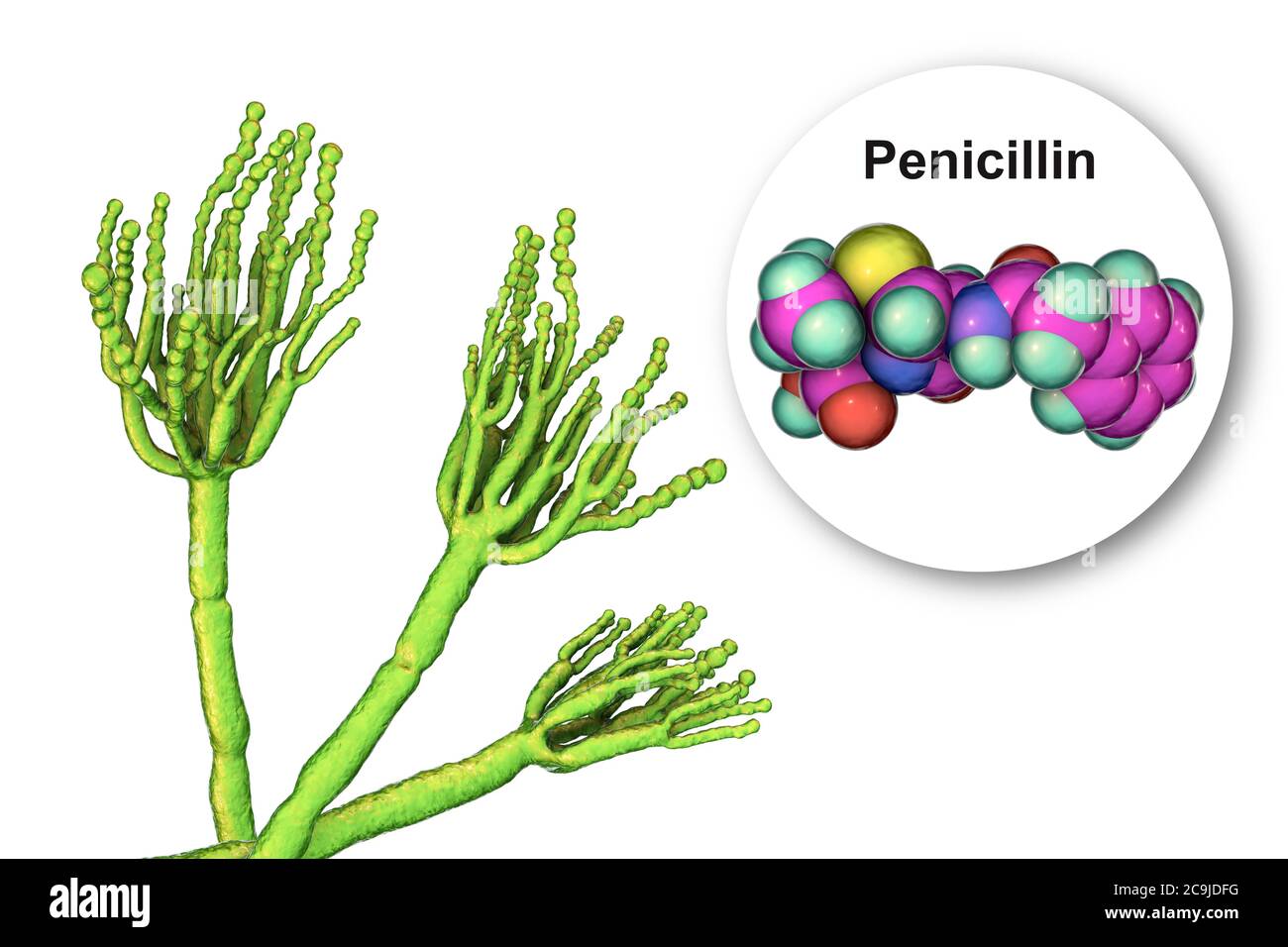 Penicillium fungus and molecule of penicillin antibiotic. Computer illustration of a Penicillium sp. fungus. Specialised threads, called conidiophores Stock Photohttps://www.alamy.com/image-license-details/?v=1https://www.alamy.com/penicillium-fungus-and-molecule-of-penicillin-antibiotic-computer-illustration-of-a-penicillium-sp-fungus-specialised-threads-called-conidiophores-image367355396.html
Penicillium fungus and molecule of penicillin antibiotic. Computer illustration of a Penicillium sp. fungus. Specialised threads, called conidiophores Stock Photohttps://www.alamy.com/image-license-details/?v=1https://www.alamy.com/penicillium-fungus-and-molecule-of-penicillin-antibiotic-computer-illustration-of-a-penicillium-sp-fungus-specialised-threads-called-conidiophores-image367355396.htmlRF2C9JDFG–Penicillium fungus and molecule of penicillin antibiotic. Computer illustration of a Penicillium sp. fungus. Specialised threads, called conidiophores
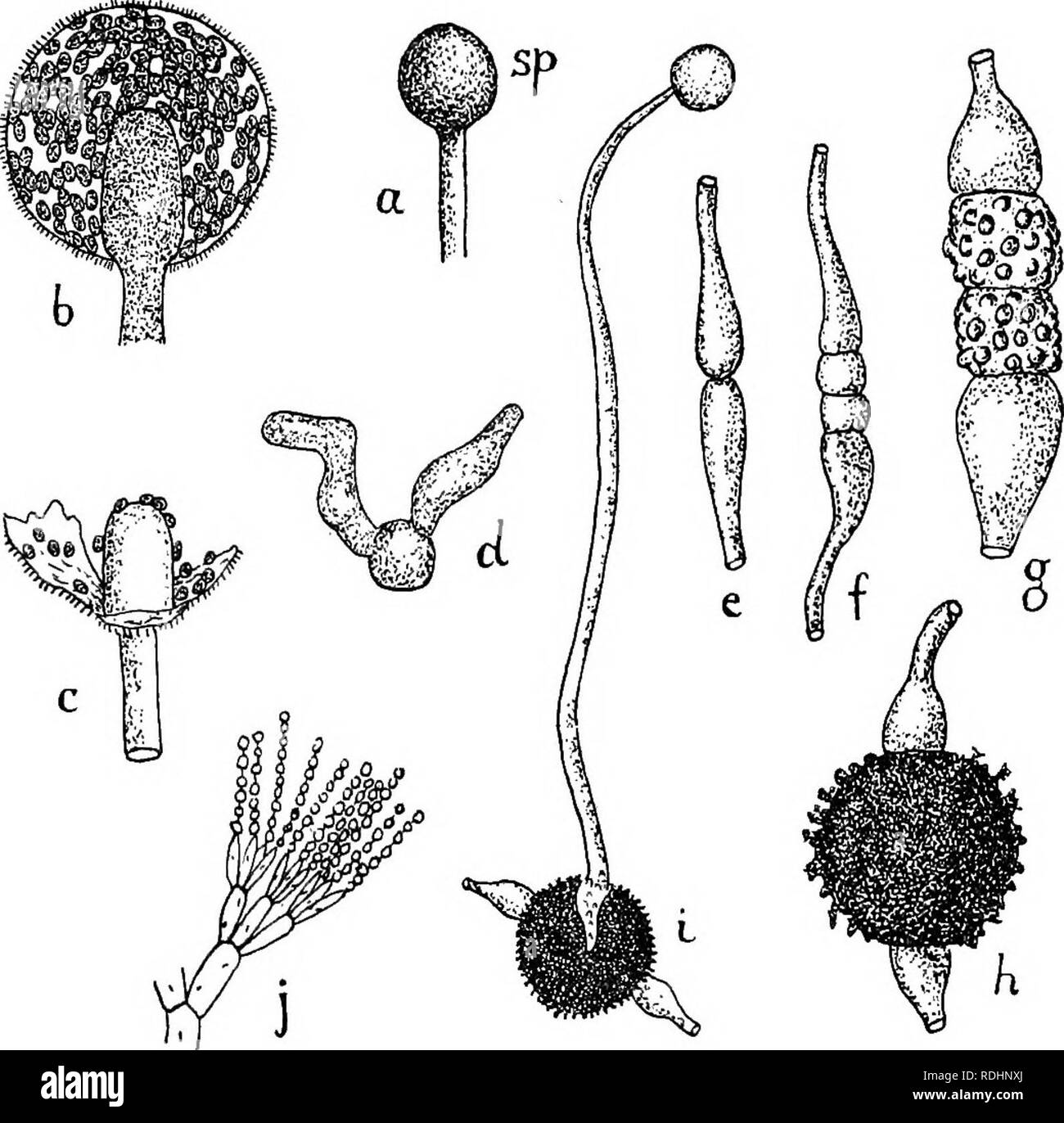 . Elements of plant biology. Plant physiology. PENICILLIUM 165 lightly connected, so that a slight jar or a current of air is sufficient to detach them, and they float off into. Fig. 16.—Reproduction of Mucor. (i) Spore formation (a-H) : a, young sporangium (sp); b, optical section of mature sporangium {col., columella) ; c, remains of sporangium wall after bursting, with a few spores still adhering ; d, germinating spore with two germ tubes. {2) e-h. Conjugation : e, conjugating hyphas in contact; /, separation of tips of conjugating hyphse ; g, later stage; h, mature zygote; i, germination o Stock Photohttps://www.alamy.com/image-license-details/?v=1https://www.alamy.com/elements-of-plant-biology-plant-physiology-penicillium-165-lightly-connected-so-that-a-slight-jar-or-a-current-of-air-is-sufficient-to-detach-them-and-they-float-off-into-fig-16reproduction-of-mucor-i-spore-formation-a-h-a-young-sporangium-sp-b-optical-section-of-mature-sporangium-col-columella-c-remains-of-sporangium-wall-after-bursting-with-a-few-spores-still-adhering-d-germinating-spore-with-two-germ-tubes-2-e-h-conjugation-e-conjugating-hyphas-in-contact-separation-of-tips-of-conjugating-hyphse-g-later-stage-h-mature-zygote-i-germination-o-image232115706.html
. Elements of plant biology. Plant physiology. PENICILLIUM 165 lightly connected, so that a slight jar or a current of air is sufficient to detach them, and they float off into. Fig. 16.—Reproduction of Mucor. (i) Spore formation (a-H) : a, young sporangium (sp); b, optical section of mature sporangium {col., columella) ; c, remains of sporangium wall after bursting, with a few spores still adhering ; d, germinating spore with two germ tubes. {2) e-h. Conjugation : e, conjugating hyphas in contact; /, separation of tips of conjugating hyphse ; g, later stage; h, mature zygote; i, germination o Stock Photohttps://www.alamy.com/image-license-details/?v=1https://www.alamy.com/elements-of-plant-biology-plant-physiology-penicillium-165-lightly-connected-so-that-a-slight-jar-or-a-current-of-air-is-sufficient-to-detach-them-and-they-float-off-into-fig-16reproduction-of-mucor-i-spore-formation-a-h-a-young-sporangium-sp-b-optical-section-of-mature-sporangium-col-columella-c-remains-of-sporangium-wall-after-bursting-with-a-few-spores-still-adhering-d-germinating-spore-with-two-germ-tubes-2-e-h-conjugation-e-conjugating-hyphas-in-contact-separation-of-tips-of-conjugating-hyphse-g-later-stage-h-mature-zygote-i-germination-o-image232115706.htmlRMRDHNXJ–. Elements of plant biology. Plant physiology. PENICILLIUM 165 lightly connected, so that a slight jar or a current of air is sufficient to detach them, and they float off into. Fig. 16.—Reproduction of Mucor. (i) Spore formation (a-H) : a, young sporangium (sp); b, optical section of mature sporangium {col., columella) ; c, remains of sporangium wall after bursting, with a few spores still adhering ; d, germinating spore with two germ tubes. {2) e-h. Conjugation : e, conjugating hyphas in contact; /, separation of tips of conjugating hyphse ; g, later stage; h, mature zygote; i, germination o
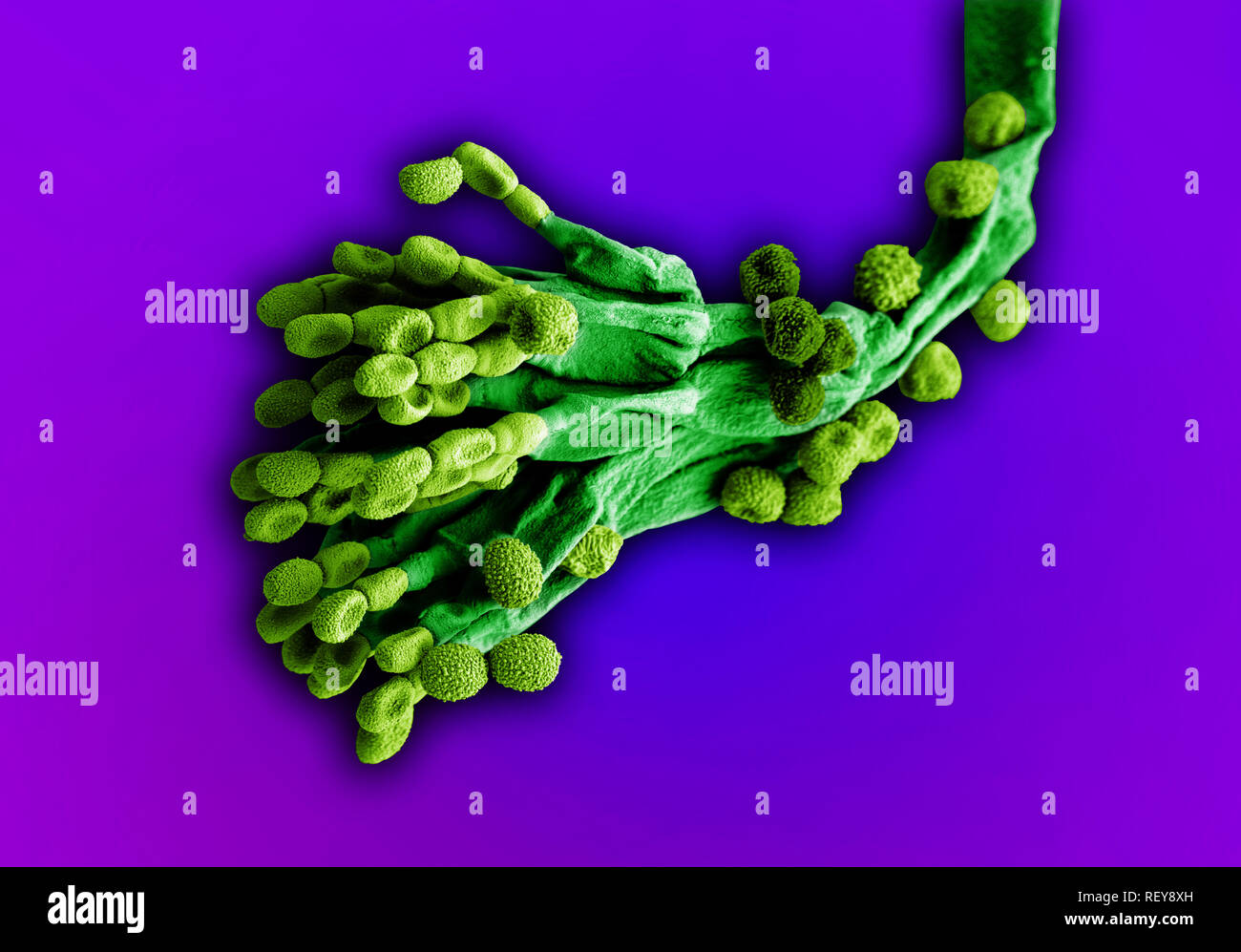 Penicillium fungus. Microscopic EM coloured image of penicillium chrysogenum fungus. Stock Photohttps://www.alamy.com/image-license-details/?v=1https://www.alamy.com/penicillium-fungus-microscopic-em-coloured-image-of-penicillium-chrysogenum-fungus-image232939689.html
Penicillium fungus. Microscopic EM coloured image of penicillium chrysogenum fungus. Stock Photohttps://www.alamy.com/image-license-details/?v=1https://www.alamy.com/penicillium-fungus-microscopic-em-coloured-image-of-penicillium-chrysogenum-fungus-image232939689.htmlRMREY8XH–Penicillium fungus. Microscopic EM coloured image of penicillium chrysogenum fungus.
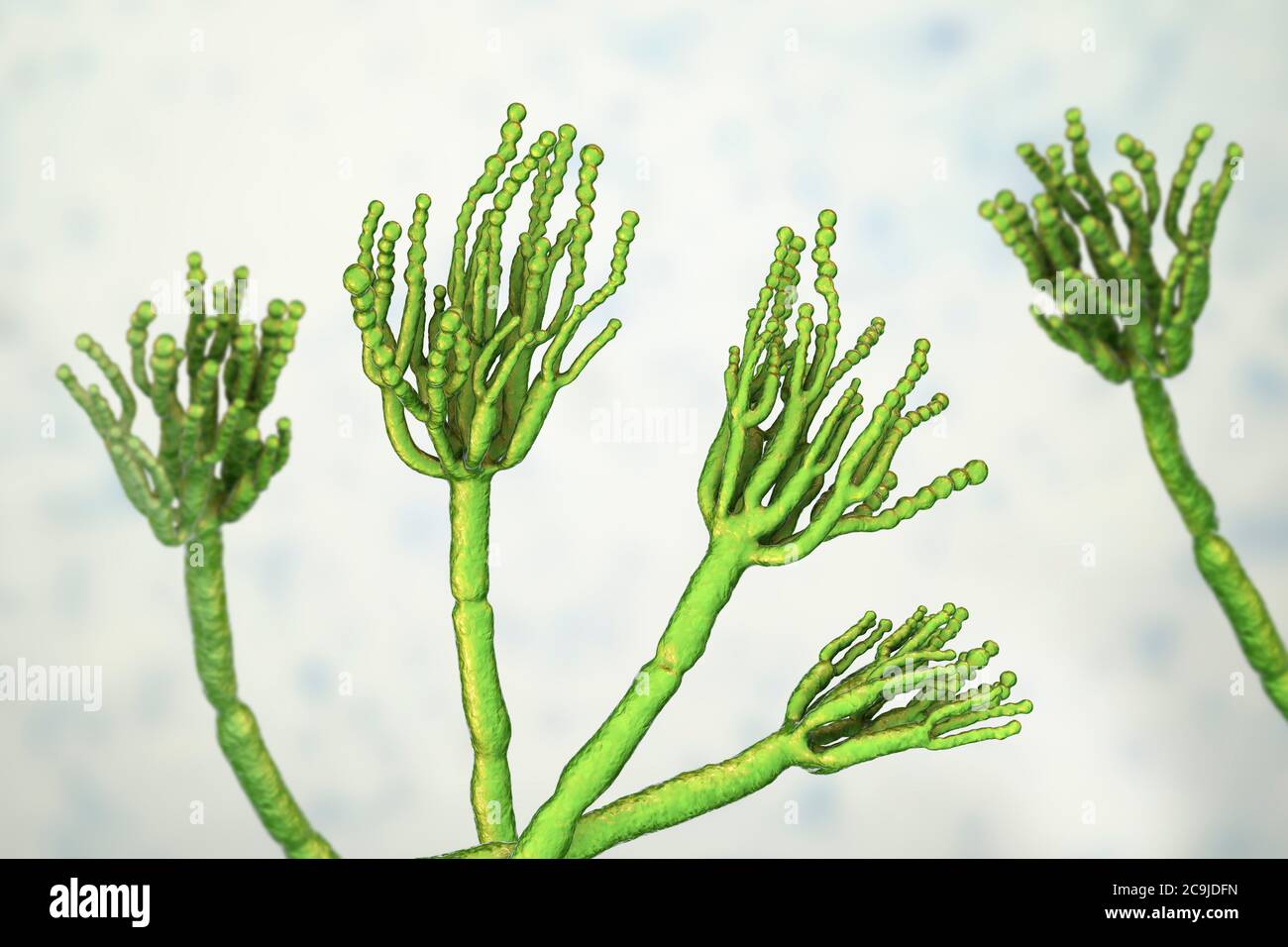 Penicillium fungus. Computer illustration of a Penicillium sp. fungus. Specialised threads, called conidiophores, are seen. Bunches of spores, called Stock Photohttps://www.alamy.com/image-license-details/?v=1https://www.alamy.com/penicillium-fungus-computer-illustration-of-a-penicillium-sp-fungus-specialised-threads-called-conidiophores-are-seen-bunches-of-spores-called-image367355401.html
Penicillium fungus. Computer illustration of a Penicillium sp. fungus. Specialised threads, called conidiophores, are seen. Bunches of spores, called Stock Photohttps://www.alamy.com/image-license-details/?v=1https://www.alamy.com/penicillium-fungus-computer-illustration-of-a-penicillium-sp-fungus-specialised-threads-called-conidiophores-are-seen-bunches-of-spores-called-image367355401.htmlRF2C9JDFN–Penicillium fungus. Computer illustration of a Penicillium sp. fungus. Specialised threads, called conidiophores, are seen. Bunches of spores, called
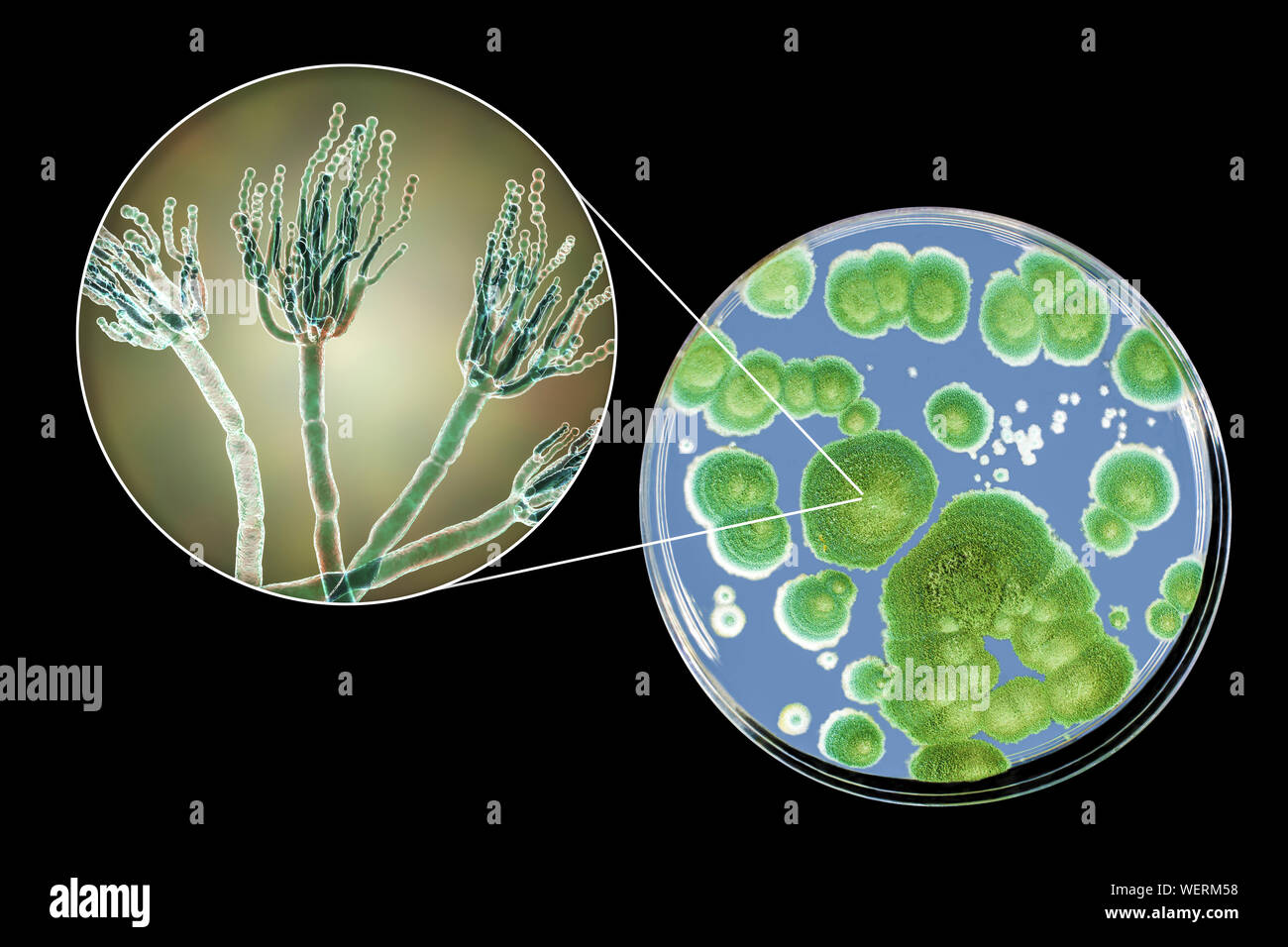 Penicillium fungus, composite image Stock Photohttps://www.alamy.com/image-license-details/?v=1https://www.alamy.com/penicillium-fungus-composite-image-image267281428.html
Penicillium fungus, composite image Stock Photohttps://www.alamy.com/image-license-details/?v=1https://www.alamy.com/penicillium-fungus-composite-image-image267281428.htmlRFWERM58–Penicillium fungus, composite image
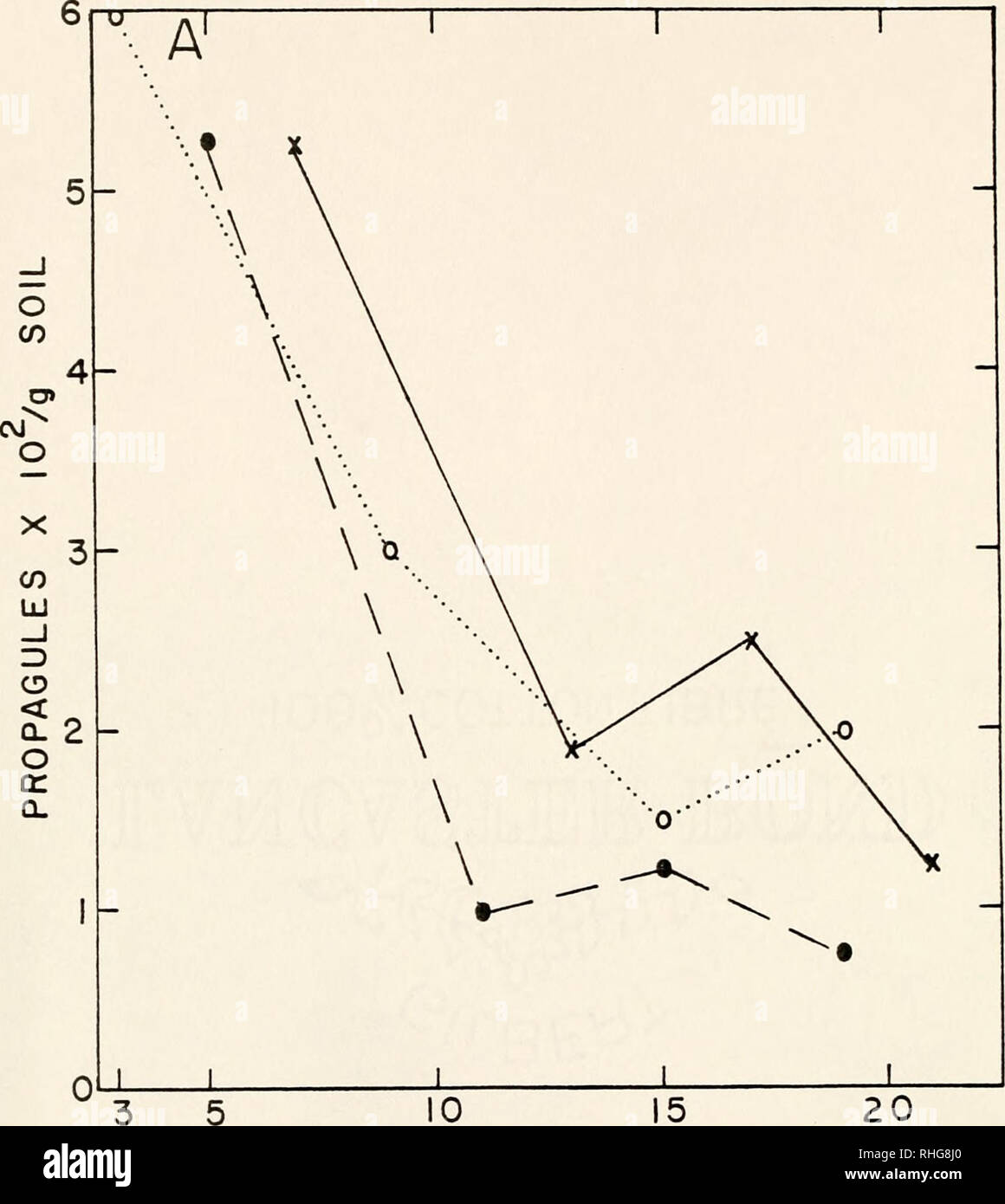 . Biological control of fusarium crown rot of tomato. Tomato wilts; Tomatoes. 44. WEEKS AFTER 15 PLANTING Figure 8 - A. Relationship of population density of Fusarium oxysporum f. sp. radicis-lycopersici to time after planting in soils amended with three isolates of Trichoderma harzianum, one isolate of Penicillium restrictum, and one isolate of Aspergillus ochraceus at 5 X 105 conidia per isolate per plant under field conditions at planting date one (0"""0), planting date two (X- X), and planting date three (#— —#). The pathogen was added initially at 5000 chlamydospores per pl Stock Photohttps://www.alamy.com/image-license-details/?v=1https://www.alamy.com/biological-control-of-fusarium-crown-rot-of-tomato-tomato-wilts-tomatoes-44-weeks-after-15-planting-figure-8-a-relationship-of-population-density-of-fusarium-oxysporum-f-sp-radicis-lycopersici-to-time-after-planting-in-soils-amended-with-three-isolates-of-trichoderma-harzianum-one-isolate-of-penicillium-restrictum-and-one-isolate-of-aspergillus-ochraceus-at-5-x-105-conidia-per-isolate-per-plant-under-field-conditions-at-planting-date-one-0quotquotquot0-planting-date-two-x-x-and-planting-date-three-the-pathogen-was-added-initially-at-5000-chlamydospores-per-pl-image234541944.html
. Biological control of fusarium crown rot of tomato. Tomato wilts; Tomatoes. 44. WEEKS AFTER 15 PLANTING Figure 8 - A. Relationship of population density of Fusarium oxysporum f. sp. radicis-lycopersici to time after planting in soils amended with three isolates of Trichoderma harzianum, one isolate of Penicillium restrictum, and one isolate of Aspergillus ochraceus at 5 X 105 conidia per isolate per plant under field conditions at planting date one (0"""0), planting date two (X- X), and planting date three (#— —#). The pathogen was added initially at 5000 chlamydospores per pl Stock Photohttps://www.alamy.com/image-license-details/?v=1https://www.alamy.com/biological-control-of-fusarium-crown-rot-of-tomato-tomato-wilts-tomatoes-44-weeks-after-15-planting-figure-8-a-relationship-of-population-density-of-fusarium-oxysporum-f-sp-radicis-lycopersici-to-time-after-planting-in-soils-amended-with-three-isolates-of-trichoderma-harzianum-one-isolate-of-penicillium-restrictum-and-one-isolate-of-aspergillus-ochraceus-at-5-x-105-conidia-per-isolate-per-plant-under-field-conditions-at-planting-date-one-0quotquotquot0-planting-date-two-x-x-and-planting-date-three-the-pathogen-was-added-initially-at-5000-chlamydospores-per-pl-image234541944.htmlRMRHG8J0–. Biological control of fusarium crown rot of tomato. Tomato wilts; Tomatoes. 44. WEEKS AFTER 15 PLANTING Figure 8 - A. Relationship of population density of Fusarium oxysporum f. sp. radicis-lycopersici to time after planting in soils amended with three isolates of Trichoderma harzianum, one isolate of Penicillium restrictum, and one isolate of Aspergillus ochraceus at 5 X 105 conidia per isolate per plant under field conditions at planting date one (0"""0), planting date two (X- X), and planting date three (#— —#). The pathogen was added initially at 5000 chlamydospores per pl
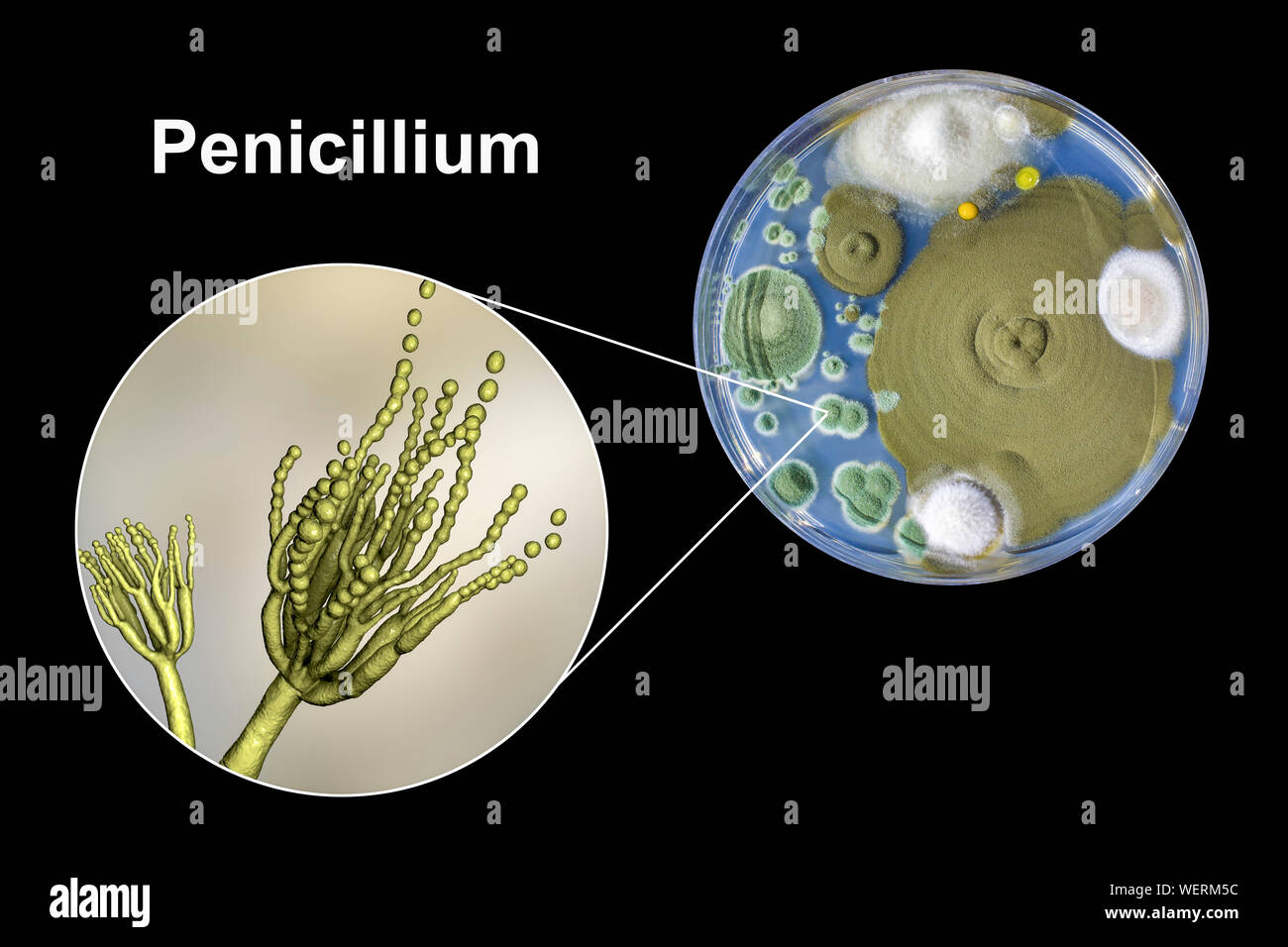 Penicillium fungus, composite image Stock Photohttps://www.alamy.com/image-license-details/?v=1https://www.alamy.com/penicillium-fungus-composite-image-image267281432.html
Penicillium fungus, composite image Stock Photohttps://www.alamy.com/image-license-details/?v=1https://www.alamy.com/penicillium-fungus-composite-image-image267281432.htmlRFWERM5C–Penicillium fungus, composite image
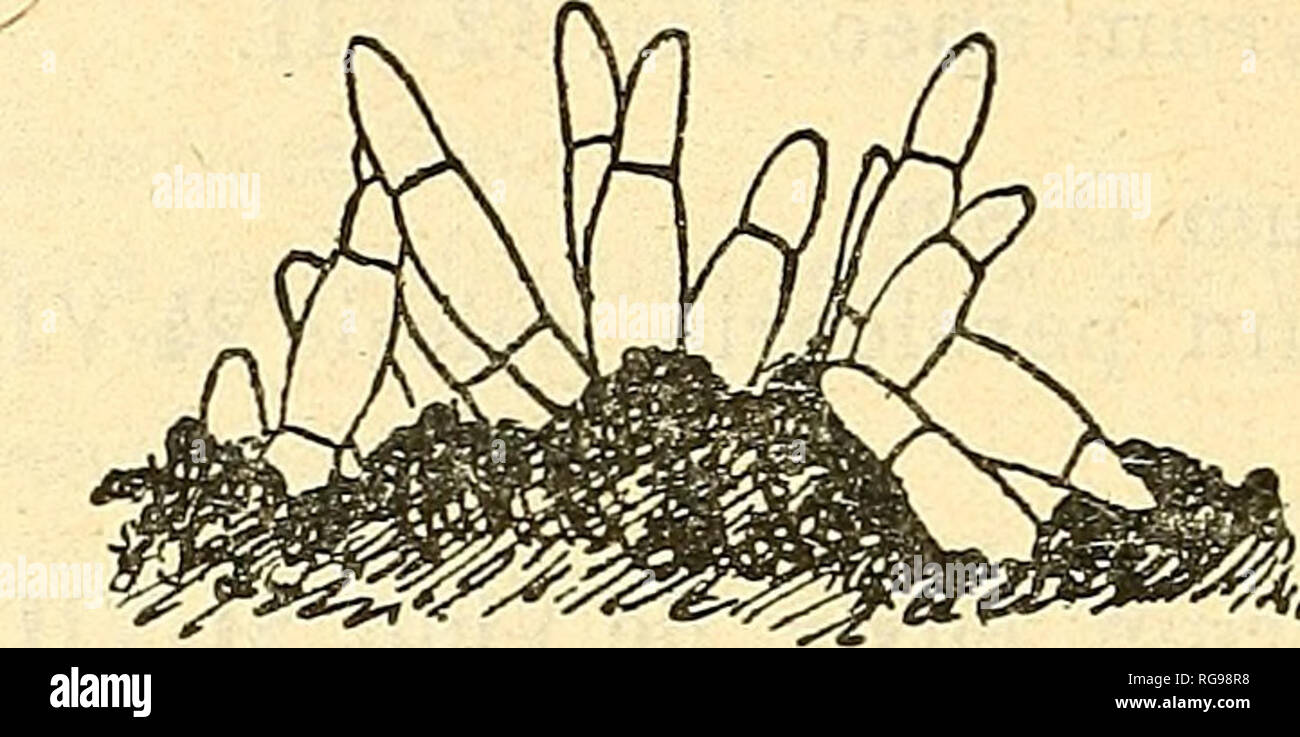 . Bulletin trimestriel de la Société mycologique de France. Mycology; Fungi; Fungi. L. GARBOWSKI. 108. Pénicillium candidum Link, Isopyrum thalictroides, Luka. 30-V.. CL a) un FiG. 3. — Fusariella populi sp. n. groupe de conidies ; b) conidies ( j. 109* Cladosporium herharum Link. J'ai observé cette espèce très rt^pandue sur les plantes suivantes : Triticum çulgare, Secale céréale, Hordeum vulgare, Avena satwa, Agro- pyrum repens, Gljyceria plicata, Maianthemum bifolium, Isopyrum thalictroides, Mjyosurus minimus, Mercurialis perennis, Vicia faba.. Please note that these images are extracted fr Stock Photohttps://www.alamy.com/image-license-details/?v=1https://www.alamy.com/bulletin-trimestriel-de-la-socit-mycologique-de-france-mycology-fungi-fungi-l-garbowski-108-pnicillium-candidum-link-isopyrum-thalictroides-luka-30-v-cl-a-un-fig-3-fusariella-populi-sp-n-groupe-de-conidies-b-conidies-j-109-cladosporium-herharum-link-jai-observ-cette-espce-trs-rtpandue-sur-les-plantes-suivantes-triticum-ulgare-secale-crale-hordeum-vulgare-avena-satwa-agro-pyrum-repens-gljyceria-plicata-maianthemum-bifolium-isopyrum-thalictroides-mjyosurus-minimus-mercurialis-perennis-vicia-faba-please-note-that-these-images-are-extracted-fr-image233773772.html
. Bulletin trimestriel de la Société mycologique de France. Mycology; Fungi; Fungi. L. GARBOWSKI. 108. Pénicillium candidum Link, Isopyrum thalictroides, Luka. 30-V.. CL a) un FiG. 3. — Fusariella populi sp. n. groupe de conidies ; b) conidies ( j. 109* Cladosporium herharum Link. J'ai observé cette espèce très rt^pandue sur les plantes suivantes : Triticum çulgare, Secale céréale, Hordeum vulgare, Avena satwa, Agro- pyrum repens, Gljyceria plicata, Maianthemum bifolium, Isopyrum thalictroides, Mjyosurus minimus, Mercurialis perennis, Vicia faba.. Please note that these images are extracted fr Stock Photohttps://www.alamy.com/image-license-details/?v=1https://www.alamy.com/bulletin-trimestriel-de-la-socit-mycologique-de-france-mycology-fungi-fungi-l-garbowski-108-pnicillium-candidum-link-isopyrum-thalictroides-luka-30-v-cl-a-un-fig-3-fusariella-populi-sp-n-groupe-de-conidies-b-conidies-j-109-cladosporium-herharum-link-jai-observ-cette-espce-trs-rtpandue-sur-les-plantes-suivantes-triticum-ulgare-secale-crale-hordeum-vulgare-avena-satwa-agro-pyrum-repens-gljyceria-plicata-maianthemum-bifolium-isopyrum-thalictroides-mjyosurus-minimus-mercurialis-perennis-vicia-faba-please-note-that-these-images-are-extracted-fr-image233773772.htmlRMRG98R8–. Bulletin trimestriel de la Société mycologique de France. Mycology; Fungi; Fungi. L. GARBOWSKI. 108. Pénicillium candidum Link, Isopyrum thalictroides, Luka. 30-V.. CL a) un FiG. 3. — Fusariella populi sp. n. groupe de conidies ; b) conidies ( j. 109* Cladosporium herharum Link. J'ai observé cette espèce très rt^pandue sur les plantes suivantes : Triticum çulgare, Secale céréale, Hordeum vulgare, Avena satwa, Agro- pyrum repens, Gljyceria plicata, Maianthemum bifolium, Isopyrum thalictroides, Mjyosurus minimus, Mercurialis perennis, Vicia faba.. Please note that these images are extracted fr
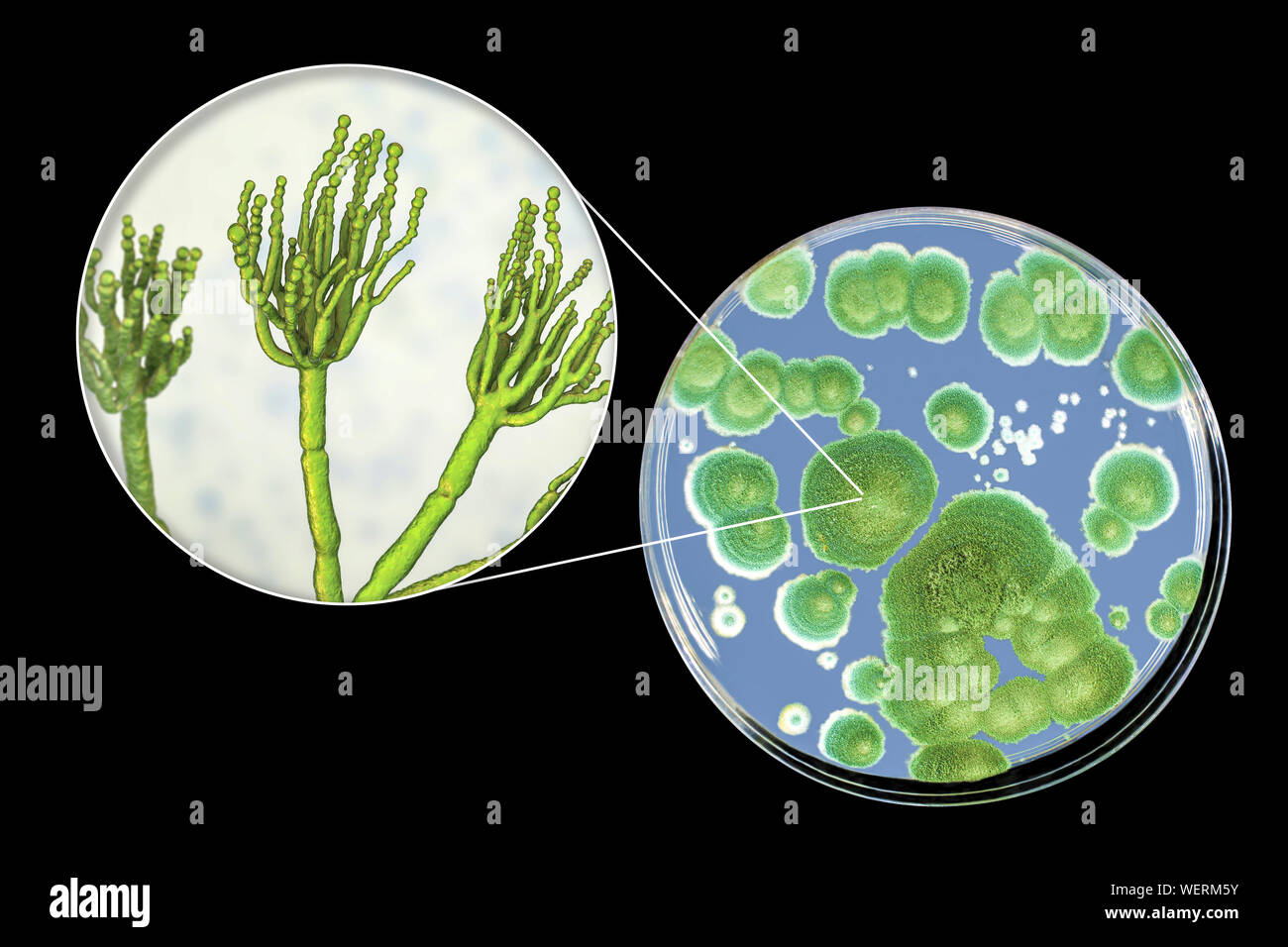 Penicillium fungus, composite image Stock Photohttps://www.alamy.com/image-license-details/?v=1https://www.alamy.com/penicillium-fungus-composite-image-image267281447.html
Penicillium fungus, composite image Stock Photohttps://www.alamy.com/image-license-details/?v=1https://www.alamy.com/penicillium-fungus-composite-image-image267281447.htmlRFWERM5Y–Penicillium fungus, composite image
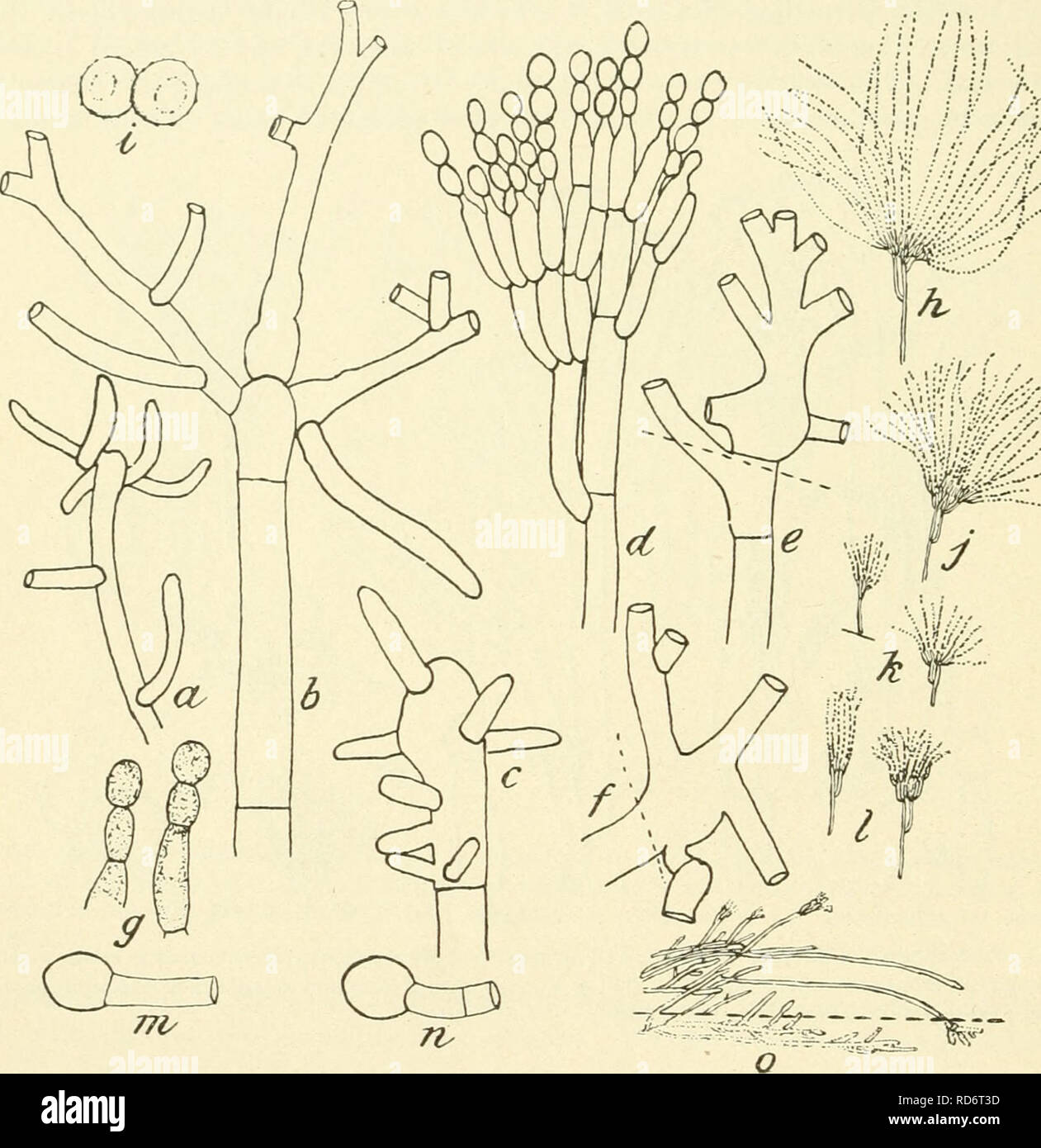 . Cultural studies of species of Penicillium. Penicillium -- Cultures and culture media; Fungi -- Cultures and culture media. 68 CULTURAL STUDIES OF SPECIES OF PENICILLIUM. per cent, good growth, strongly alkaline. Glycerin 3 per cent, weak growth. Potato starch, characteristic colony. Milk, curdling (0.25 per cent calcium chlorid added) in 8 days; digestion medium rapid; color in milk, none or ? At 37° C, no growth, grew when cooled; check at 20° C, good typical. PENICILLIUM STOLONIFERUM n. sp. Latin diagnosis.—Coloniis in gelatina vel agaro Solani tuberosi cultis, viridibus vel flavo-viridib Stock Photohttps://www.alamy.com/image-license-details/?v=1https://www.alamy.com/cultural-studies-of-species-of-penicillium-penicillium-cultures-and-culture-media-fungi-cultures-and-culture-media-68-cultural-studies-of-species-of-penicillium-per-cent-good-growth-strongly-alkaline-glycerin-3-per-cent-weak-growth-potato-starch-characteristic-colony-milk-curdling-025-per-cent-calcium-chlorid-added-in-8-days-digestion-medium-rapid-color-in-milk-none-or-at-37-c-no-growth-grew-when-cooled-check-at-20-c-good-typical-penicillium-stoloniferum-n-sp-latin-diagnosiscoloniis-in-gelatina-vel-agaro-solani-tuberosi-cultis-viridibus-vel-flavo-viridib-image231875937.html
. Cultural studies of species of Penicillium. Penicillium -- Cultures and culture media; Fungi -- Cultures and culture media. 68 CULTURAL STUDIES OF SPECIES OF PENICILLIUM. per cent, good growth, strongly alkaline. Glycerin 3 per cent, weak growth. Potato starch, characteristic colony. Milk, curdling (0.25 per cent calcium chlorid added) in 8 days; digestion medium rapid; color in milk, none or ? At 37° C, no growth, grew when cooled; check at 20° C, good typical. PENICILLIUM STOLONIFERUM n. sp. Latin diagnosis.—Coloniis in gelatina vel agaro Solani tuberosi cultis, viridibus vel flavo-viridib Stock Photohttps://www.alamy.com/image-license-details/?v=1https://www.alamy.com/cultural-studies-of-species-of-penicillium-penicillium-cultures-and-culture-media-fungi-cultures-and-culture-media-68-cultural-studies-of-species-of-penicillium-per-cent-good-growth-strongly-alkaline-glycerin-3-per-cent-weak-growth-potato-starch-characteristic-colony-milk-curdling-025-per-cent-calcium-chlorid-added-in-8-days-digestion-medium-rapid-color-in-milk-none-or-at-37-c-no-growth-grew-when-cooled-check-at-20-c-good-typical-penicillium-stoloniferum-n-sp-latin-diagnosiscoloniis-in-gelatina-vel-agaro-solani-tuberosi-cultis-viridibus-vel-flavo-viridib-image231875937.htmlRMRD6T3D–. Cultural studies of species of Penicillium. Penicillium -- Cultures and culture media; Fungi -- Cultures and culture media. 68 CULTURAL STUDIES OF SPECIES OF PENICILLIUM. per cent, good growth, strongly alkaline. Glycerin 3 per cent, weak growth. Potato starch, characteristic colony. Milk, curdling (0.25 per cent calcium chlorid added) in 8 days; digestion medium rapid; color in milk, none or ? At 37° C, no growth, grew when cooled; check at 20° C, good typical. PENICILLIUM STOLONIFERUM n. sp. Latin diagnosis.—Coloniis in gelatina vel agaro Solani tuberosi cultis, viridibus vel flavo-viridib
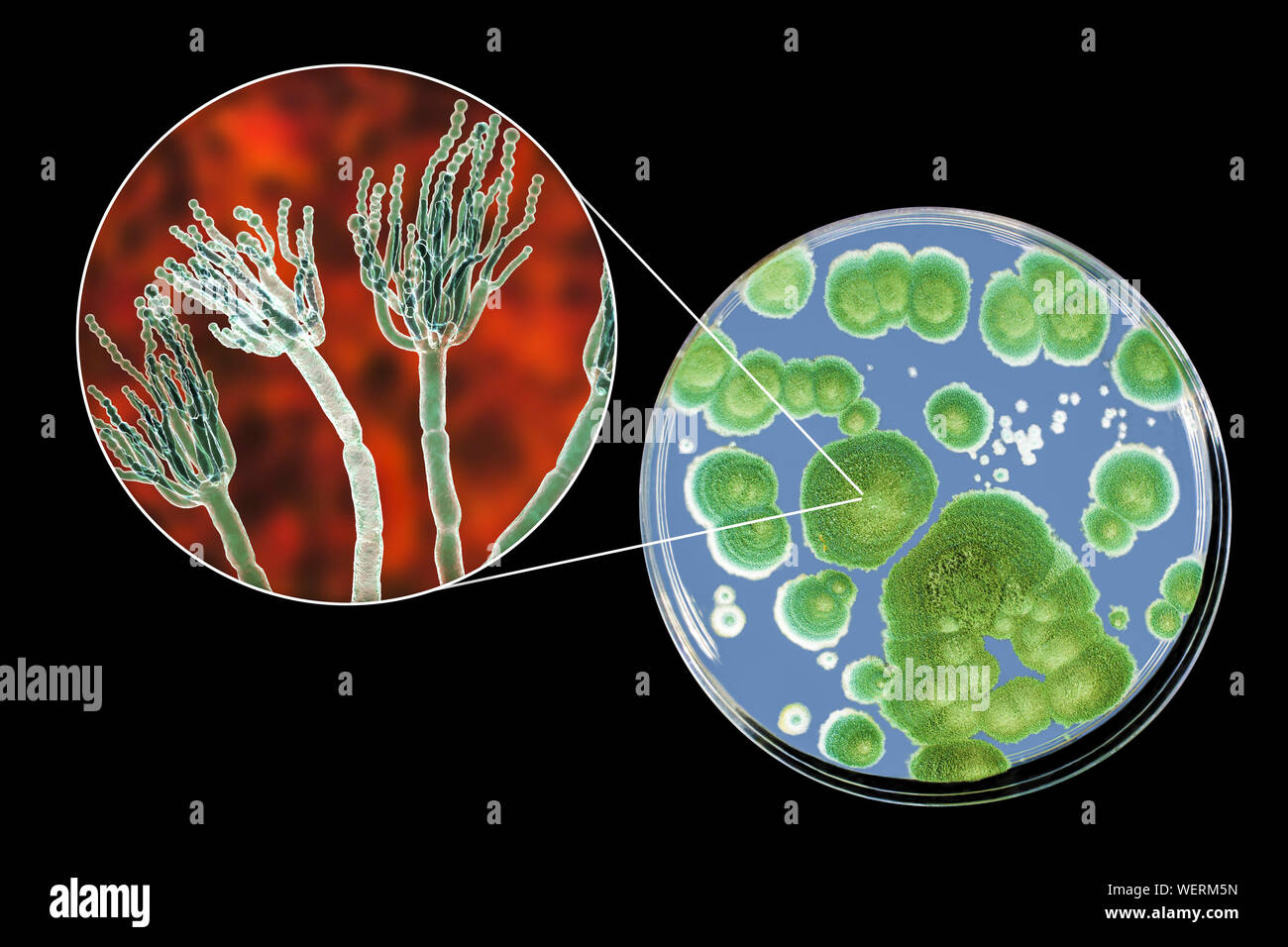 Penicillium fungus, composite image Stock Photohttps://www.alamy.com/image-license-details/?v=1https://www.alamy.com/penicillium-fungus-composite-image-image267281441.html
Penicillium fungus, composite image Stock Photohttps://www.alamy.com/image-license-details/?v=1https://www.alamy.com/penicillium-fungus-composite-image-image267281441.htmlRFWERM5N–Penicillium fungus, composite image
 Penicillium fungus, composite image Stock Photohttps://www.alamy.com/image-license-details/?v=1https://www.alamy.com/penicillium-fungus-composite-image-image267281446.html
Penicillium fungus, composite image Stock Photohttps://www.alamy.com/image-license-details/?v=1https://www.alamy.com/penicillium-fungus-composite-image-image267281446.htmlRFWERM5X–Penicillium fungus, composite image
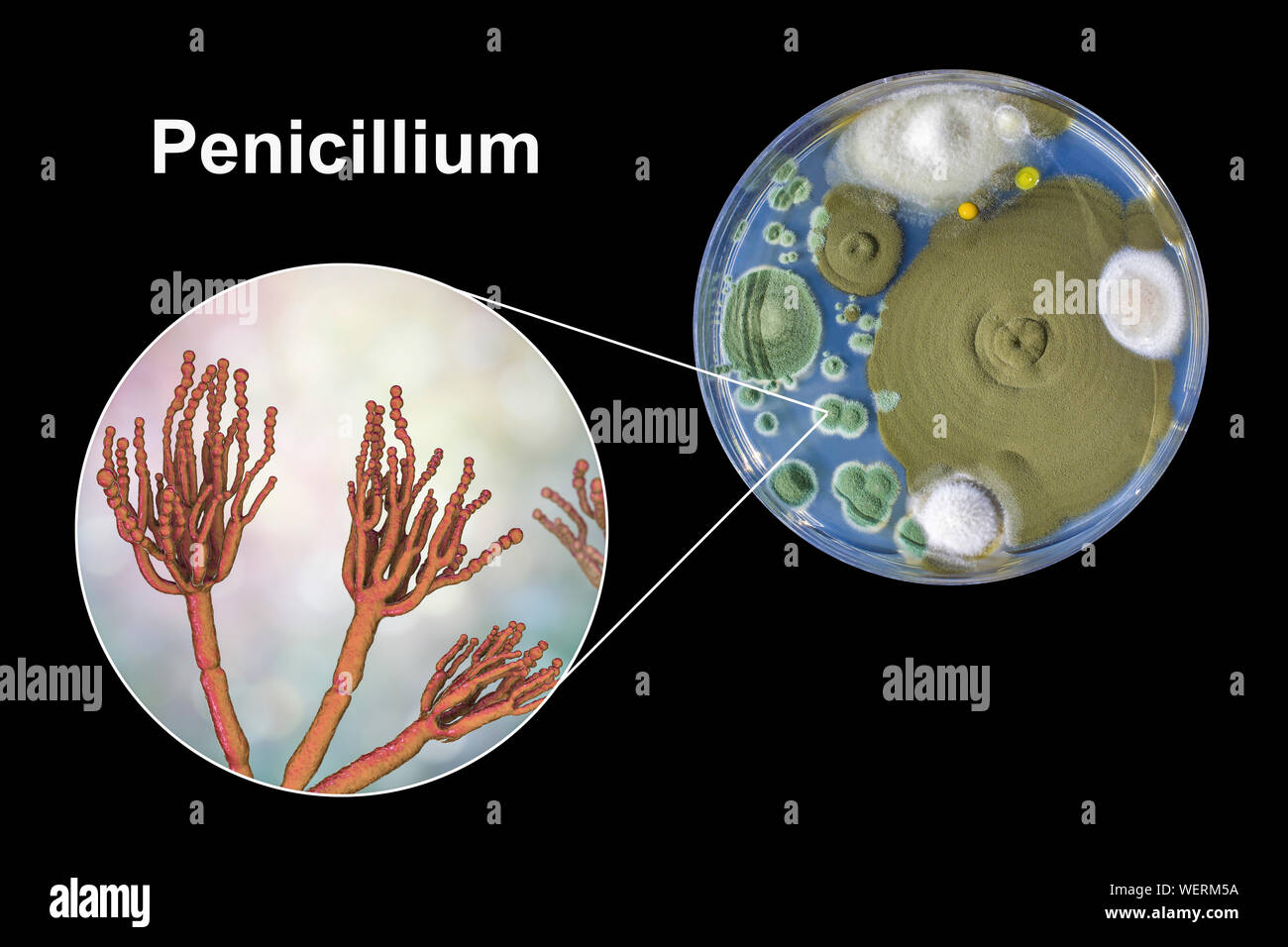 Penicillium fungus, composite image Stock Photohttps://www.alamy.com/image-license-details/?v=1https://www.alamy.com/penicillium-fungus-composite-image-image267281430.html
Penicillium fungus, composite image Stock Photohttps://www.alamy.com/image-license-details/?v=1https://www.alamy.com/penicillium-fungus-composite-image-image267281430.htmlRFWERM5A–Penicillium fungus, composite image
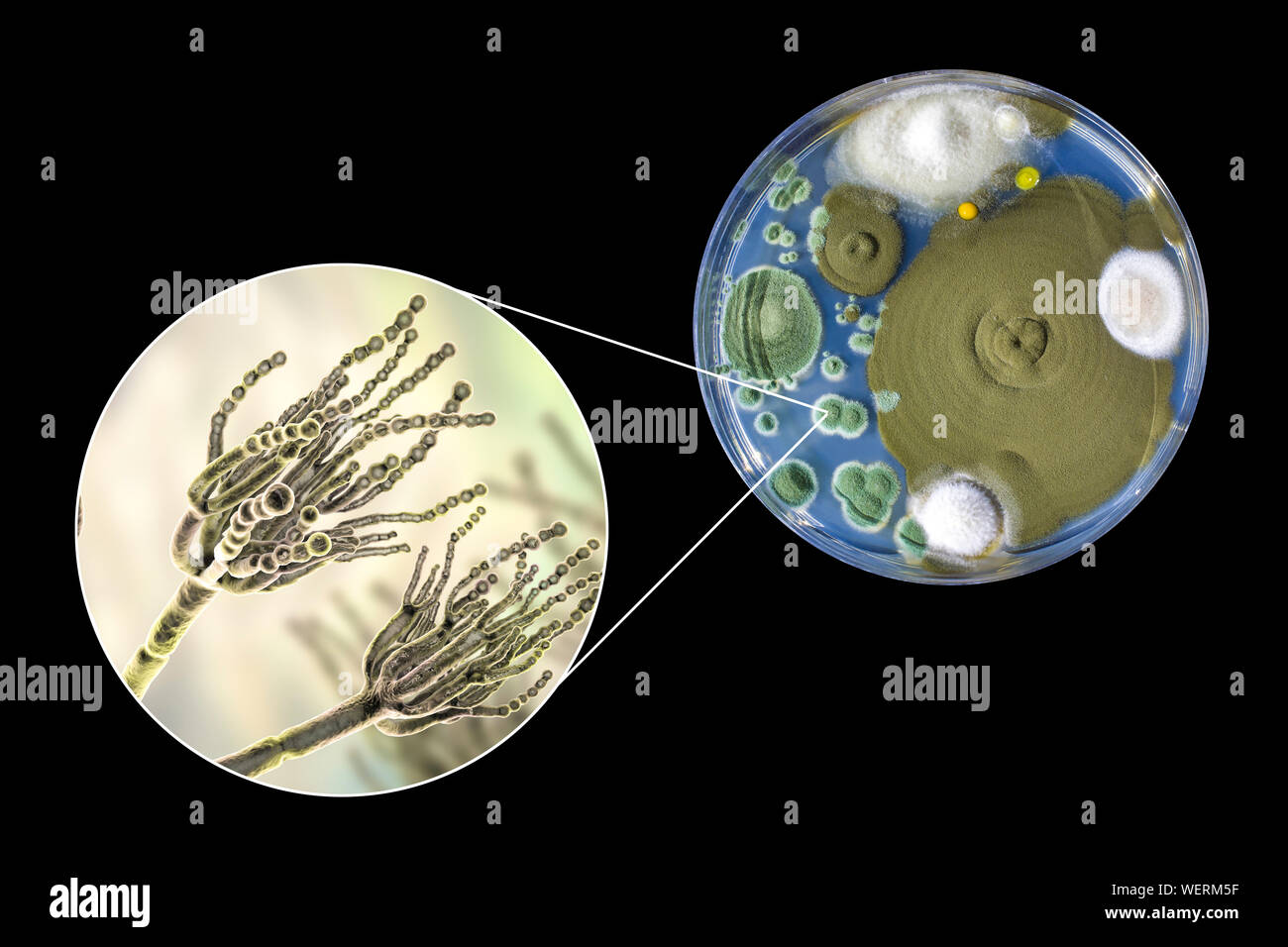 Penicillium fungus, composite image Stock Photohttps://www.alamy.com/image-license-details/?v=1https://www.alamy.com/penicillium-fungus-composite-image-image267281435.html
Penicillium fungus, composite image Stock Photohttps://www.alamy.com/image-license-details/?v=1https://www.alamy.com/penicillium-fungus-composite-image-image267281435.htmlRFWERM5F–Penicillium fungus, composite image
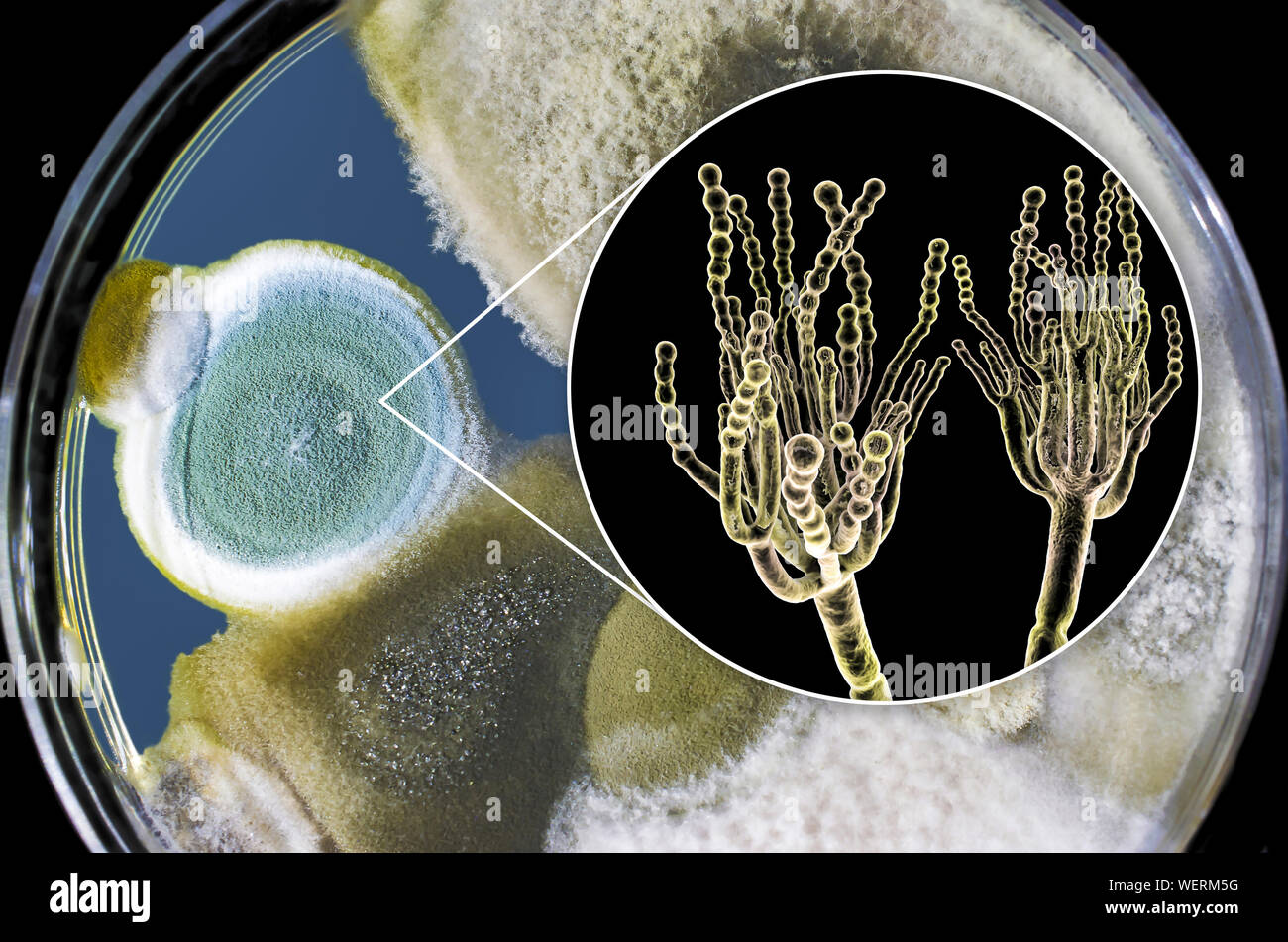 Penicillium fungus, composite image Stock Photohttps://www.alamy.com/image-license-details/?v=1https://www.alamy.com/penicillium-fungus-composite-image-image267281436.html
Penicillium fungus, composite image Stock Photohttps://www.alamy.com/image-license-details/?v=1https://www.alamy.com/penicillium-fungus-composite-image-image267281436.htmlRFWERM5G–Penicillium fungus, composite image
 Penicillium fungus, composite image Stock Photohttps://www.alamy.com/image-license-details/?v=1https://www.alamy.com/penicillium-fungus-composite-image-image267281453.html
Penicillium fungus, composite image Stock Photohttps://www.alamy.com/image-license-details/?v=1https://www.alamy.com/penicillium-fungus-composite-image-image267281453.htmlRFWERM65–Penicillium fungus, composite image
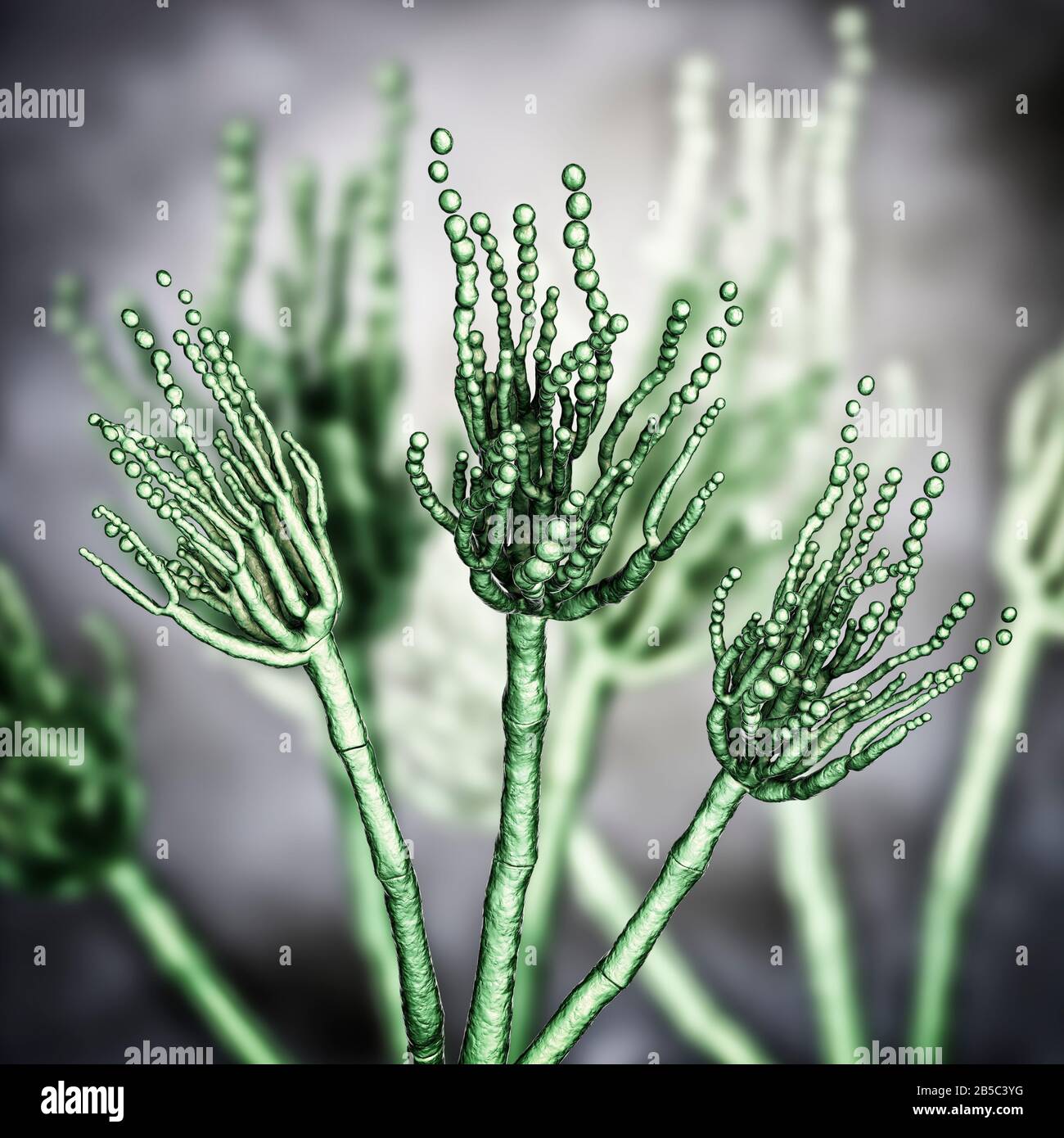 Penicillium fungus, illustration Stock Photohttps://www.alamy.com/image-license-details/?v=1https://www.alamy.com/penicillium-fungus-illustration-image347547188.html
Penicillium fungus, illustration Stock Photohttps://www.alamy.com/image-license-details/?v=1https://www.alamy.com/penicillium-fungus-illustration-image347547188.htmlRF2B5C3YG–Penicillium fungus, illustration
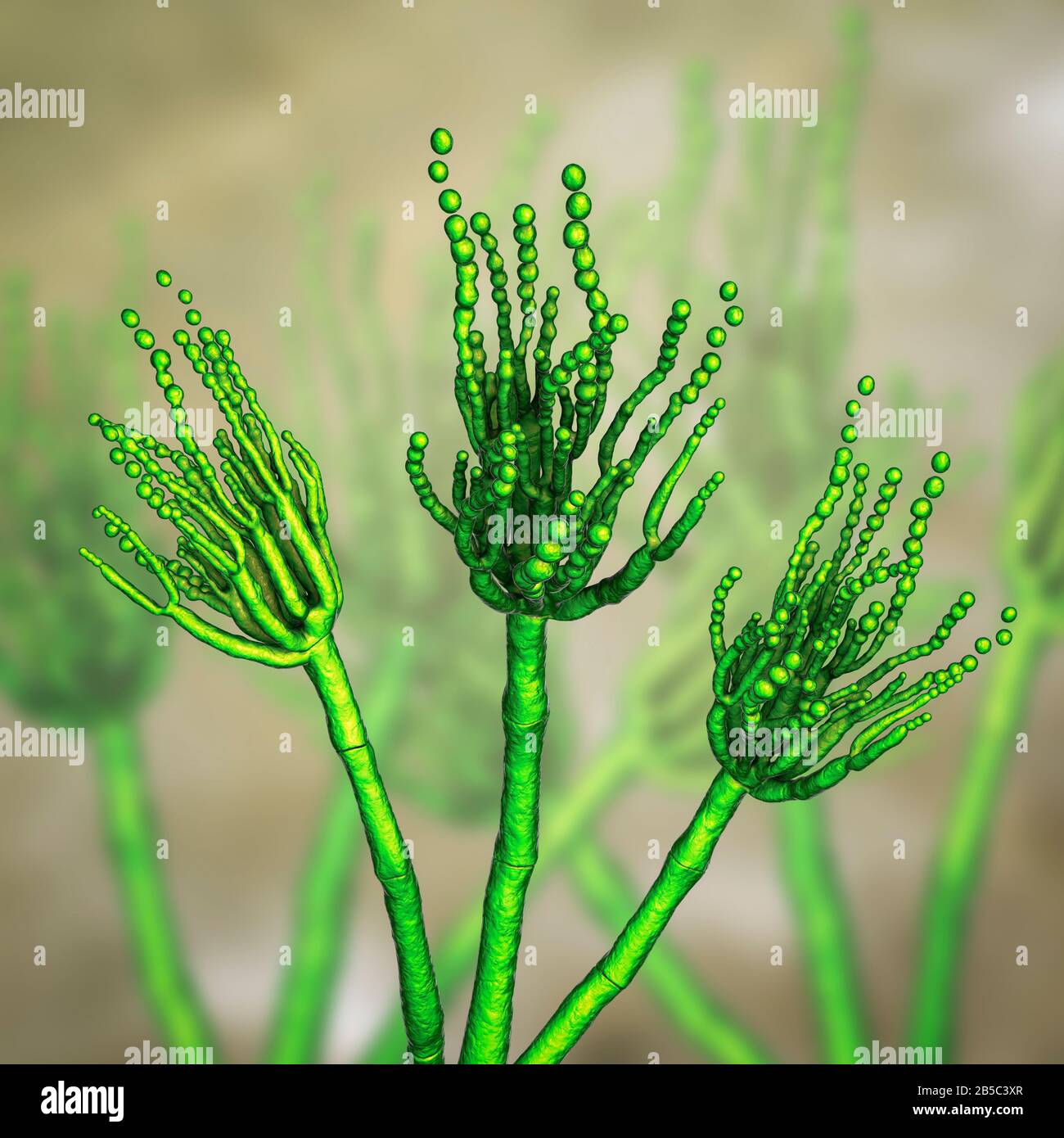 Penicillium fungus, illustration Stock Photohttps://www.alamy.com/image-license-details/?v=1https://www.alamy.com/penicillium-fungus-illustration-image347547167.html
Penicillium fungus, illustration Stock Photohttps://www.alamy.com/image-license-details/?v=1https://www.alamy.com/penicillium-fungus-illustration-image347547167.htmlRF2B5C3XR–Penicillium fungus, illustration
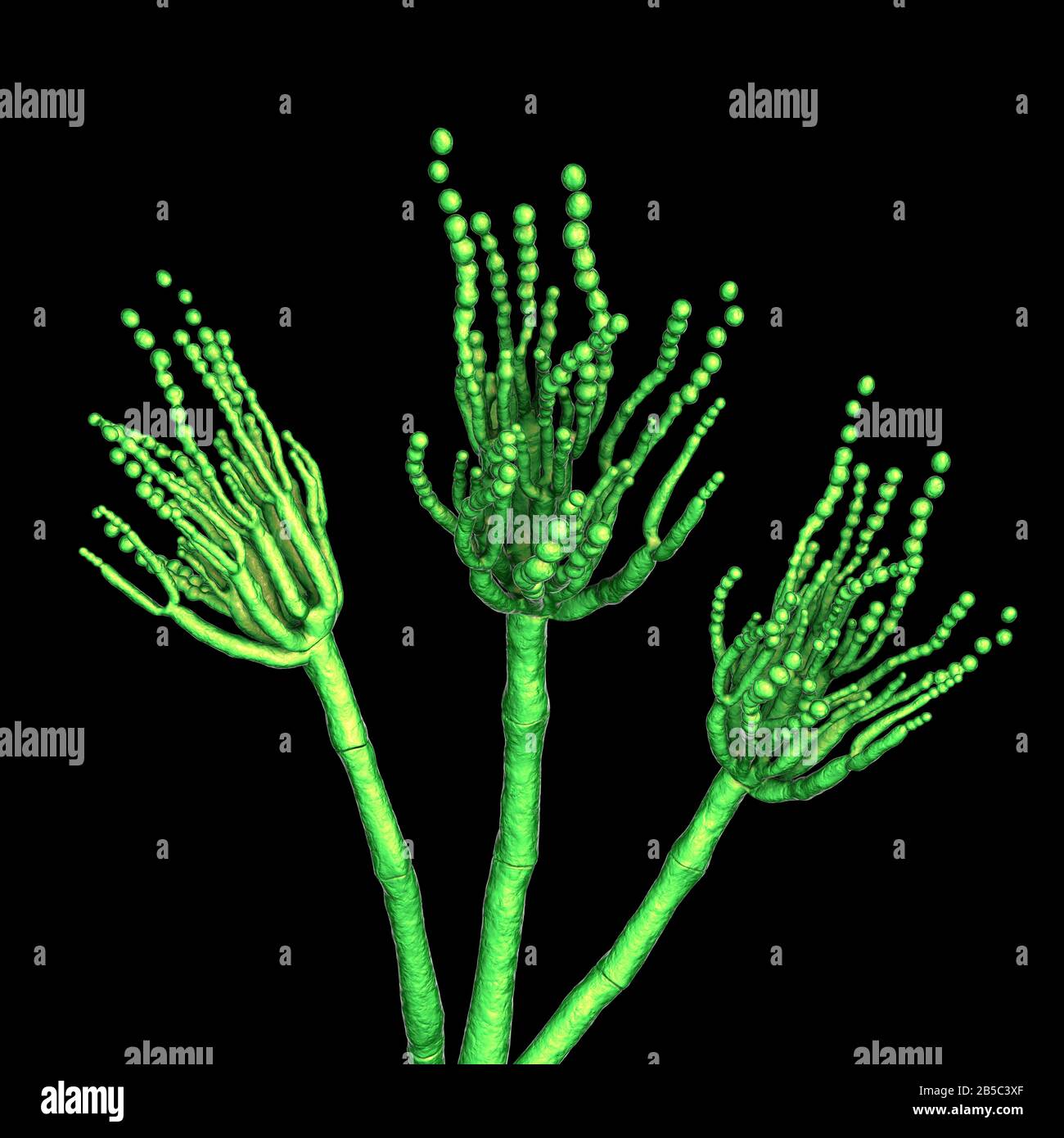 Penicillium fungus, illustration Stock Photohttps://www.alamy.com/image-license-details/?v=1https://www.alamy.com/penicillium-fungus-illustration-image347547159.html
Penicillium fungus, illustration Stock Photohttps://www.alamy.com/image-license-details/?v=1https://www.alamy.com/penicillium-fungus-illustration-image347547159.htmlRF2B5C3XF–Penicillium fungus, illustration
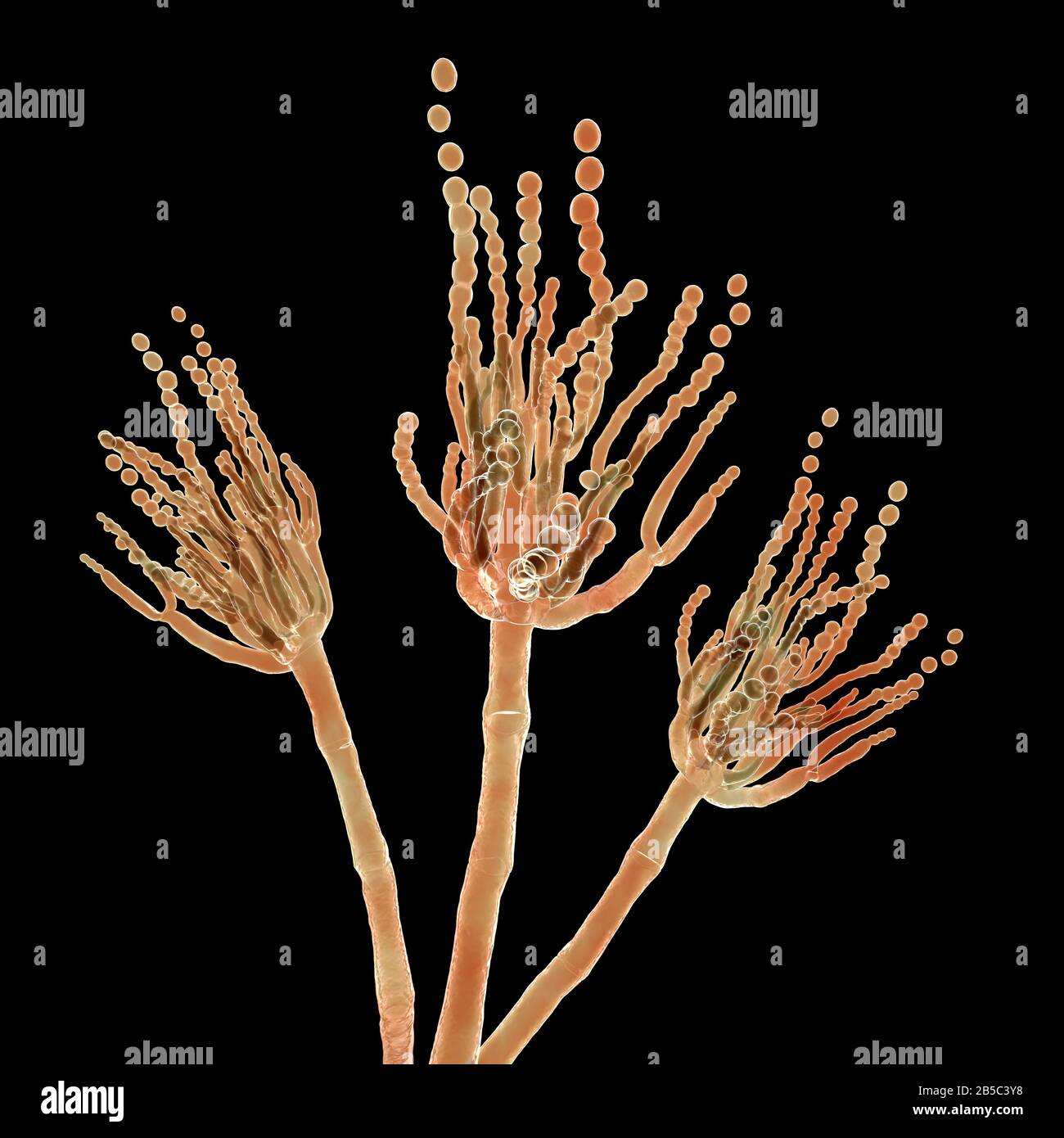 Penicillium fungus, illustration Stock Photohttps://www.alamy.com/image-license-details/?v=1https://www.alamy.com/penicillium-fungus-illustration-image347547180.html
Penicillium fungus, illustration Stock Photohttps://www.alamy.com/image-license-details/?v=1https://www.alamy.com/penicillium-fungus-illustration-image347547180.htmlRF2B5C3Y8–Penicillium fungus, illustration
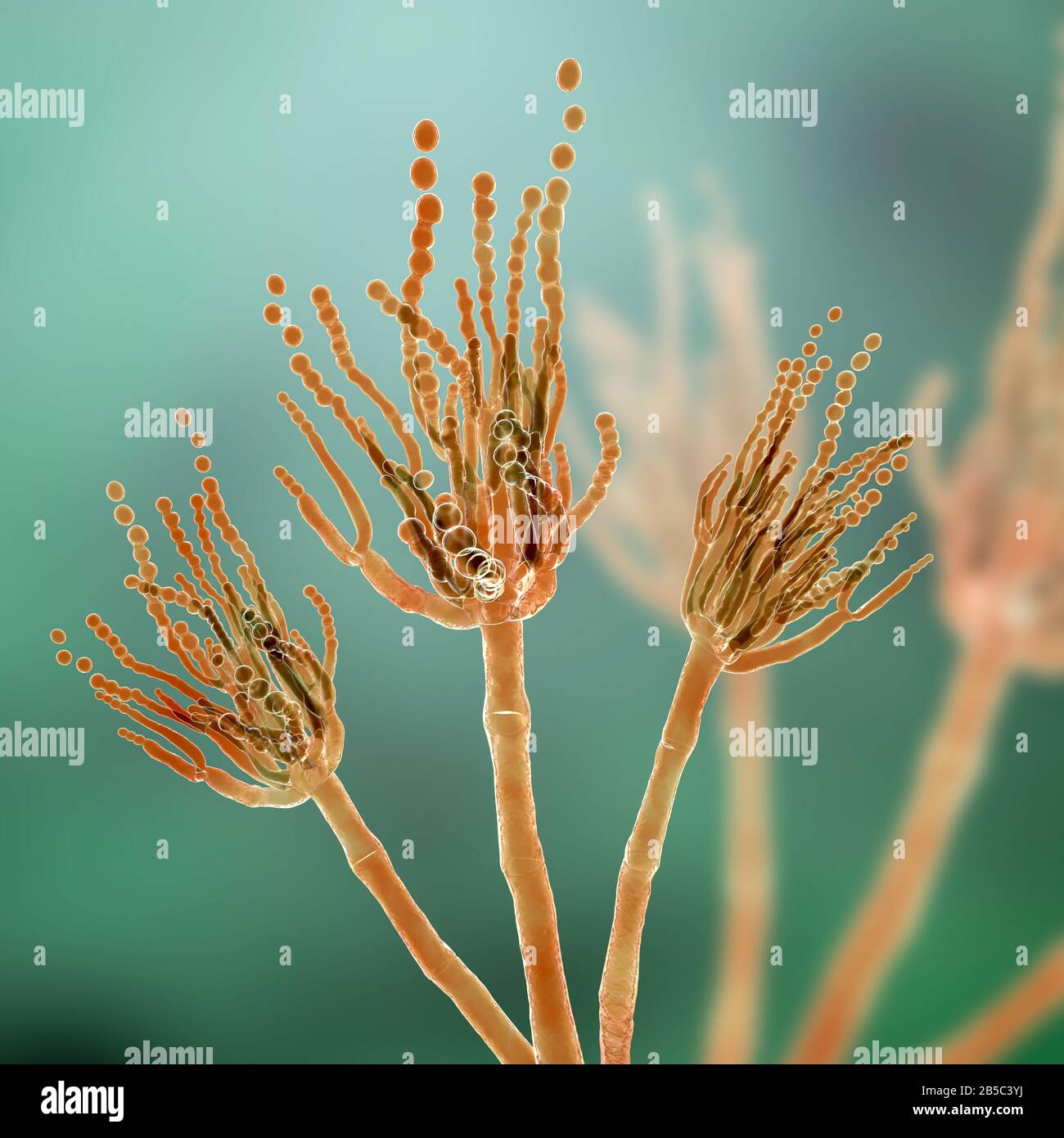 Penicillium fungus, illustration Stock Photohttps://www.alamy.com/image-license-details/?v=1https://www.alamy.com/penicillium-fungus-illustration-image347547190.html
Penicillium fungus, illustration Stock Photohttps://www.alamy.com/image-license-details/?v=1https://www.alamy.com/penicillium-fungus-illustration-image347547190.htmlRF2B5C3YJ–Penicillium fungus, illustration
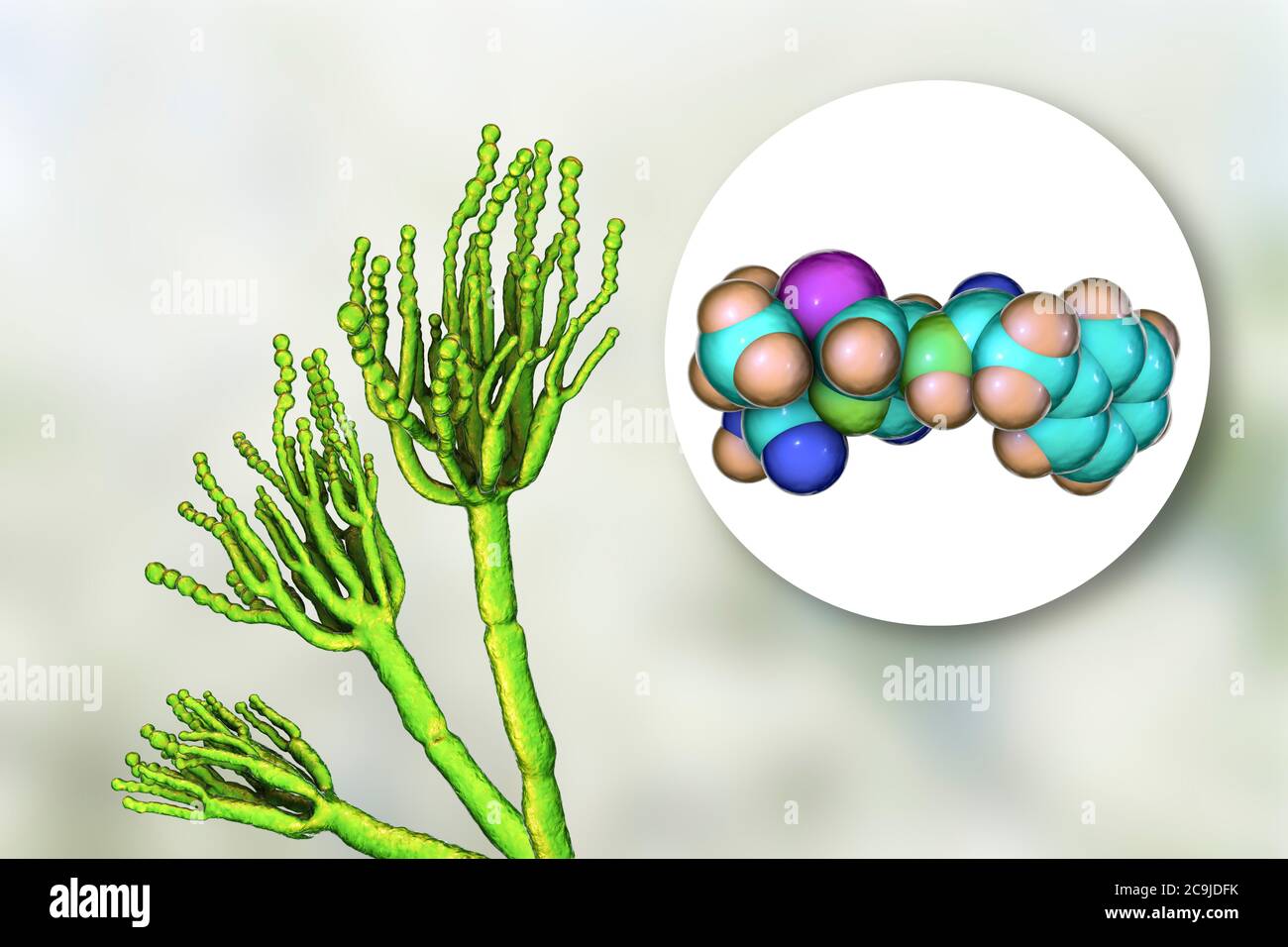 Penicillium fungus and molecule of penicillin antibiotic. Computer illustration of a Penicillium sp. fungus. Specialised threads, called conidiophores Stock Photohttps://www.alamy.com/image-license-details/?v=1https://www.alamy.com/penicillium-fungus-and-molecule-of-penicillin-antibiotic-computer-illustration-of-a-penicillium-sp-fungus-specialised-threads-called-conidiophores-image367355399.html
Penicillium fungus and molecule of penicillin antibiotic. Computer illustration of a Penicillium sp. fungus. Specialised threads, called conidiophores Stock Photohttps://www.alamy.com/image-license-details/?v=1https://www.alamy.com/penicillium-fungus-and-molecule-of-penicillin-antibiotic-computer-illustration-of-a-penicillium-sp-fungus-specialised-threads-called-conidiophores-image367355399.htmlRF2C9JDFK–Penicillium fungus and molecule of penicillin antibiotic. Computer illustration of a Penicillium sp. fungus. Specialised threads, called conidiophores
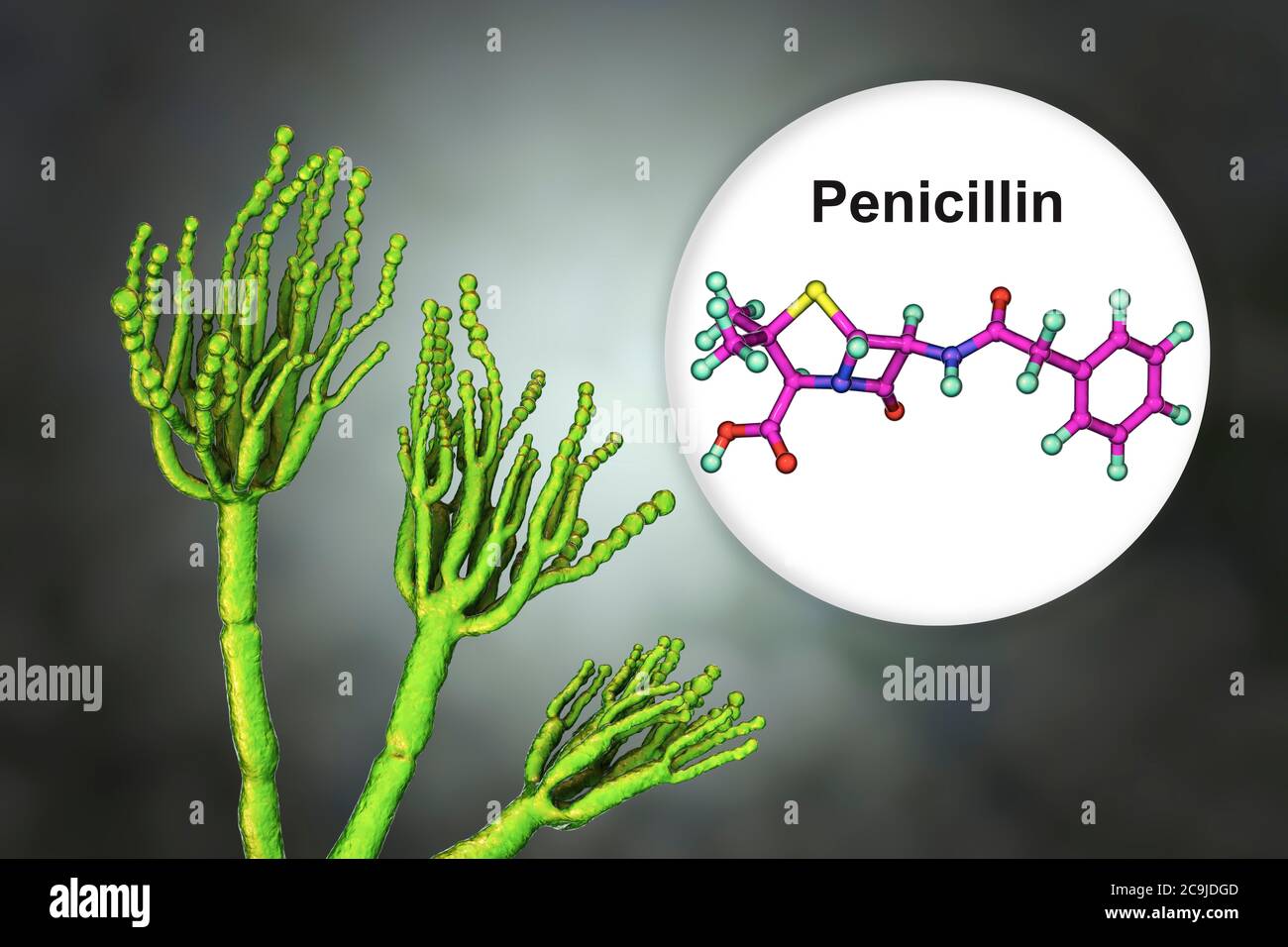 Penicillium fungus and molecule of penicillin antibiotic. Computer illustration of a Penicillium sp. fungus. Specialised threads, called conidiophores Stock Photohttps://www.alamy.com/image-license-details/?v=1https://www.alamy.com/penicillium-fungus-and-molecule-of-penicillin-antibiotic-computer-illustration-of-a-penicillium-sp-fungus-specialised-threads-called-conidiophores-image367355421.html
Penicillium fungus and molecule of penicillin antibiotic. Computer illustration of a Penicillium sp. fungus. Specialised threads, called conidiophores Stock Photohttps://www.alamy.com/image-license-details/?v=1https://www.alamy.com/penicillium-fungus-and-molecule-of-penicillin-antibiotic-computer-illustration-of-a-penicillium-sp-fungus-specialised-threads-called-conidiophores-image367355421.htmlRF2C9JDGD–Penicillium fungus and molecule of penicillin antibiotic. Computer illustration of a Penicillium sp. fungus. Specialised threads, called conidiophores
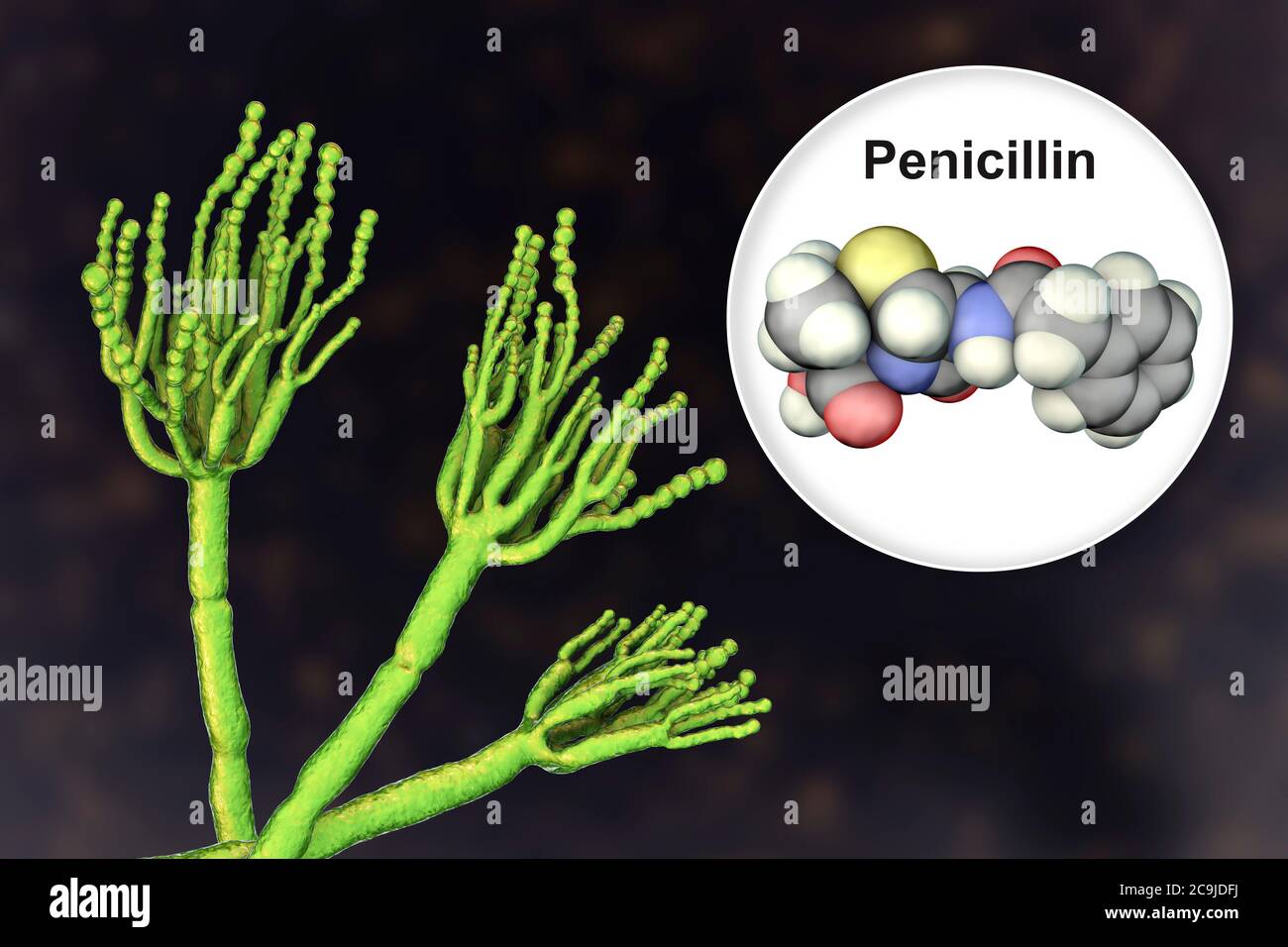 Penicillium fungus and molecule of penicillin antibiotic. Computer illustration of a Penicillium sp. fungus. Specialised threads, called conidiophores Stock Photohttps://www.alamy.com/image-license-details/?v=1https://www.alamy.com/penicillium-fungus-and-molecule-of-penicillin-antibiotic-computer-illustration-of-a-penicillium-sp-fungus-specialised-threads-called-conidiophores-image367355398.html
Penicillium fungus and molecule of penicillin antibiotic. Computer illustration of a Penicillium sp. fungus. Specialised threads, called conidiophores Stock Photohttps://www.alamy.com/image-license-details/?v=1https://www.alamy.com/penicillium-fungus-and-molecule-of-penicillin-antibiotic-computer-illustration-of-a-penicillium-sp-fungus-specialised-threads-called-conidiophores-image367355398.htmlRF2C9JDFJ–Penicillium fungus and molecule of penicillin antibiotic. Computer illustration of a Penicillium sp. fungus. Specialised threads, called conidiophores
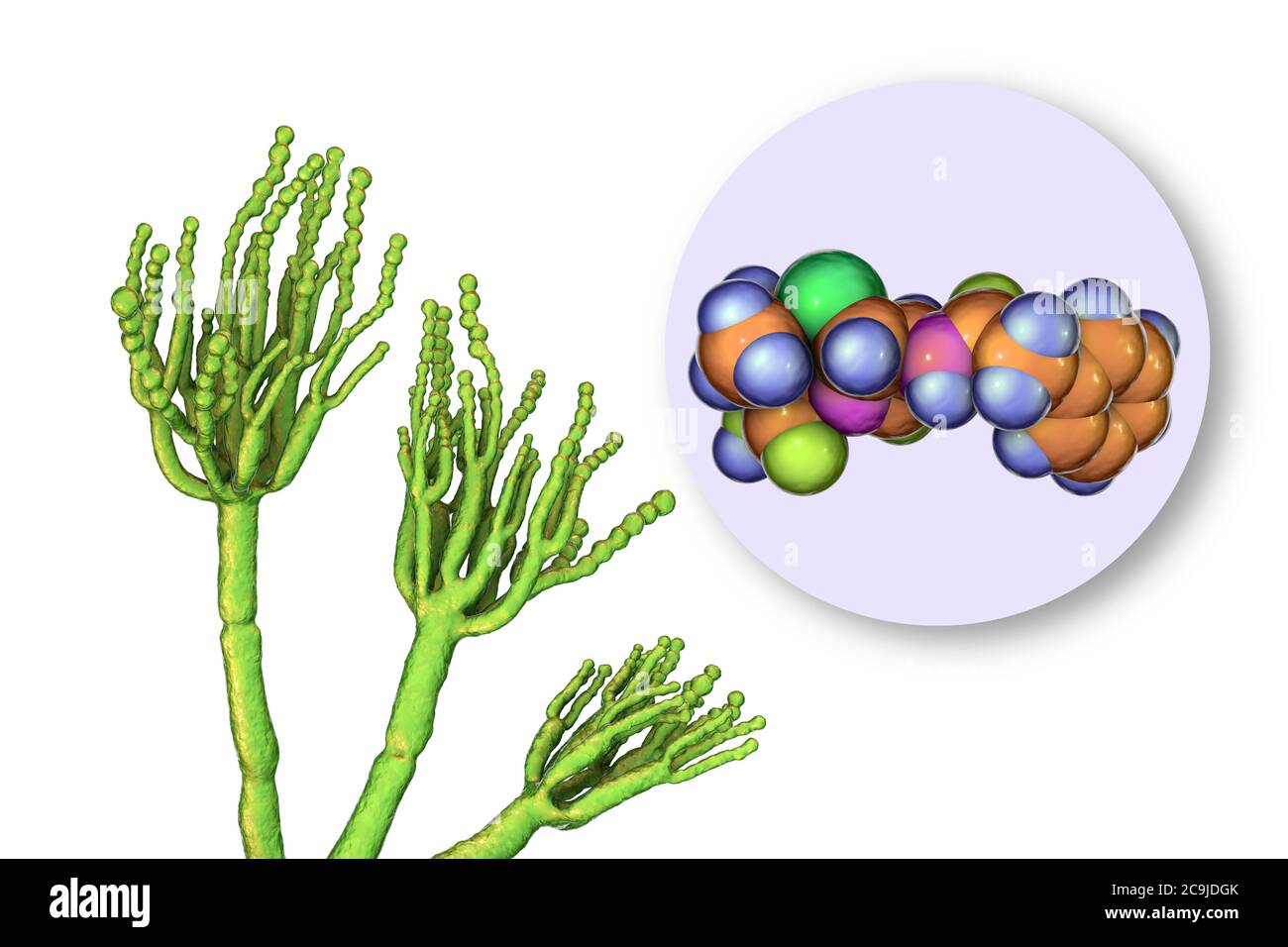 Penicillium fungus and molecule of penicillin antibiotic. Computer illustration of a Penicillium sp. fungus. Specialised threads, called conidiophores Stock Photohttps://www.alamy.com/image-license-details/?v=1https://www.alamy.com/penicillium-fungus-and-molecule-of-penicillin-antibiotic-computer-illustration-of-a-penicillium-sp-fungus-specialised-threads-called-conidiophores-image367355427.html
Penicillium fungus and molecule of penicillin antibiotic. Computer illustration of a Penicillium sp. fungus. Specialised threads, called conidiophores Stock Photohttps://www.alamy.com/image-license-details/?v=1https://www.alamy.com/penicillium-fungus-and-molecule-of-penicillin-antibiotic-computer-illustration-of-a-penicillium-sp-fungus-specialised-threads-called-conidiophores-image367355427.htmlRF2C9JDGK–Penicillium fungus and molecule of penicillin antibiotic. Computer illustration of a Penicillium sp. fungus. Specialised threads, called conidiophores
 Penicillium fungus. Computer illustration of a Penicillium sp. fungus. Specialised threads, called conidiophores, are seen. Bunches of spores, called Stock Photohttps://www.alamy.com/image-license-details/?v=1https://www.alamy.com/penicillium-fungus-computer-illustration-of-a-penicillium-sp-fungus-specialised-threads-called-conidiophores-are-seen-bunches-of-spores-called-image367355432.html
Penicillium fungus. Computer illustration of a Penicillium sp. fungus. Specialised threads, called conidiophores, are seen. Bunches of spores, called Stock Photohttps://www.alamy.com/image-license-details/?v=1https://www.alamy.com/penicillium-fungus-computer-illustration-of-a-penicillium-sp-fungus-specialised-threads-called-conidiophores-are-seen-bunches-of-spores-called-image367355432.htmlRF2C9JDGT–Penicillium fungus. Computer illustration of a Penicillium sp. fungus. Specialised threads, called conidiophores, are seen. Bunches of spores, called
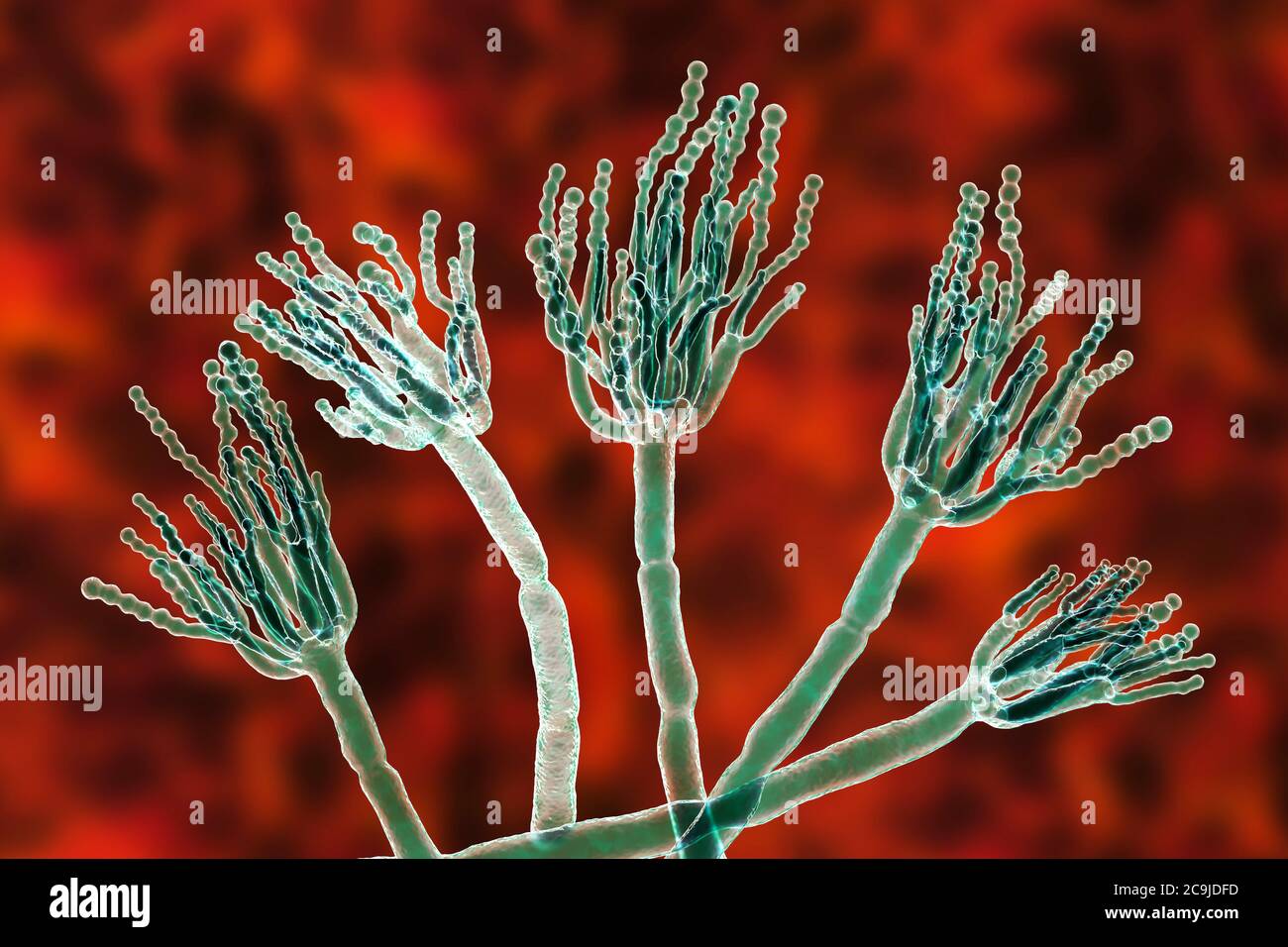 Penicillium fungus. Computer illustration of a Penicillium sp. fungus. Specialised threads, called conidiophores, are seen. Bunches of spores, called Stock Photohttps://www.alamy.com/image-license-details/?v=1https://www.alamy.com/penicillium-fungus-computer-illustration-of-a-penicillium-sp-fungus-specialised-threads-called-conidiophores-are-seen-bunches-of-spores-called-image367355393.html
Penicillium fungus. Computer illustration of a Penicillium sp. fungus. Specialised threads, called conidiophores, are seen. Bunches of spores, called Stock Photohttps://www.alamy.com/image-license-details/?v=1https://www.alamy.com/penicillium-fungus-computer-illustration-of-a-penicillium-sp-fungus-specialised-threads-called-conidiophores-are-seen-bunches-of-spores-called-image367355393.htmlRF2C9JDFD–Penicillium fungus. Computer illustration of a Penicillium sp. fungus. Specialised threads, called conidiophores, are seen. Bunches of spores, called
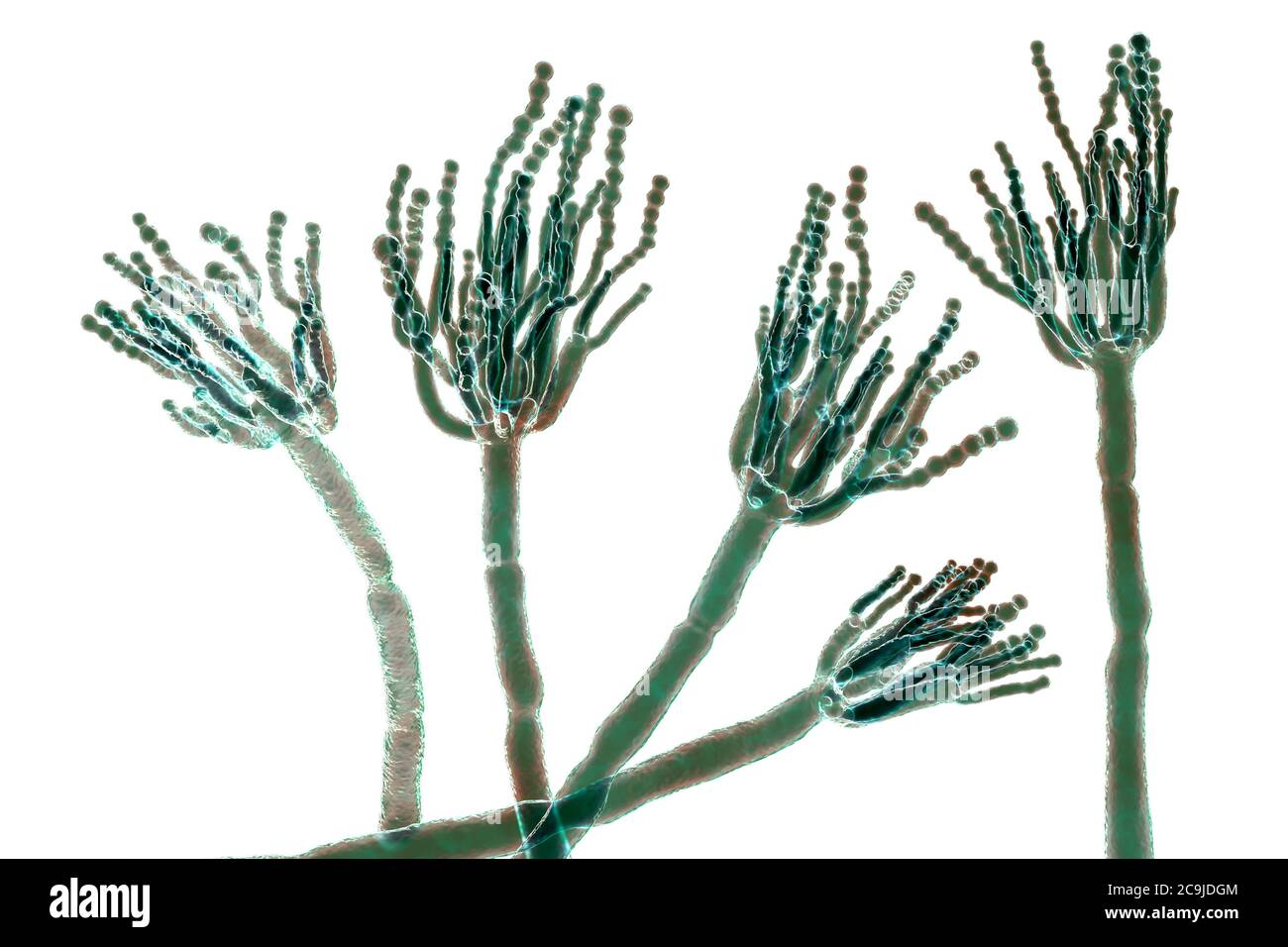 Penicillium fungus. Computer illustration of a Penicillium sp. fungus. Specialised threads, called conidiophores, are seen. Bunches of spores, called Stock Photohttps://www.alamy.com/image-license-details/?v=1https://www.alamy.com/penicillium-fungus-computer-illustration-of-a-penicillium-sp-fungus-specialised-threads-called-conidiophores-are-seen-bunches-of-spores-called-image367355428.html
Penicillium fungus. Computer illustration of a Penicillium sp. fungus. Specialised threads, called conidiophores, are seen. Bunches of spores, called Stock Photohttps://www.alamy.com/image-license-details/?v=1https://www.alamy.com/penicillium-fungus-computer-illustration-of-a-penicillium-sp-fungus-specialised-threads-called-conidiophores-are-seen-bunches-of-spores-called-image367355428.htmlRF2C9JDGM–Penicillium fungus. Computer illustration of a Penicillium sp. fungus. Specialised threads, called conidiophores, are seen. Bunches of spores, called
 Penicillium fungus. Computer illustration of a Penicillium sp. fungus. Specialised threads, called conidiophores, are seen. Bunches of spores, called Stock Photohttps://www.alamy.com/image-license-details/?v=1https://www.alamy.com/penicillium-fungus-computer-illustration-of-a-penicillium-sp-fungus-specialised-threads-called-conidiophores-are-seen-bunches-of-spores-called-image367355386.html
Penicillium fungus. Computer illustration of a Penicillium sp. fungus. Specialised threads, called conidiophores, are seen. Bunches of spores, called Stock Photohttps://www.alamy.com/image-license-details/?v=1https://www.alamy.com/penicillium-fungus-computer-illustration-of-a-penicillium-sp-fungus-specialised-threads-called-conidiophores-are-seen-bunches-of-spores-called-image367355386.htmlRF2C9JDF6–Penicillium fungus. Computer illustration of a Penicillium sp. fungus. Specialised threads, called conidiophores, are seen. Bunches of spores, called
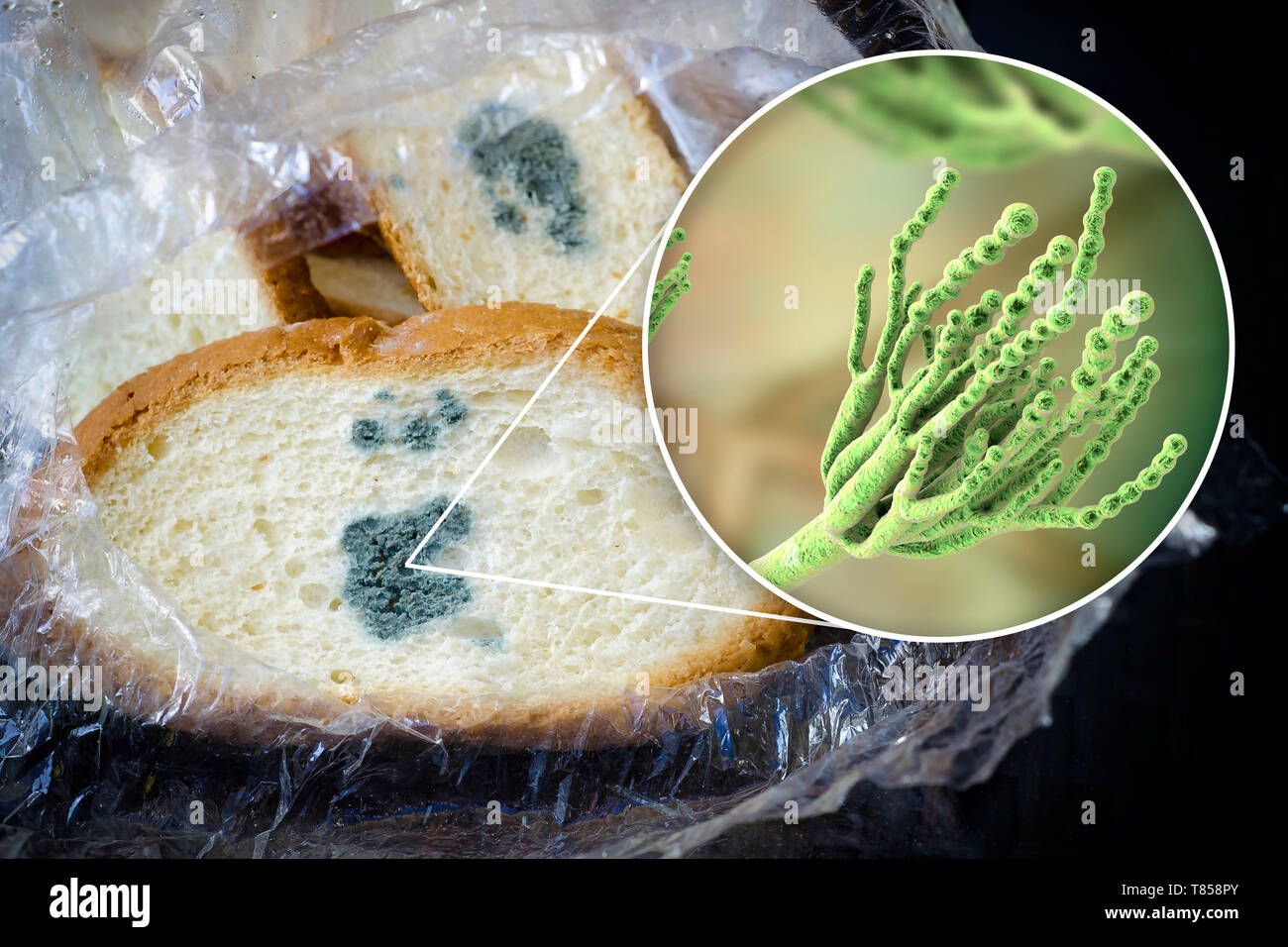 Bread with mould, composite image Stock Photohttps://www.alamy.com/image-license-details/?v=1https://www.alamy.com/bread-with-mould-composite-image-image245979075.html
Bread with mould, composite image Stock Photohttps://www.alamy.com/image-license-details/?v=1https://www.alamy.com/bread-with-mould-composite-image-image245979075.htmlRFT858PY–Bread with mould, composite image
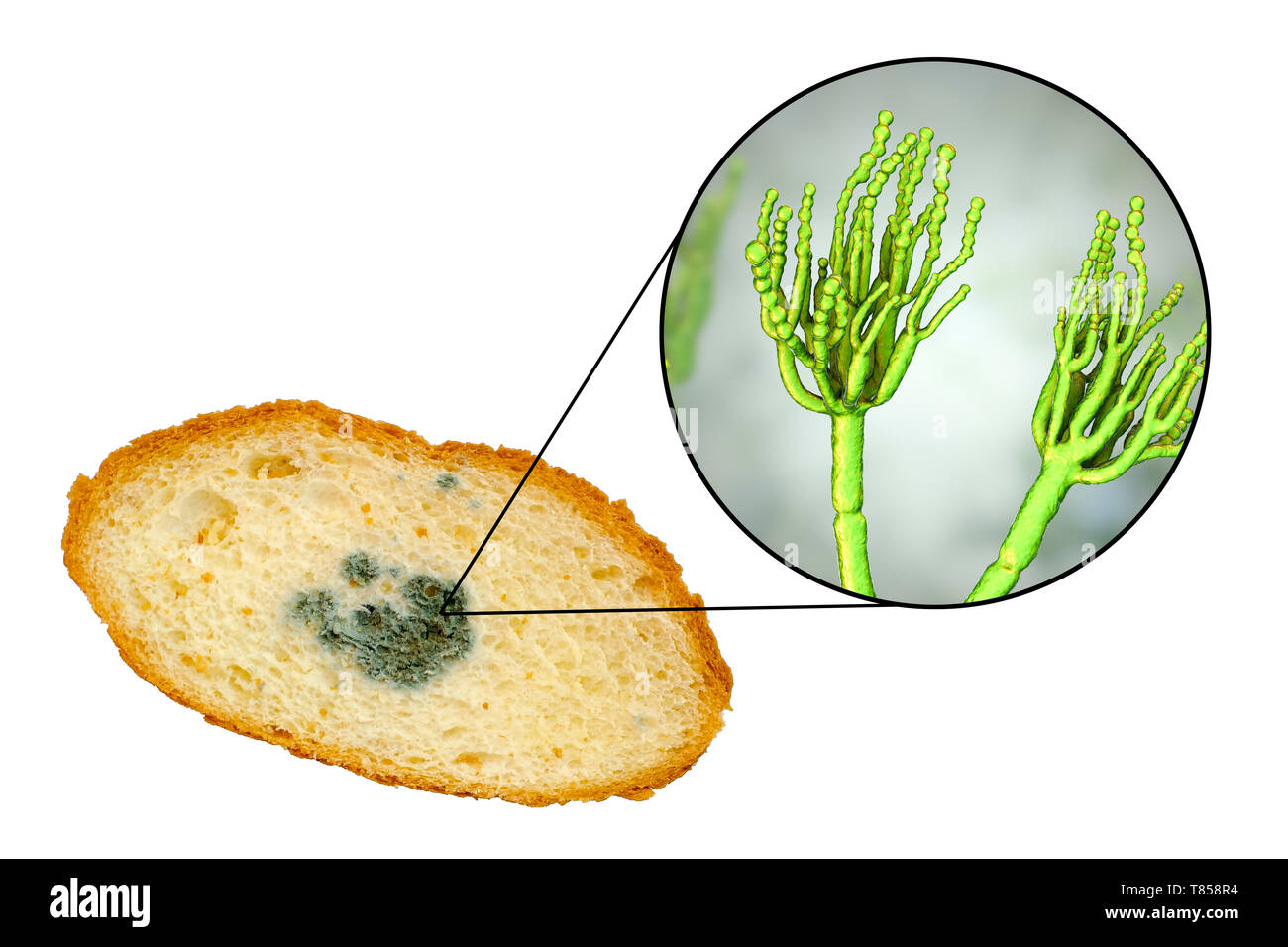 Bread with mould, composite image Stock Photohttps://www.alamy.com/image-license-details/?v=1https://www.alamy.com/bread-with-mould-composite-image-image245979080.html
Bread with mould, composite image Stock Photohttps://www.alamy.com/image-license-details/?v=1https://www.alamy.com/bread-with-mould-composite-image-image245979080.htmlRFT858R4–Bread with mould, composite image
 Bread with mould, composite image Stock Photohttps://www.alamy.com/image-license-details/?v=1https://www.alamy.com/bread-with-mould-composite-image-image245979078.html
Bread with mould, composite image Stock Photohttps://www.alamy.com/image-license-details/?v=1https://www.alamy.com/bread-with-mould-composite-image-image245979078.htmlRFT858R2–Bread with mould, composite image
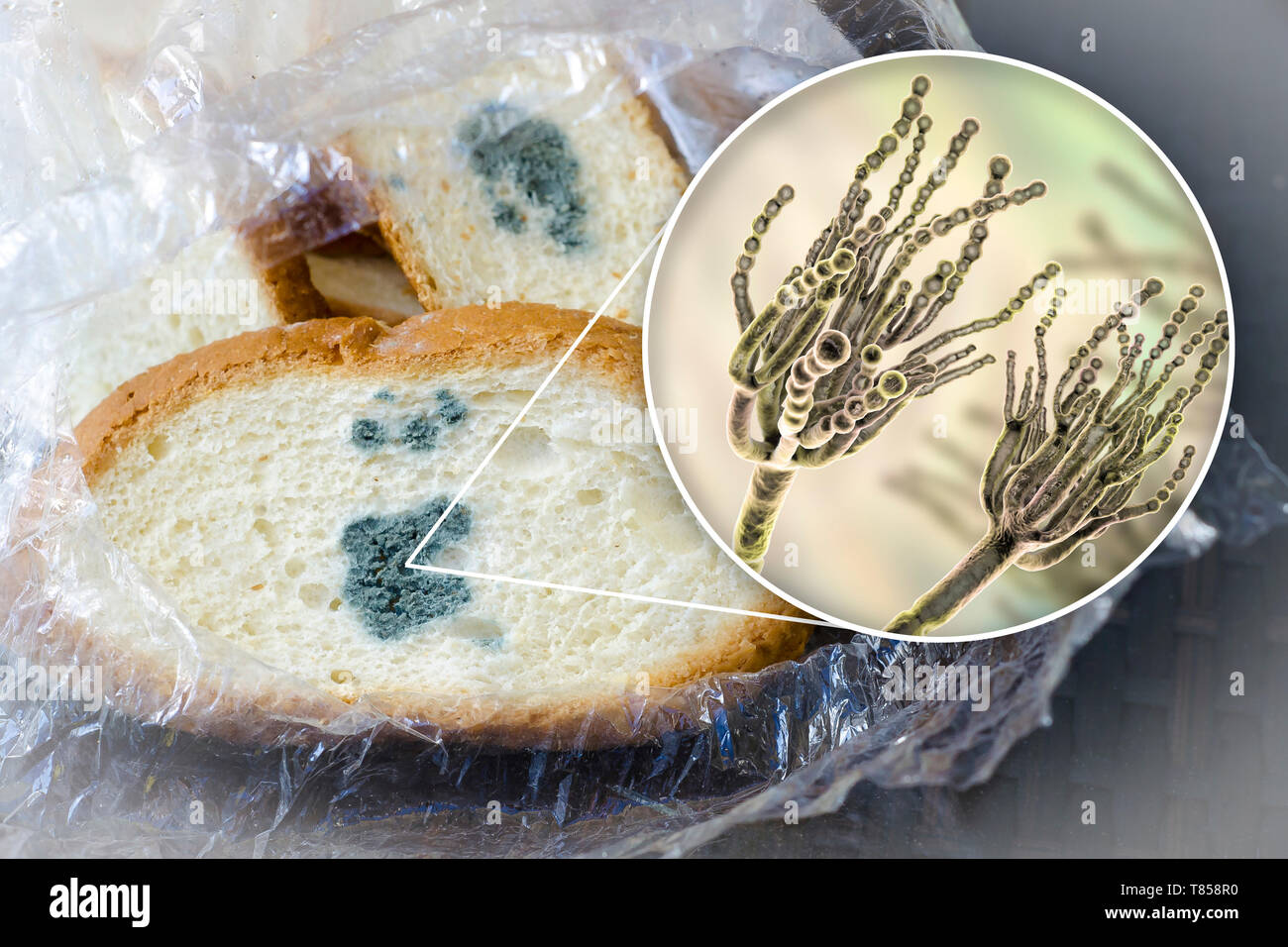 Bread with mould, composite image Stock Photohttps://www.alamy.com/image-license-details/?v=1https://www.alamy.com/bread-with-mould-composite-image-image245979076.html
Bread with mould, composite image Stock Photohttps://www.alamy.com/image-license-details/?v=1https://www.alamy.com/bread-with-mould-composite-image-image245979076.htmlRFT858R0–Bread with mould, composite image
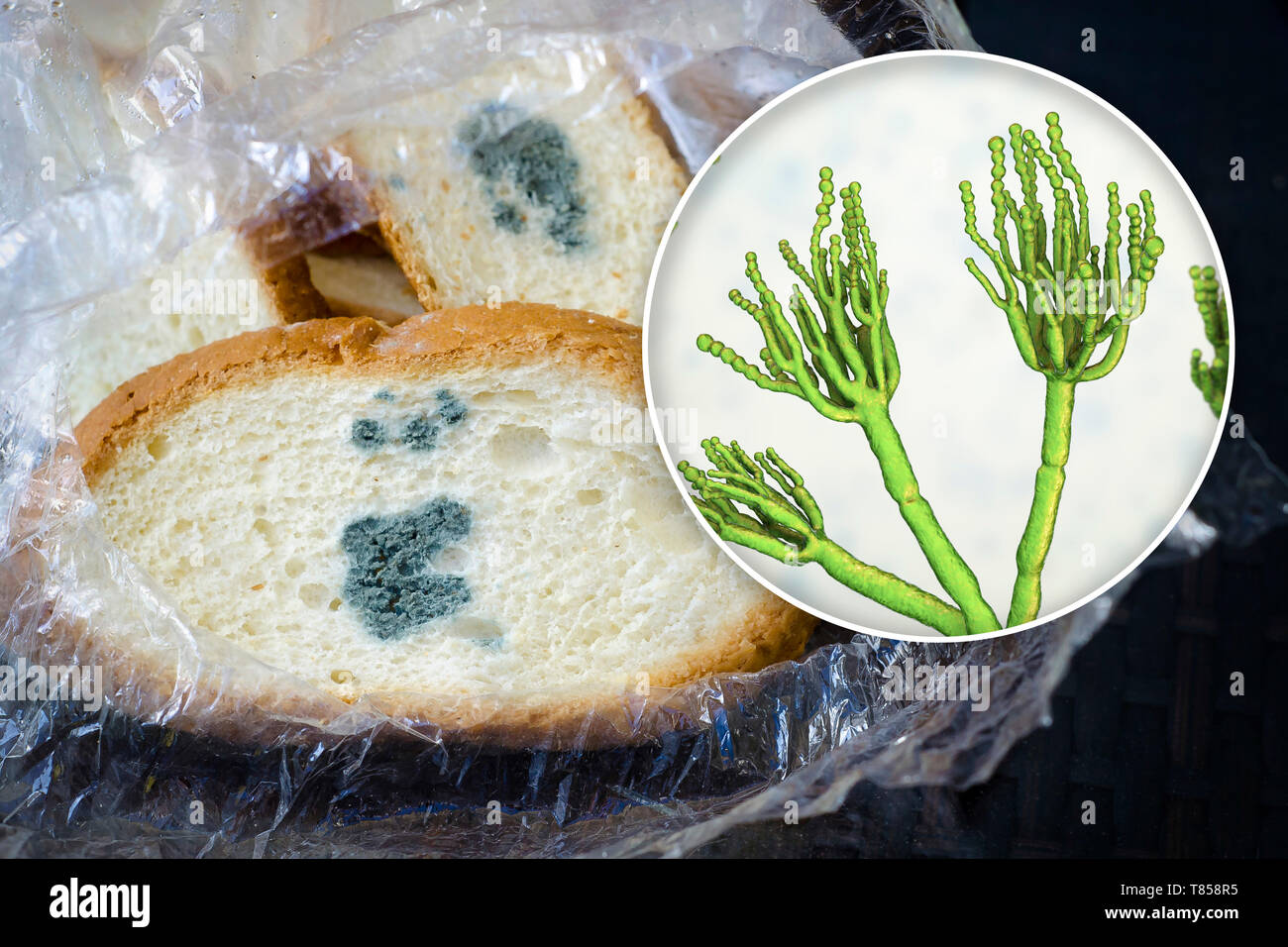 Bread with mould, composite image Stock Photohttps://www.alamy.com/image-license-details/?v=1https://www.alamy.com/bread-with-mould-composite-image-image245979081.html
Bread with mould, composite image Stock Photohttps://www.alamy.com/image-license-details/?v=1https://www.alamy.com/bread-with-mould-composite-image-image245979081.htmlRFT858R5–Bread with mould, composite image
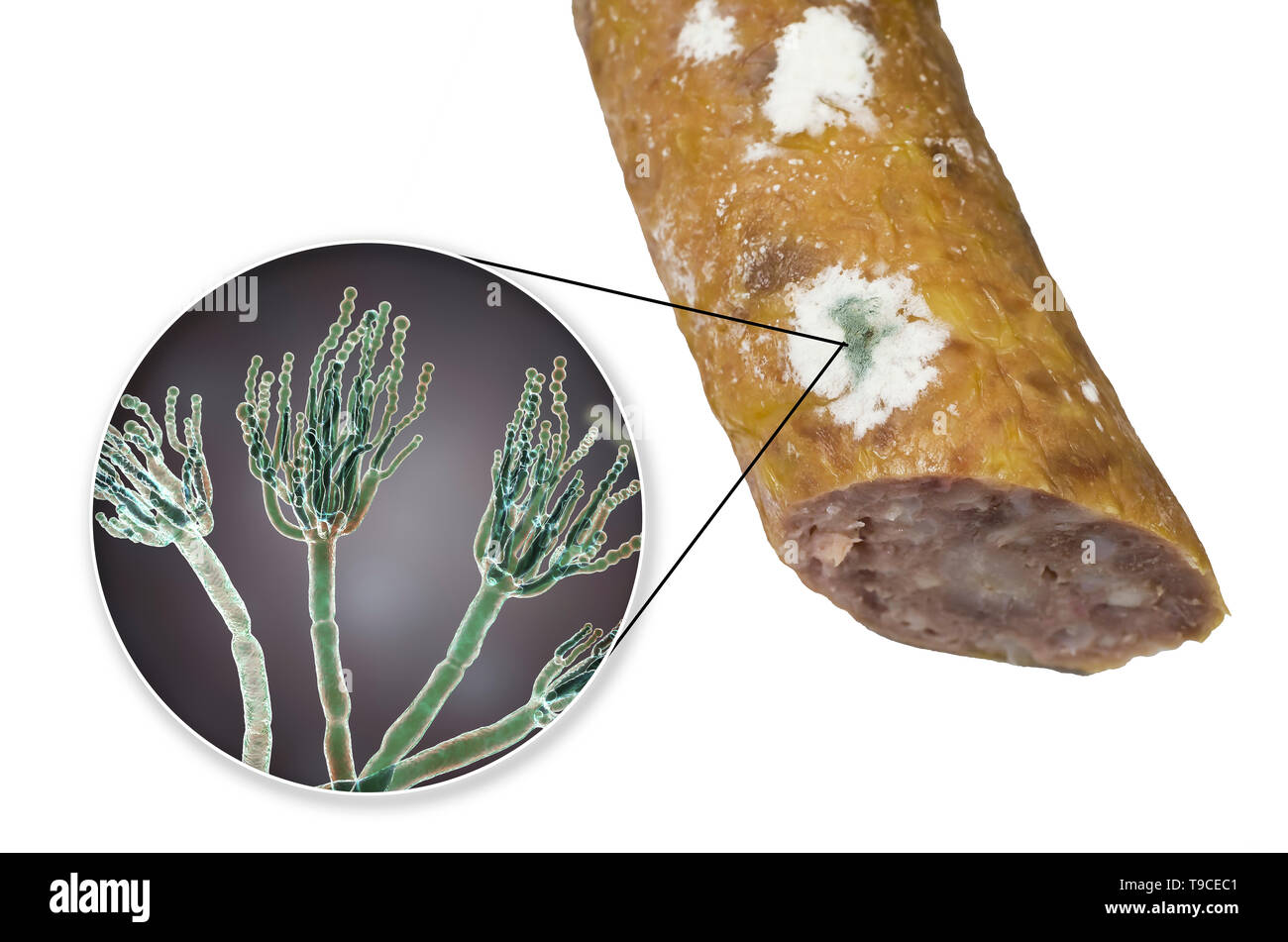 Smoked sausage with mould, composite image Stock Photohttps://www.alamy.com/image-license-details/?v=1https://www.alamy.com/smoked-sausage-with-mould-composite-image-image246751793.html
Smoked sausage with mould, composite image Stock Photohttps://www.alamy.com/image-license-details/?v=1https://www.alamy.com/smoked-sausage-with-mould-composite-image-image246751793.htmlRFT9CEC1–Smoked sausage with mould, composite image
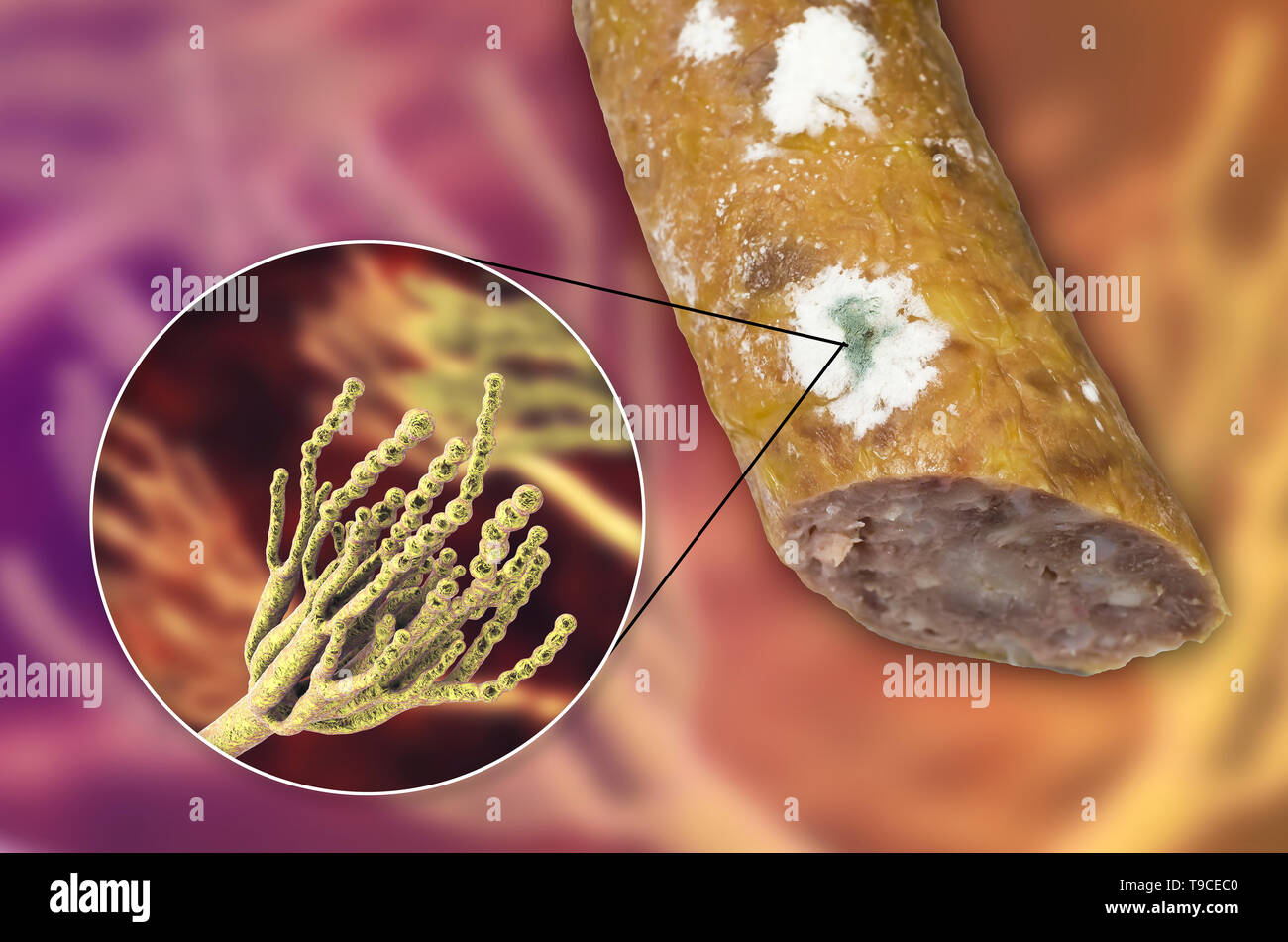 Smoked sausage with mould, composite image Stock Photohttps://www.alamy.com/image-license-details/?v=1https://www.alamy.com/smoked-sausage-with-mould-composite-image-image246751792.html
Smoked sausage with mould, composite image Stock Photohttps://www.alamy.com/image-license-details/?v=1https://www.alamy.com/smoked-sausage-with-mould-composite-image-image246751792.htmlRFT9CEC0–Smoked sausage with mould, composite image
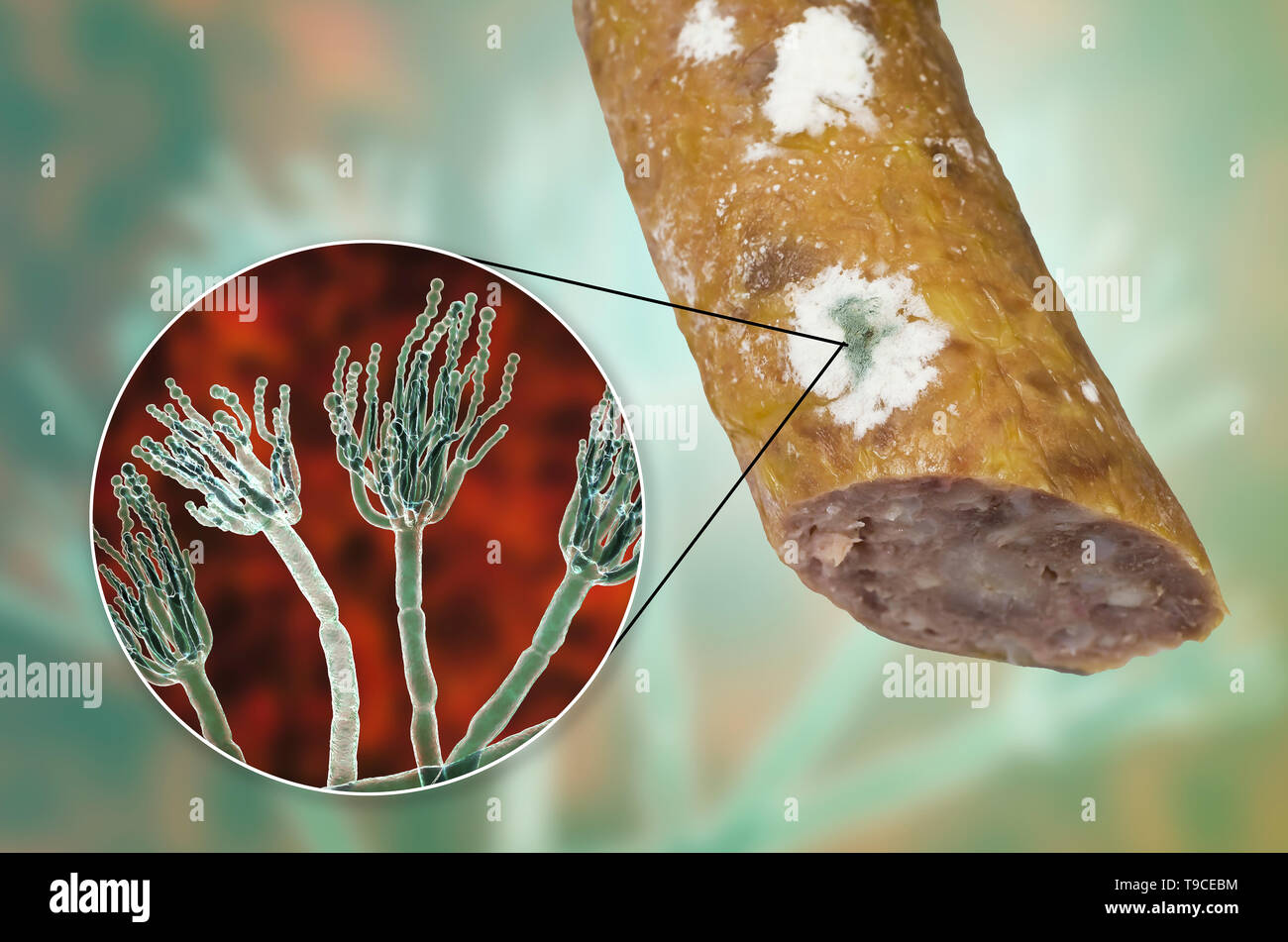 Smoked sausage with mould, composite image Stock Photohttps://www.alamy.com/image-license-details/?v=1https://www.alamy.com/smoked-sausage-with-mould-composite-image-image246751784.html
Smoked sausage with mould, composite image Stock Photohttps://www.alamy.com/image-license-details/?v=1https://www.alamy.com/smoked-sausage-with-mould-composite-image-image246751784.htmlRFT9CEBM–Smoked sausage with mould, composite image
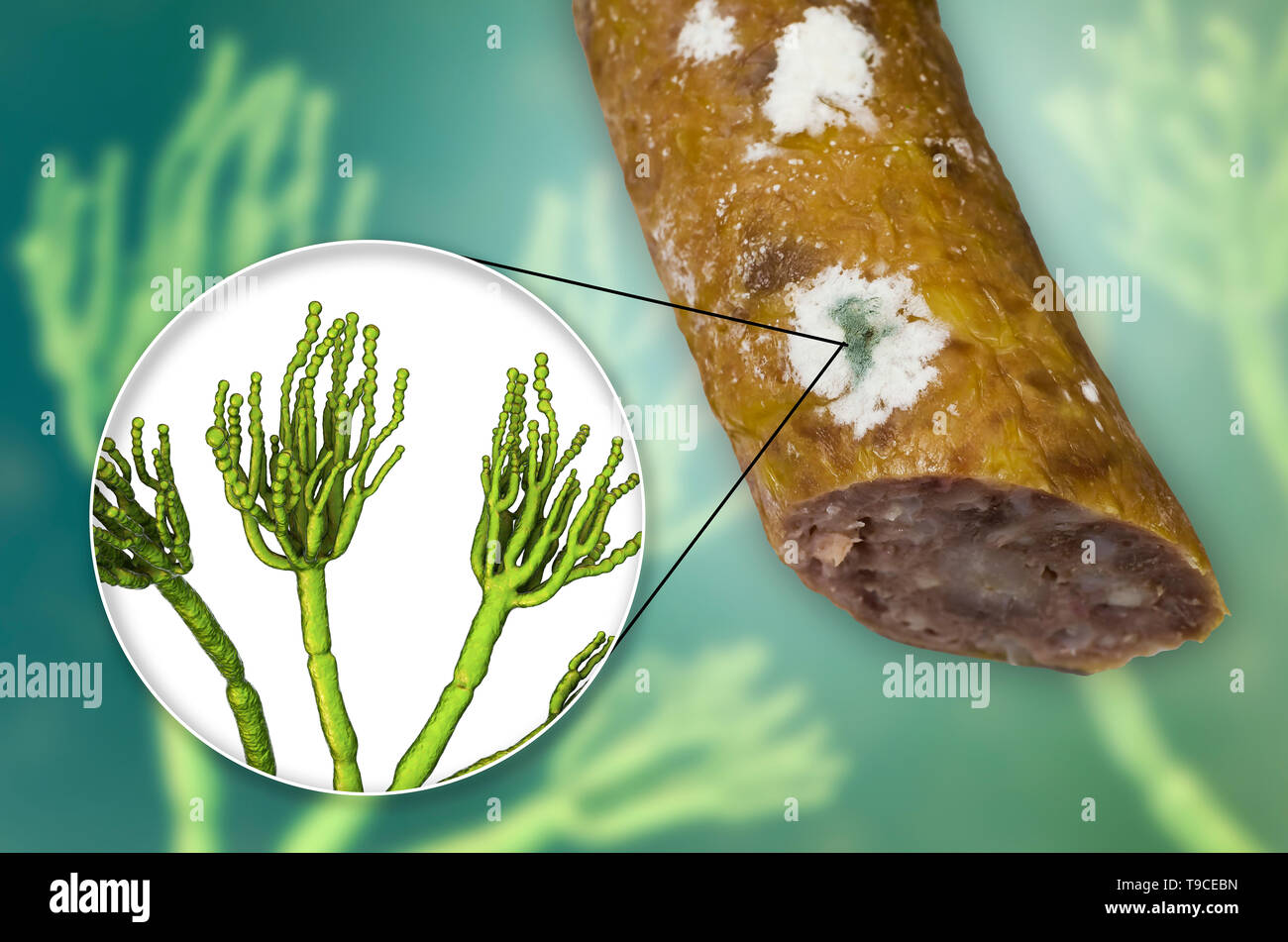 Smoked sausage with mould, composite image Stock Photohttps://www.alamy.com/image-license-details/?v=1https://www.alamy.com/smoked-sausage-with-mould-composite-image-image246751785.html
Smoked sausage with mould, composite image Stock Photohttps://www.alamy.com/image-license-details/?v=1https://www.alamy.com/smoked-sausage-with-mould-composite-image-image246751785.htmlRFT9CEBN–Smoked sausage with mould, composite image
 Smoked sausage with mould, composite image Stock Photohttps://www.alamy.com/image-license-details/?v=1https://www.alamy.com/smoked-sausage-with-mould-composite-image-image246751788.html
Smoked sausage with mould, composite image Stock Photohttps://www.alamy.com/image-license-details/?v=1https://www.alamy.com/smoked-sausage-with-mould-composite-image-image246751788.htmlRFT9CEBT–Smoked sausage with mould, composite image
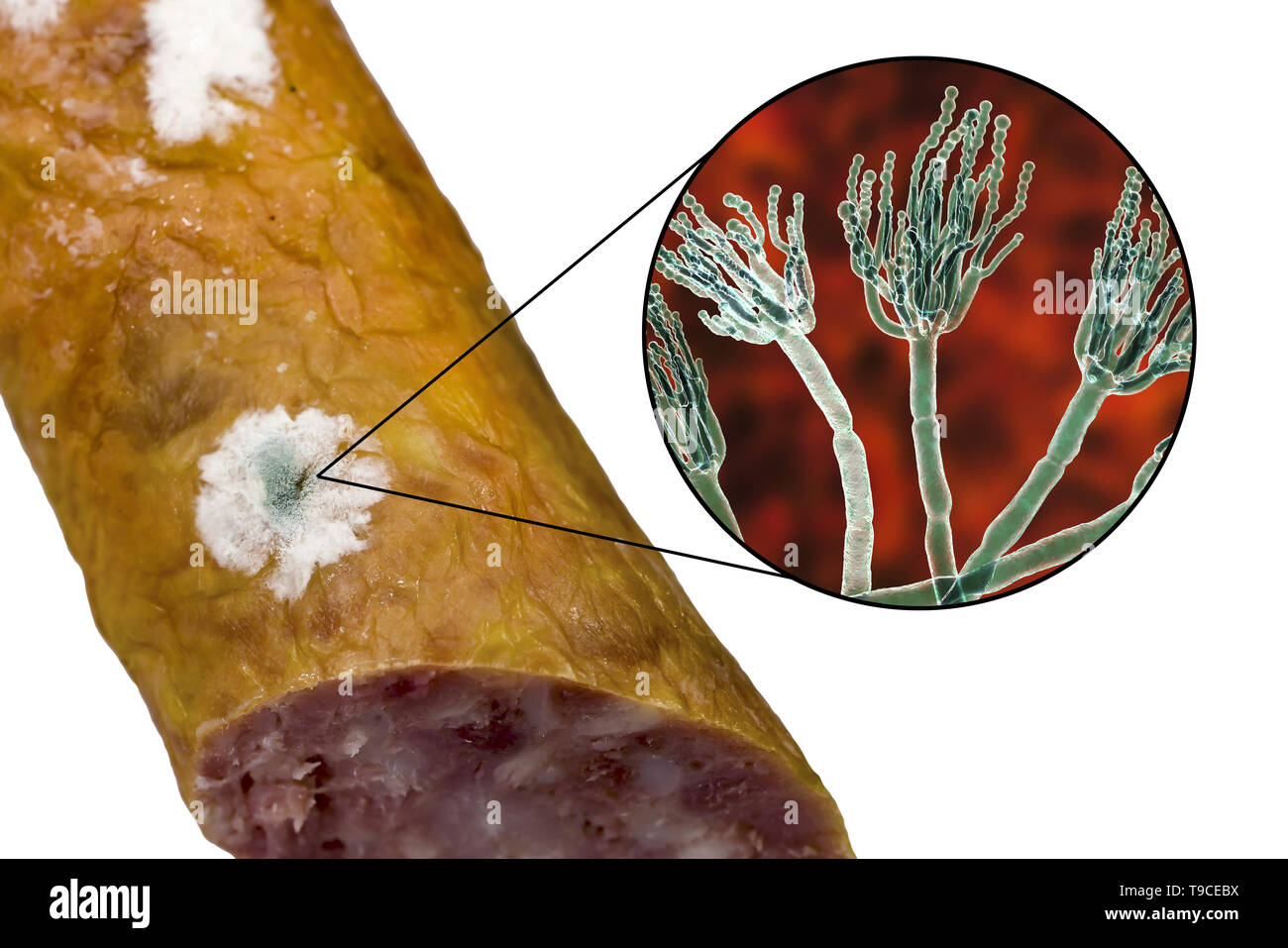 Smoked sausage with mould, composite image Stock Photohttps://www.alamy.com/image-license-details/?v=1https://www.alamy.com/smoked-sausage-with-mould-composite-image-image246751790.html
Smoked sausage with mould, composite image Stock Photohttps://www.alamy.com/image-license-details/?v=1https://www.alamy.com/smoked-sausage-with-mould-composite-image-image246751790.htmlRFT9CEBX–Smoked sausage with mould, composite image
 Smoked sausage with mould, composite image Stock Photohttps://www.alamy.com/image-license-details/?v=1https://www.alamy.com/smoked-sausage-with-mould-composite-image-image246751768.html
Smoked sausage with mould, composite image Stock Photohttps://www.alamy.com/image-license-details/?v=1https://www.alamy.com/smoked-sausage-with-mould-composite-image-image246751768.htmlRFT9CEB4–Smoked sausage with mould, composite image
